By far, the biggest museum in the Columbia area is the South Carolina State Museum. It is HUGE! It’s like 4 museums in one plus a planetarium, a 4D theater, and an observatory. And that’s not even counting the Confederate Relic Room & Military Museum housed in the same building.
I visited the State Museum on a normal weekday, arrived even a little before it opened at 10 am, stayed all day long, and was still rushing through exhibits during the last hour before it closed at 5 pm. Now, I had planned to spend all day, so I took my time. I watched all the video clips and read all the signs. Plus, I watched two shows which took a little out of my touring time. But still, it’s a big museum.
Let’s take it a floor at a time so you know what to expect.
First Floor
The South Carolina State Museum is located in an old cotton mill. This means there are a lot of big open spaces, exposed brick, and work-scarred wood floors. It’s actually pretty cool, but it is a huge building. Walking in the front door is a big open space, with the admission desk tucked next to a large gift shop. (Take note of the old factory time clock nearby.) A big staircase leads upstairs, or there are elevators tucked behind the far wall.
South Carolina State Parks
Tucked to the left of the lobby and the shop is a small exhibit on state parks in South Carolina. Ecosystem displays and photo ops line the walls, and there’s the top of a lighthouse in the middle. A touch screen will help you determine your “park personality.”
Carolina Gallery
A big, mostly empty hallway to the right of the lobby is called the Carolina Gallery. There’s a big threshing wheel/machine part/I don’t know what it is near the entrance; a saber-tooth cat skeleton (smilodon fatalis – I love that) sits in the middle. And a cool folk-art map of South Carolina hangs on one wall, plus smaller signs of notable citizens & companies.
Planetarium
The Carolina Gallery really serves at the hallway to the planetarium, a concrete sphere housed in a glass extension outside the original mill walls. Feel free to walk around the perimeter of the dome – you’ll see a NASA landing shuttle and an art mobile. But to get to your show the quickest, head to the left from the door.
Shows
There are currently three movies at the planetarium. I managed to watch them all: one show on my first visit, then back to watch the other two another day. It costs $5 for the first one, then $3 for each additional.
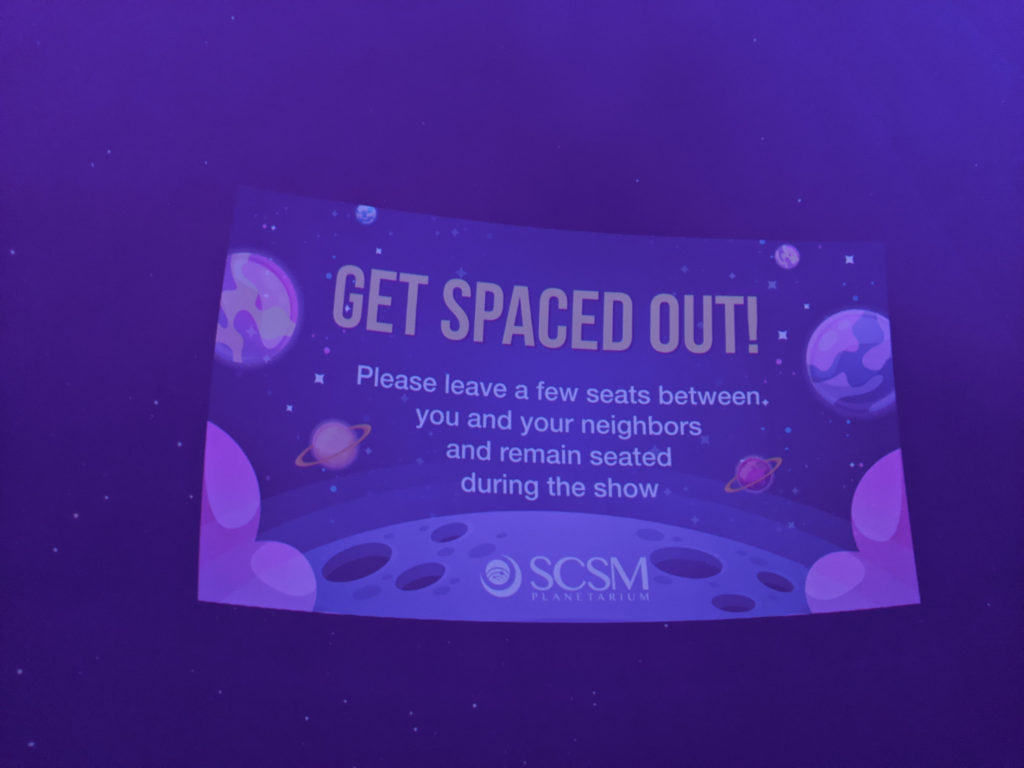
I enjoyed most We Are Stars voiced by Andy Serkis. It’s an explanation of the entire creation of the universe, and the advent of humans told in a very concise, kid-friendly way! It also has the most emotional pull with music and visuals.
A good follow-up to We Are Stars is Black Holes, an older show narrated by John de Lancie (“Q” from Star Trek: The Next Generation.) Some of the chemical processes explained in the first show are built upon in this one, explaining how stars are formed and eventually die.
The third show is National Parks Adventure, narrated by Robert Redford. It’s also terrific, and the only reason I rate it lower is that I had already seen it before in an Imax theater, and it tends to comes across as a 40-minute Subaru commercial. It’s stunning to look at (and the folks in it really athletic), but it doesn’t have enough of a focus on the parks themselves.
Lipscomb Gallery
Tucked back behind the planetarium is an art gallery. The current exhibit is about graphic design with a focus on South Carolina artists. I didn’t realize the highly stylized Obama “HOPE” posters were from a South Carolina creator.
Second Floor
Heading up the stairs from the main lobby, there’s another big open area with a cafe and several meeting rooms. The rooms are covered in the same hand-drawn map I saw the most at the Woodrow Wilson Family Home, which is cool.
Cafe
The cafe is pretty nice. I had a chicken salad croissant combo which includes a drink, chips, and a cookie for about $8. I could have got the chicken salad as a sandwich or a wrap, and there are other options like ham & swiss or grilled cheese, sort of normal lunch stuff. They also have snacks like pretzels, brownies, muffins, candy bars, stuff like that. The cafe is open from 11-2, and you can also leave for lunch and come back.
4D Theater
Next to the cafe is a 4D theater, currently showing two 15-minutes movies. I saw Planet Earth II narrated by David Attenborough on my first visit, and I enjoyed it so much! There are wind and lightning effects, cold air, water, SNOW. The part with the locusts will definitely give you the heebie-jeebies. The folks in the theater actually cheered at the end!
On a later visit, I saw Small Foot, a distillation of the movie of the same name. It had far fewer effects overall but much more snow. It snowed a lot. There are three showings of Small Foot a day and only one of Planet Earth, so I can only assume it’s more popular with families with children. But I enjoyed Planet Earth much more.
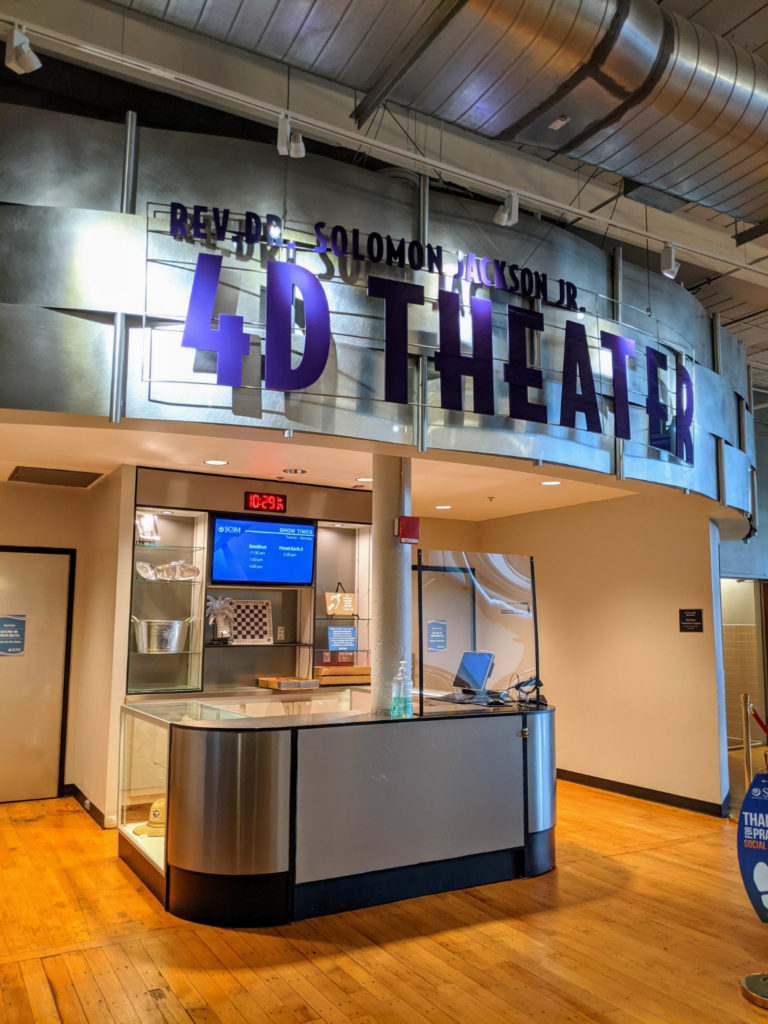
Prehistoric South Carolina
Moving through the doors behind the second-floor mezzanine, you start to get to the real meat of the museum’s collection. Right away, you face off with a massive megalodon shark hanging from the high ceiling in the prehistoric South Carolina section. This floor is all about natural history.
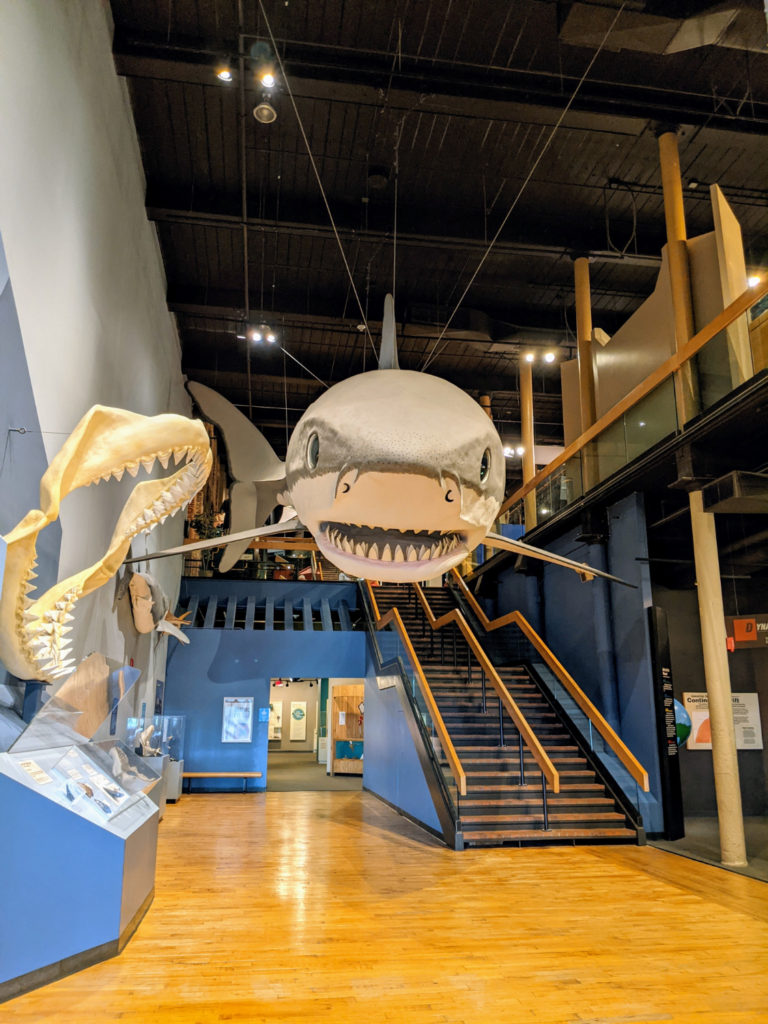
Farther back on this floor are animated displays of photosynthesis, the life and food cycles, and a large room to the right has a huge mastodon, fossils, and other extinct animals. In a back room are dinosaur bones chasing each other around the room.
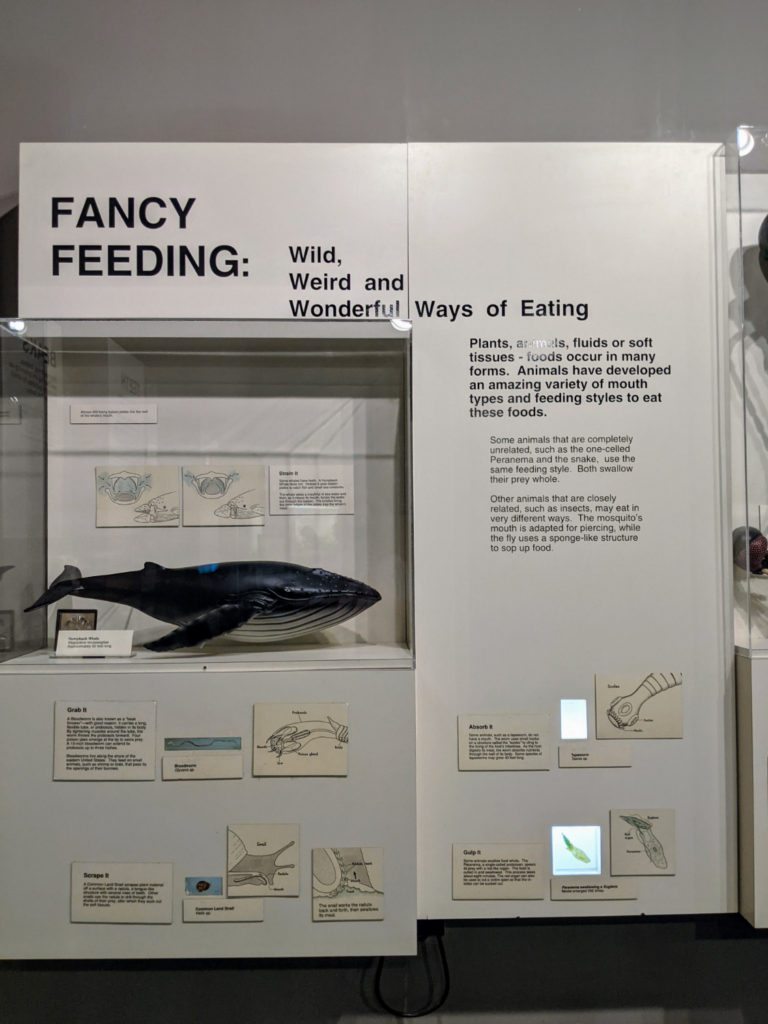
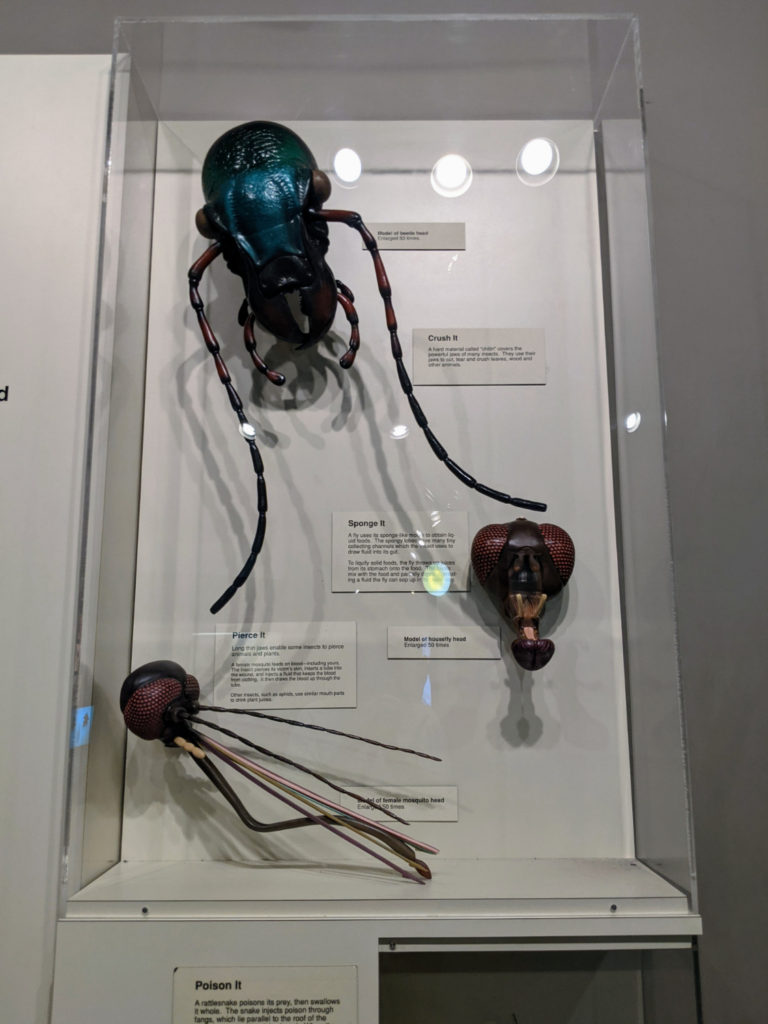
big ants 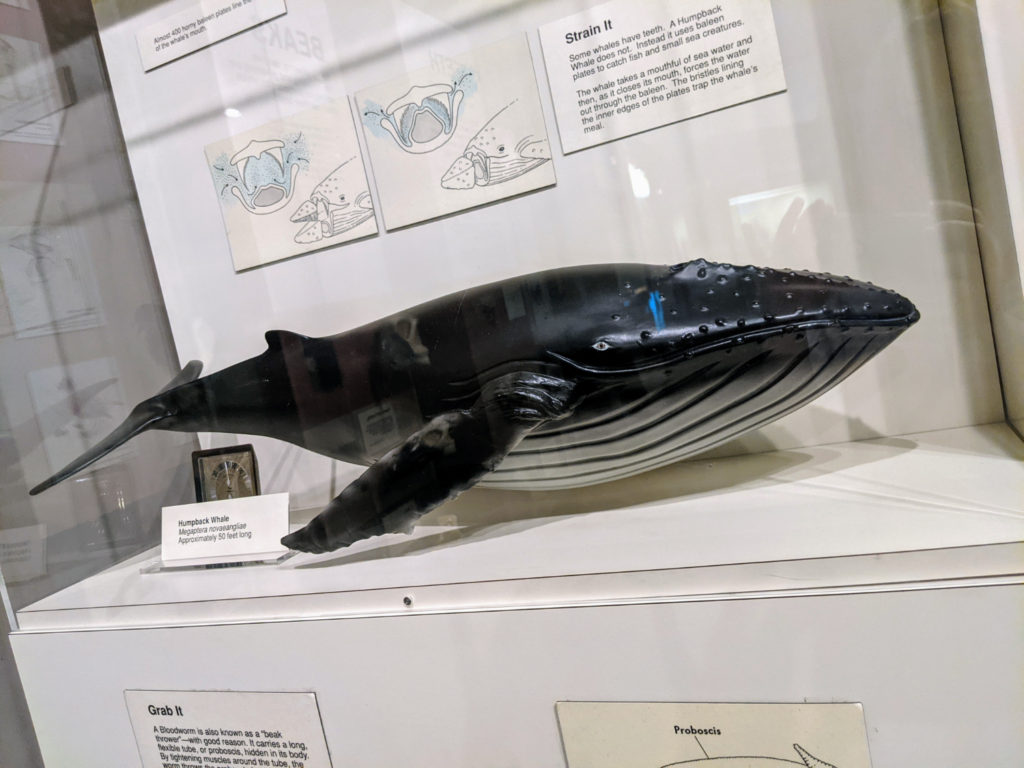
tiny whales 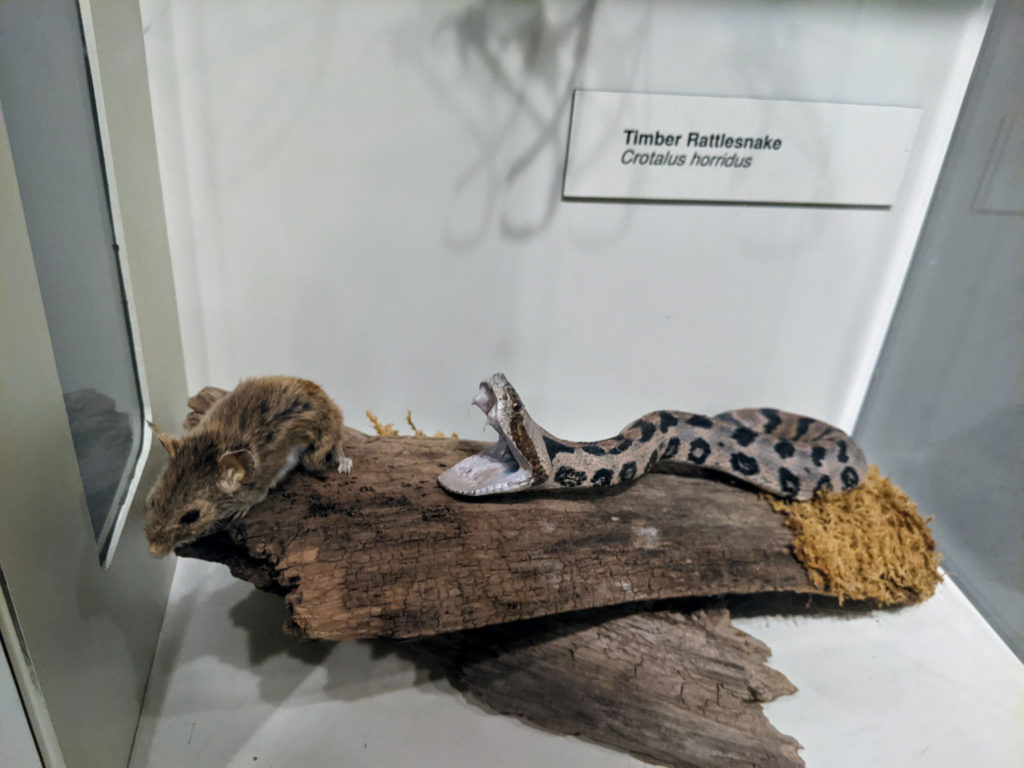
the circle of life 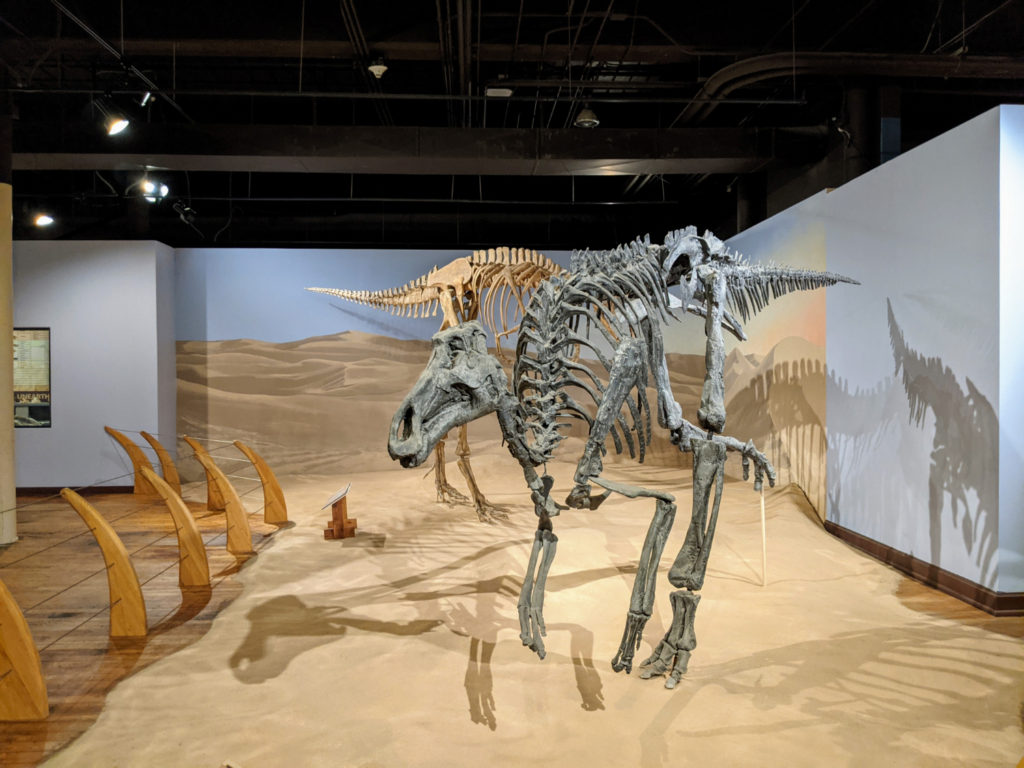
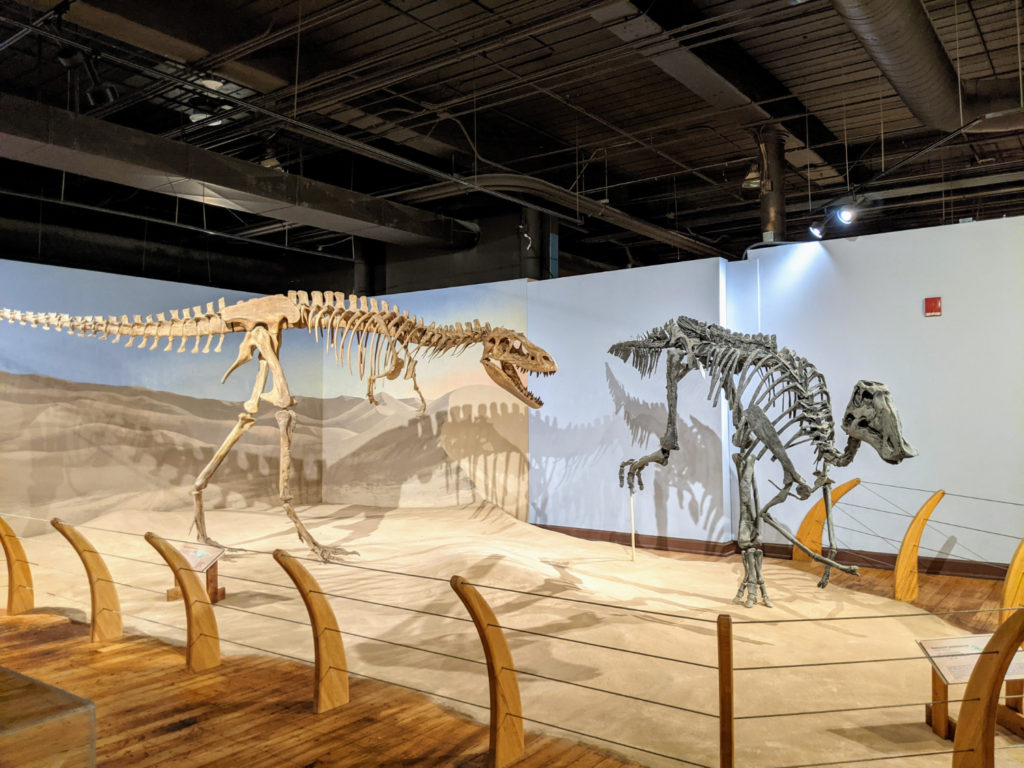
dinosaurs! 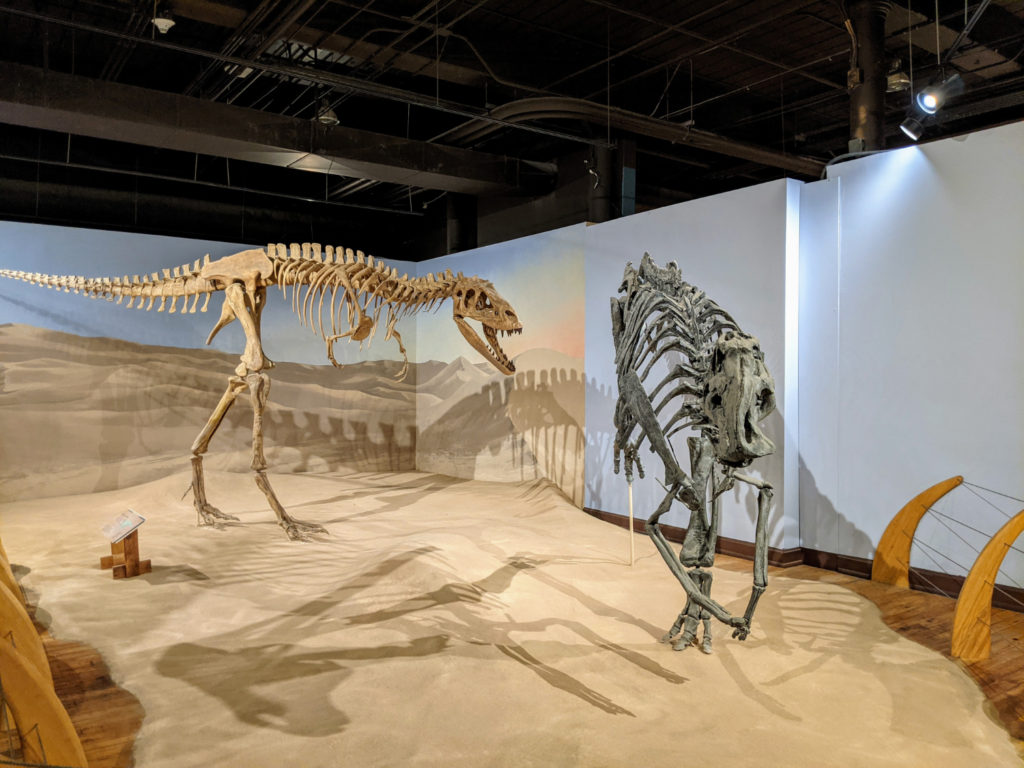
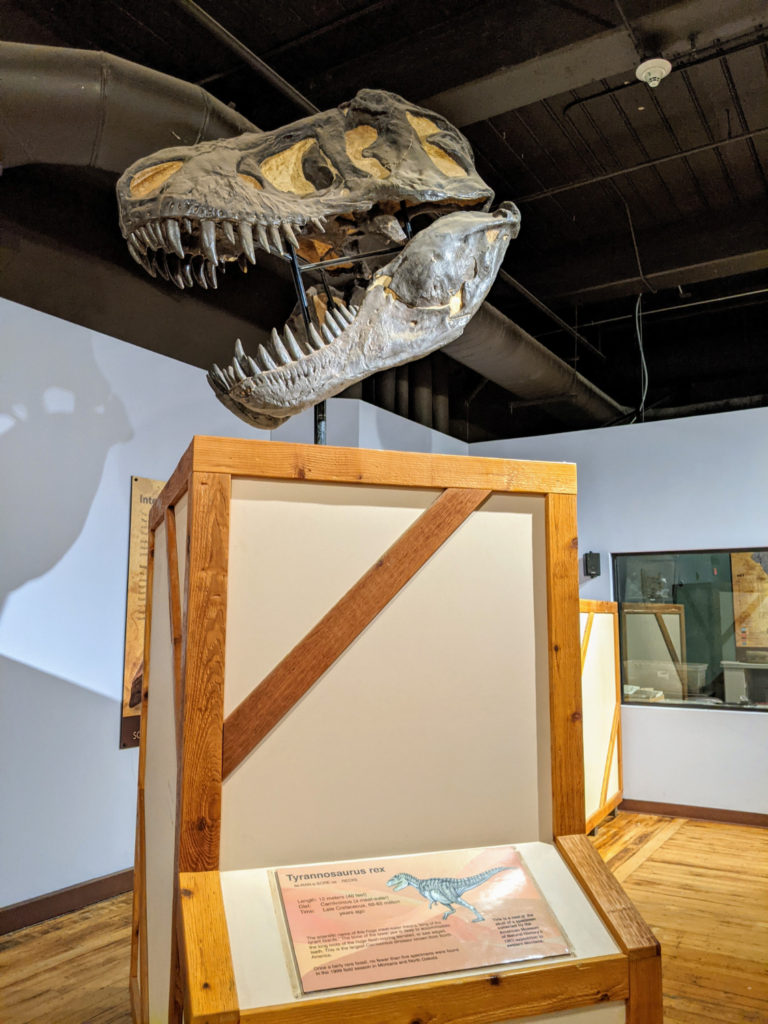
a T-Rex skull 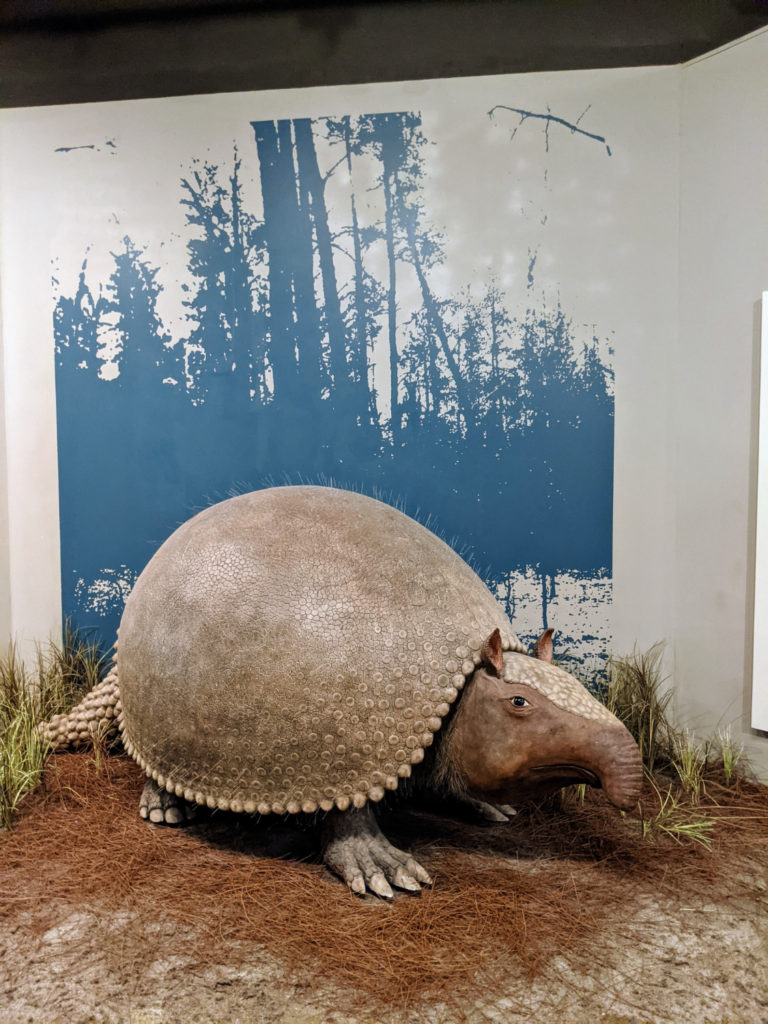
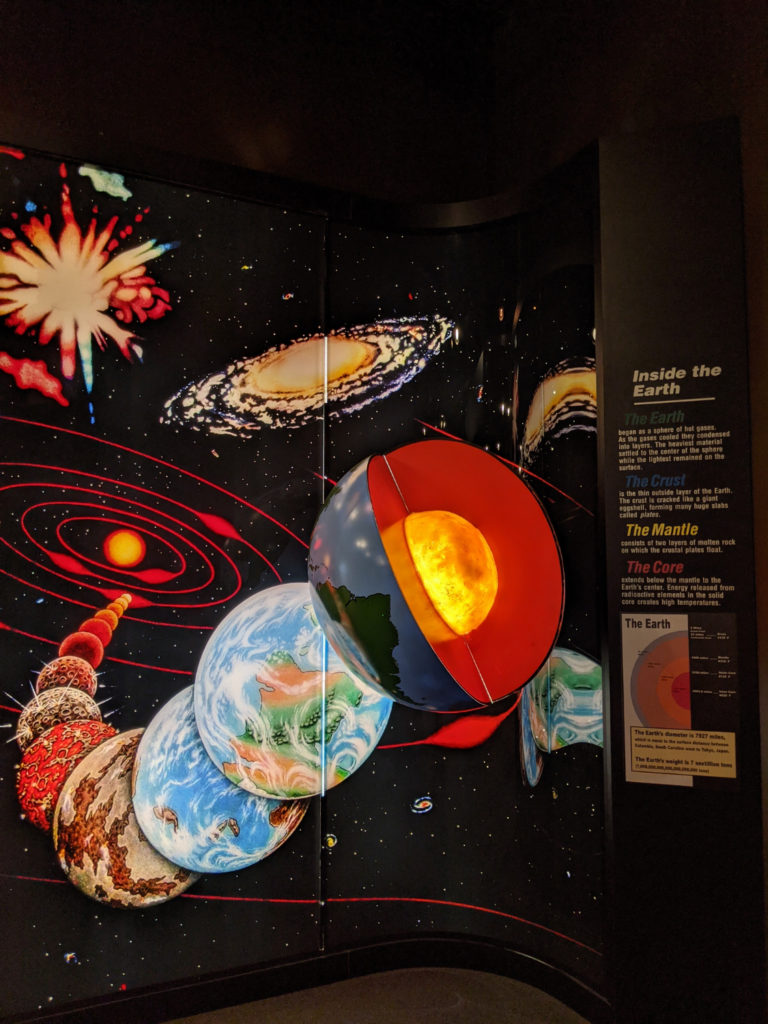
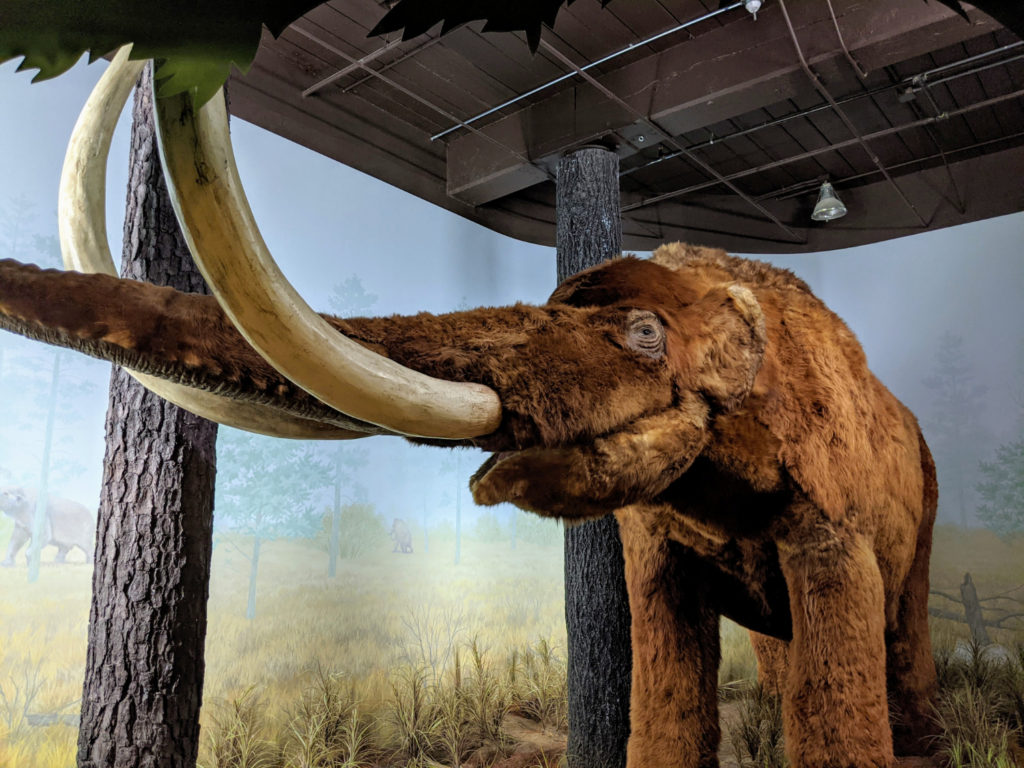
a mastodon
South Carolina Habitats
In the middle of this floor is a gallery of South Carolina Habitats presented as life-size dioramas. (This museum’s diorama game is solid and delightfully old-school!) There’s a forest, streams, a swamp, the coastline, even a suburban backyard.
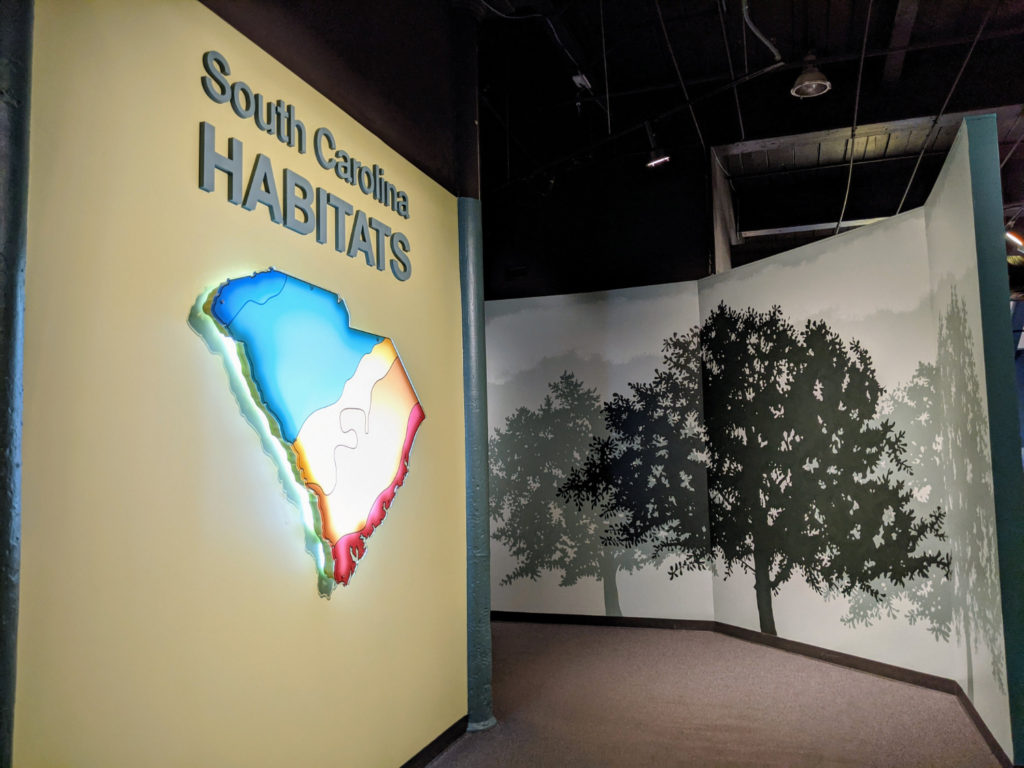
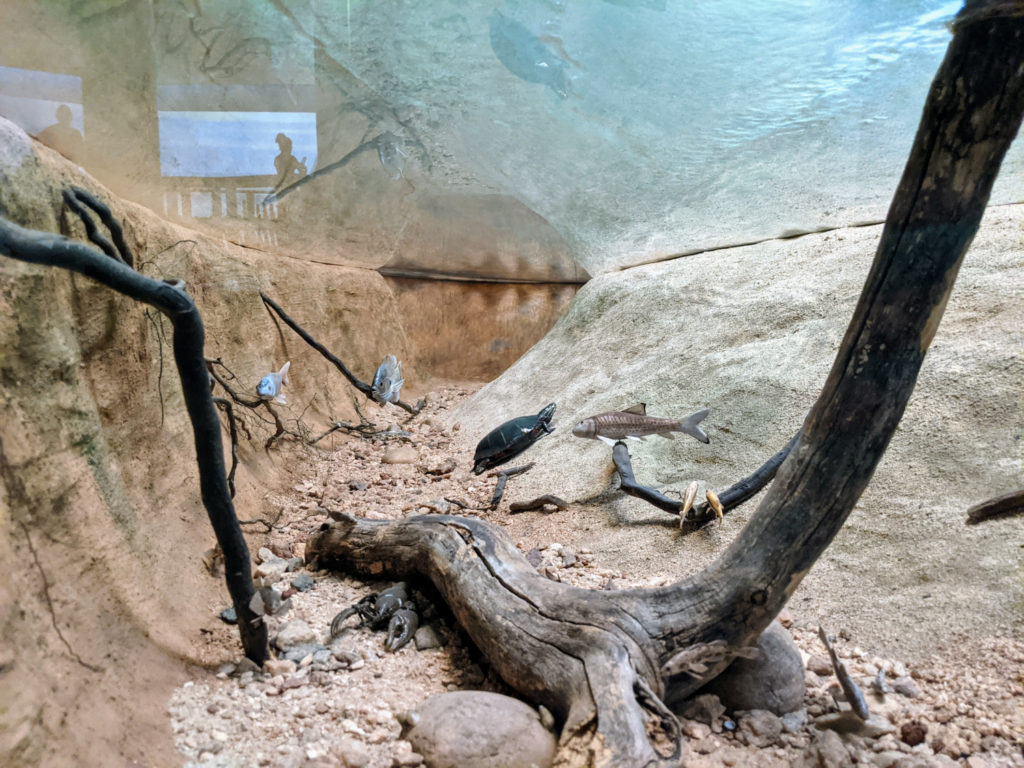
under the stream 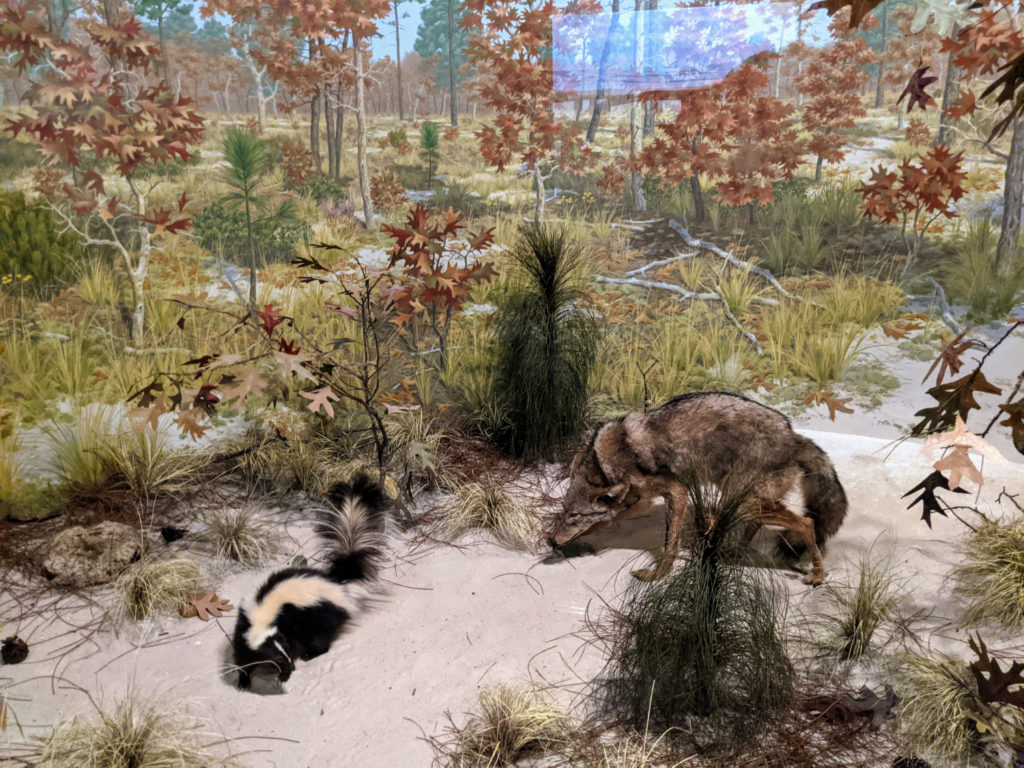
the sandy fall line 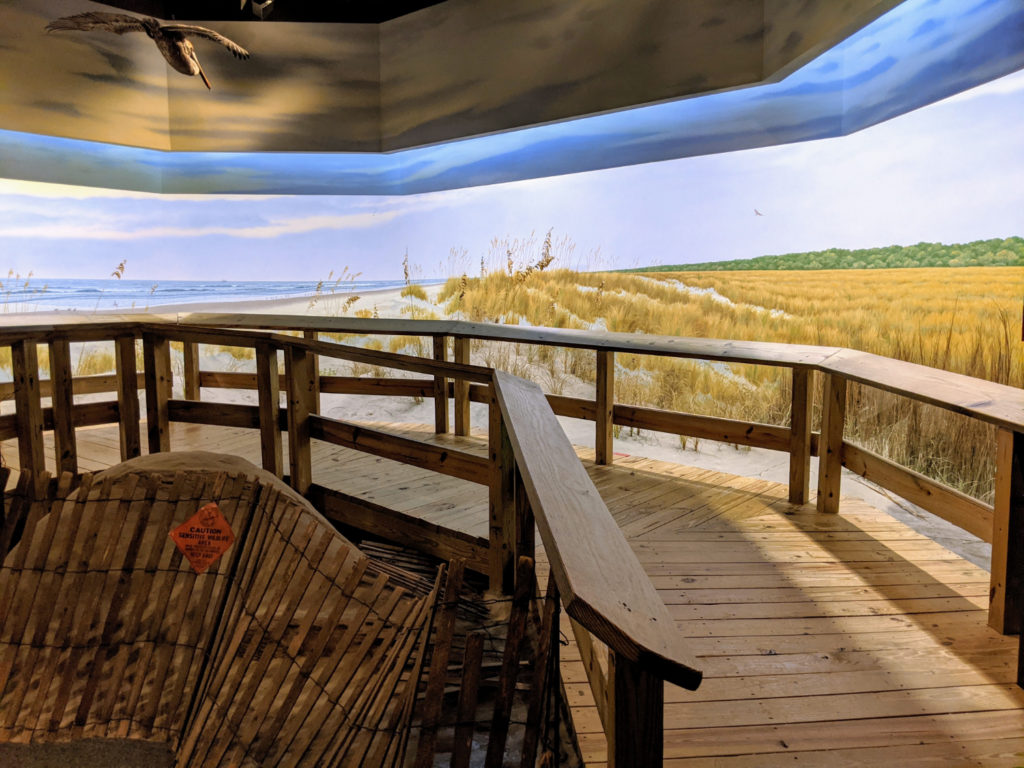
a coastal boardwalk 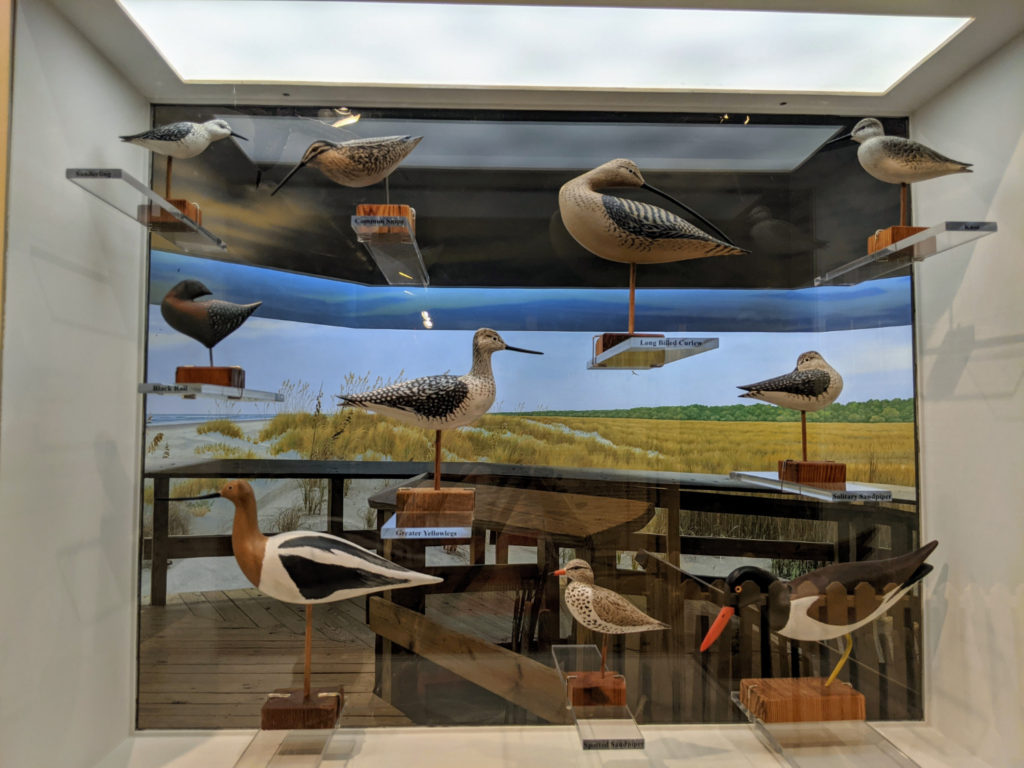
sea birds 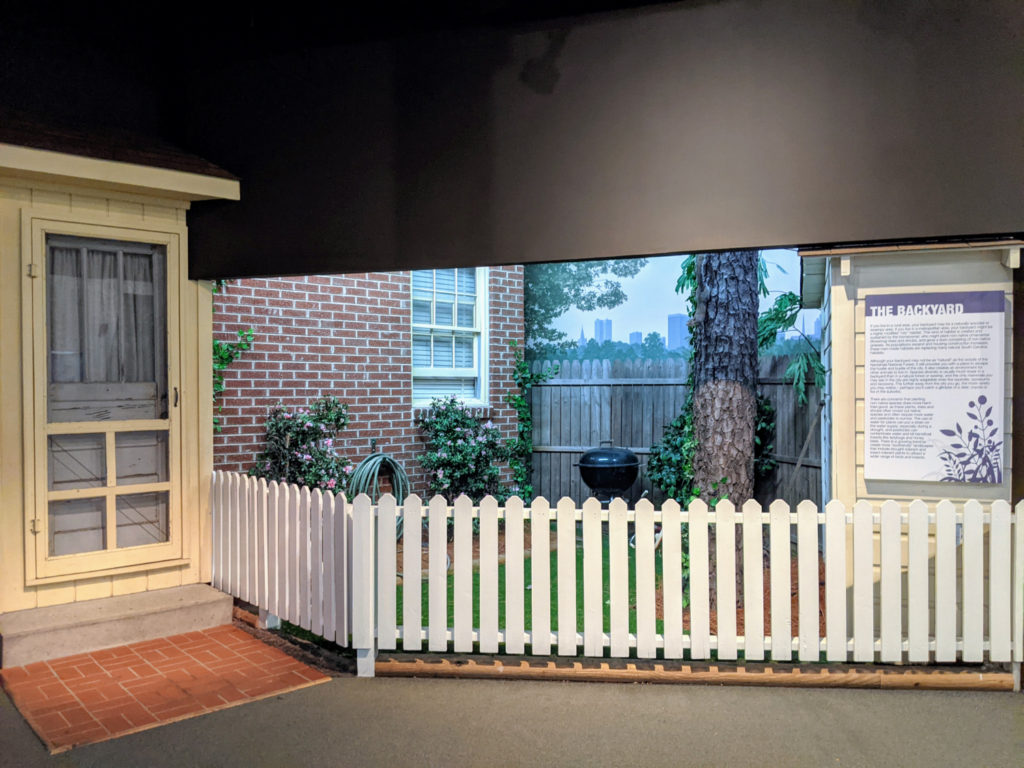
a backyard
You can also access the upper exit of the planetarium on this floor. That is, when you exit the planetarium, you’ll end up here.
Third Floor
Transportation
The 2nd-4th floors sort of nest together in this wing of the building. Stairs under the megalodon lead up to the third floor, and you can head straight to keep going to the fourth. The third floor is dedicated to technology and science. On this floor is a section on transportation, with a recreation of the Best Friend of Charleston, America’s first steam train. Hanging above the stairs to the fourth floor is South Carolina’s first monoplane, built by students inspired by the Wright Brothers.
There’s a model train under the stairs with push-button controls. And if you go through the little cut-through by the elevator, there’s another model train scene and more historic train paraphernalia. Across the way is a partial dug-out canoe, still attached to the root of the tree it was carved from. Behind this are models of riverboats. (I didn’t realize the era of steamboats was so short!)
A scene in the middle of the floor depicts a horse and buggy shying away from a “new-fangled” horseless carriage. And surrounding this are other examples of early cars and wagons. Around the corner is a more modern auto shop with a seriously cute video about car advertisements. It gives me old-school Epcot World of Motion vibes.
Textiles
Tucked back behind the train is an exhibit on South Carolina textiles. There are big looms and a mini-movie about the cotton mill you are standing in. A mirrored room makes it look like you are standing on the vast factory floor.
Forestry
Past a barn with early wagons and tractors is a wood-paneled exhibit on forestry, forest industries, and management. A mini-movie talks about the history of logging in the area. (This museum’s mini-movie game is solid as well!) There’s a neat section on the Biltmore School of Forestry (ca. 1898 in Asheville, NC) and current attempts against deforestation. A display in the middle explains how the floors you are standing on were made.
Industries
Under the umbrella of “industries” is a series of galleries. One alcove displays different products mined in South Carolina – minerals used in paint, bricks, roofing tiles, kitty litter, etc. Another displays a model shrimp boat and nets. A section on aviation leads to a military plane hanging over a model of an aircraft carrier and displays about the armed forces.
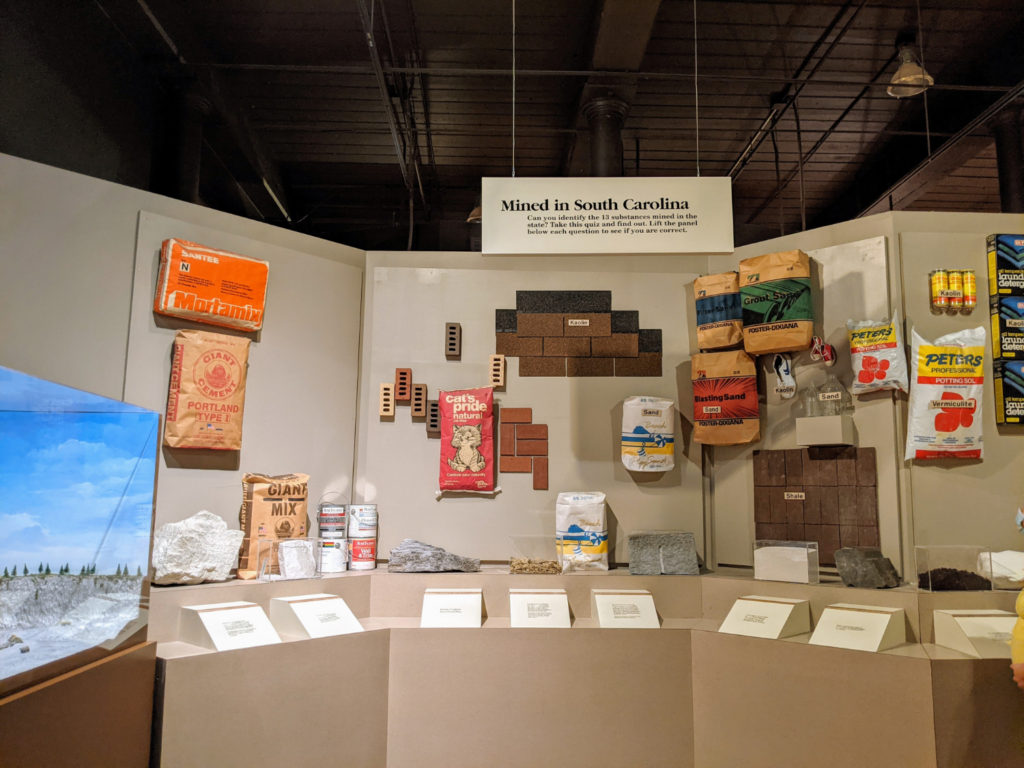
mining 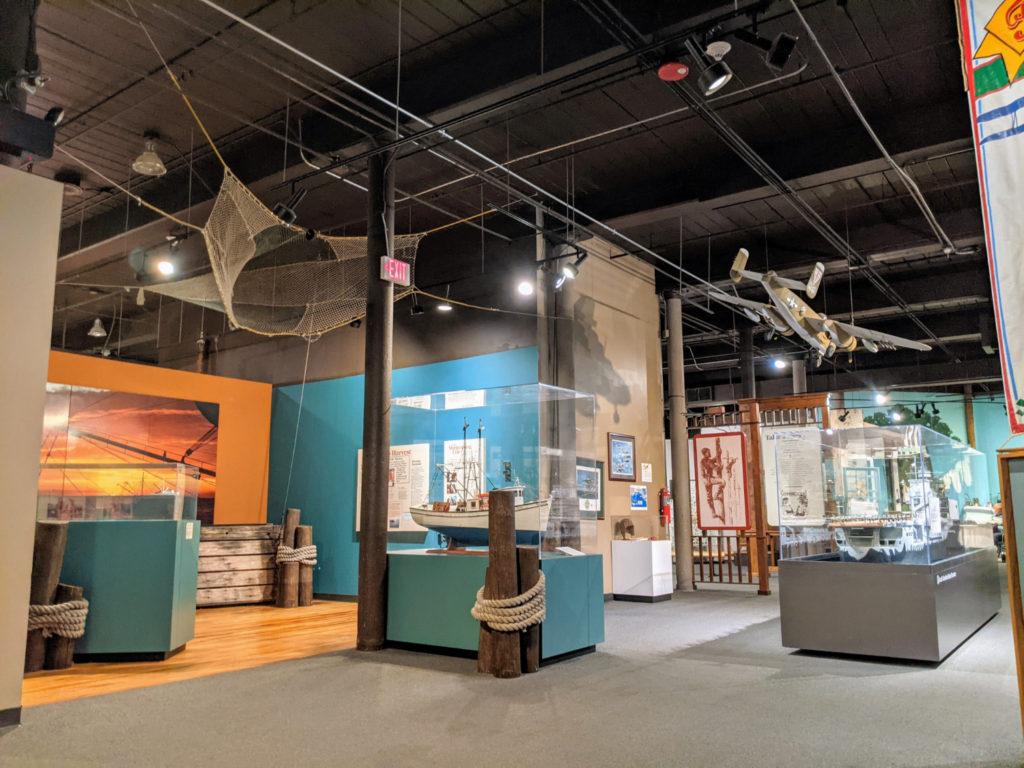
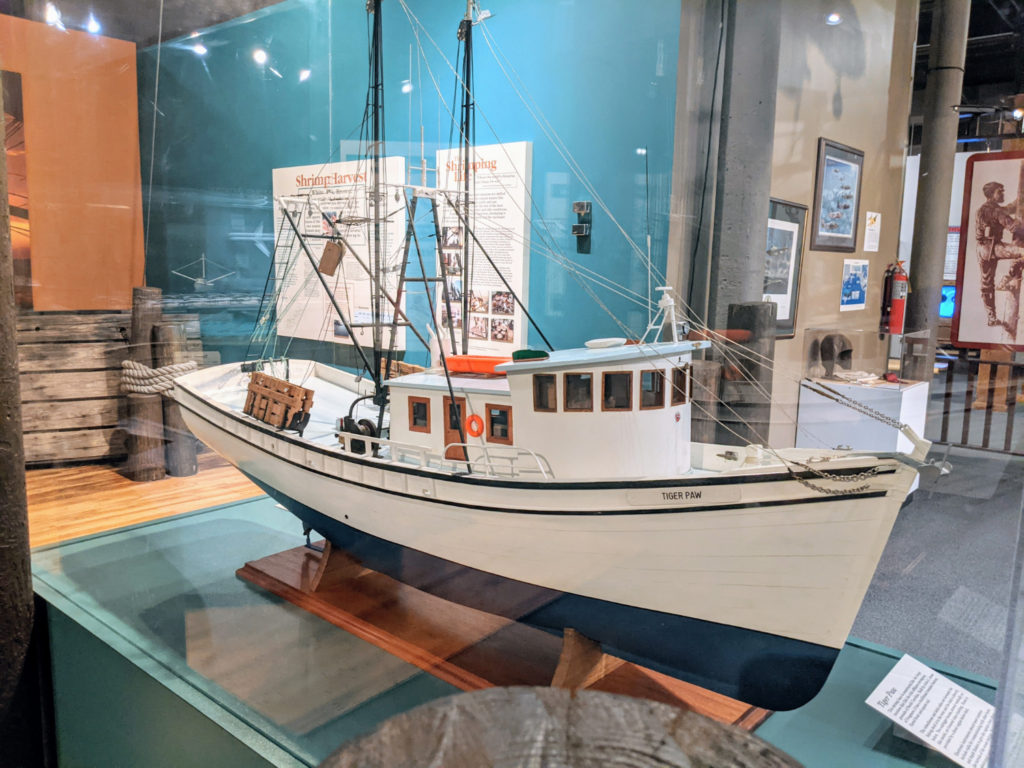
shrimping 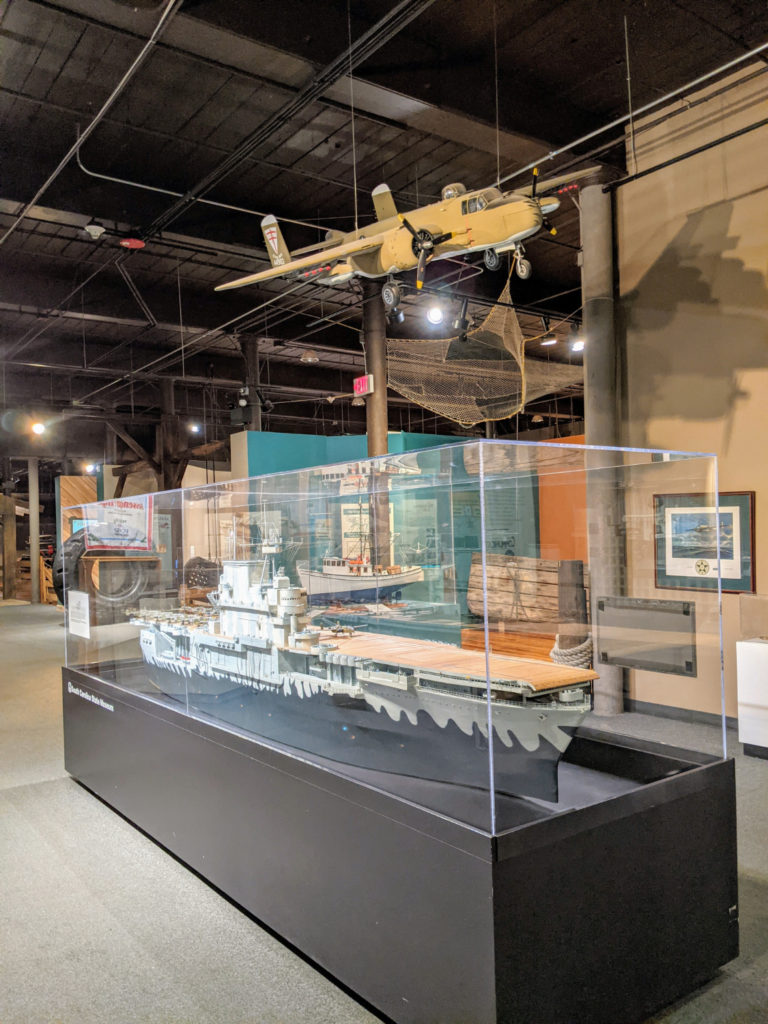
aviation 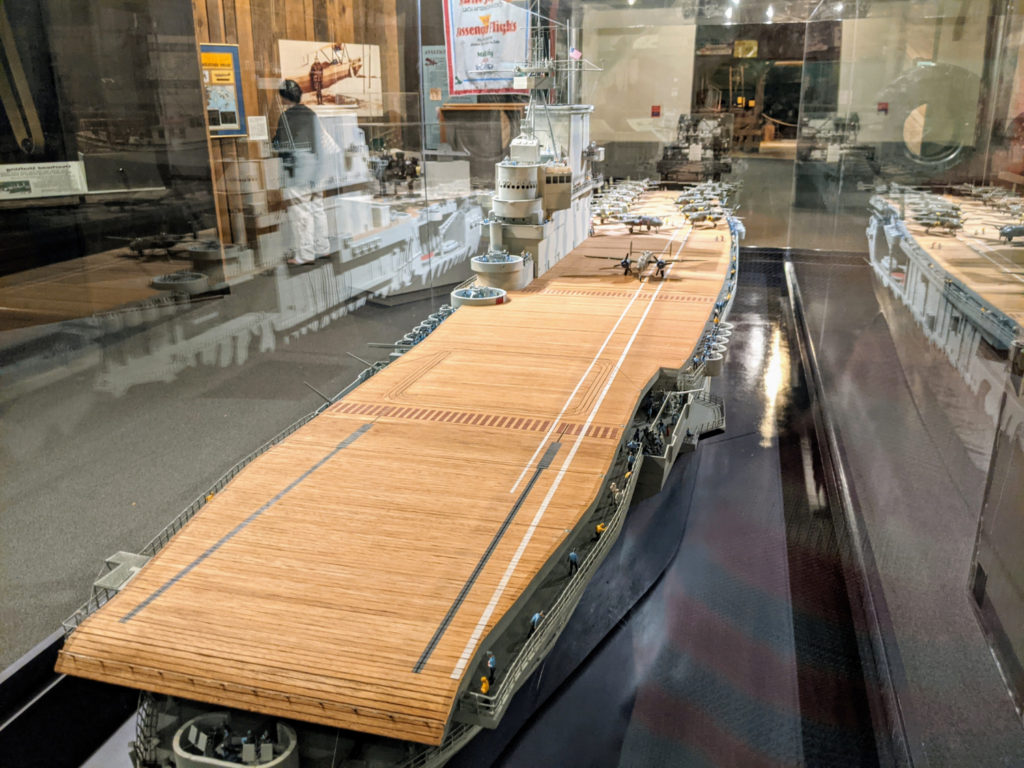
military
Communication & Electricty
The next big section has to do with communication and electricity, everything from early ink pens and typewriters to a modern local TV studio. There’s a whole newspaper office and displays of old radios and televisions. You can sit and watch Lil Rascals in a TV studio and sit in a small movie theater and watch short films from the ’40s.
Another little section mocks up a home with early electricity, and shelves display old (and questionable) electrical appliances.
Science
Past early electricity, there’s a whole science section. The hallway leading to it displays several optical illusions you can touch and play with. A little room to the side has a motion-sensor projector, where if you move around, the image on a large screen changes, like a big pinboard. A larger theater has a longer video about the inventor of the laser, a South Carolina native.
Through the doors and down the hall to your left are some hands-on laser displays, plus information on Nobel Prize winners from South Carolina.
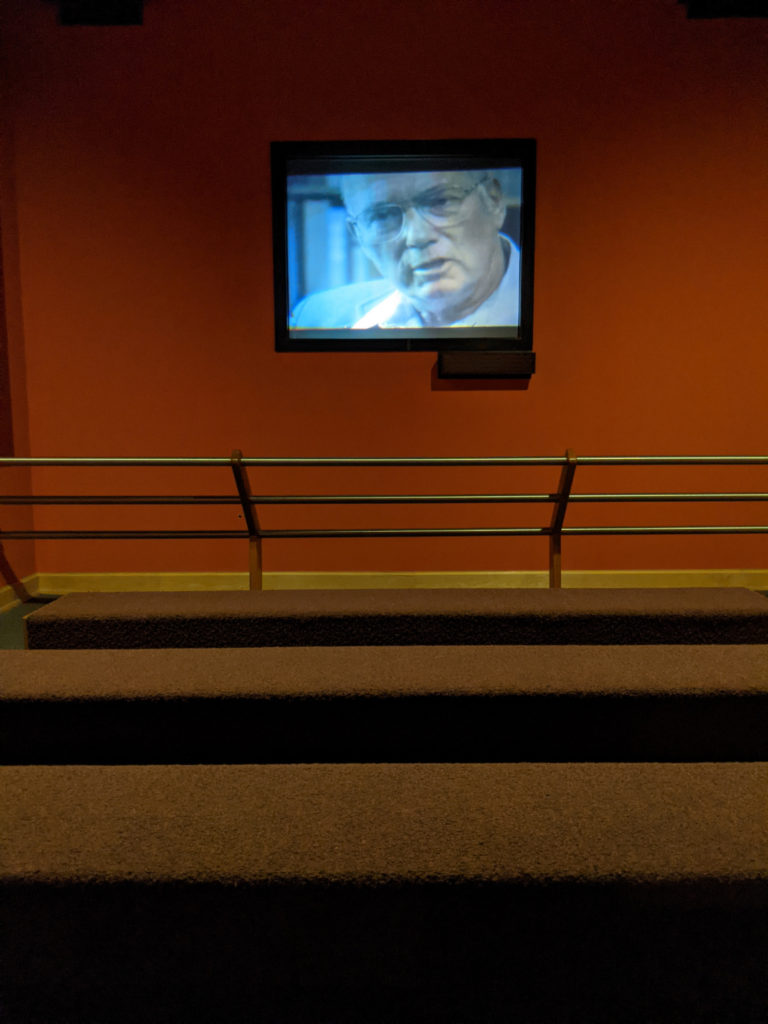
laser movie 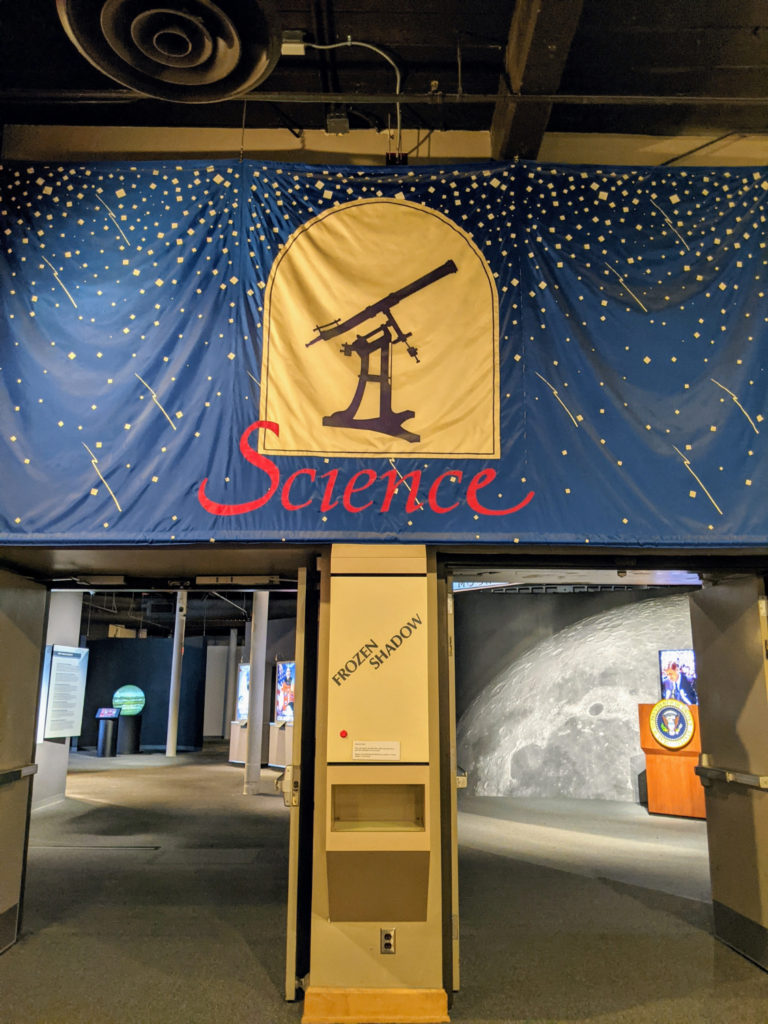
science wing 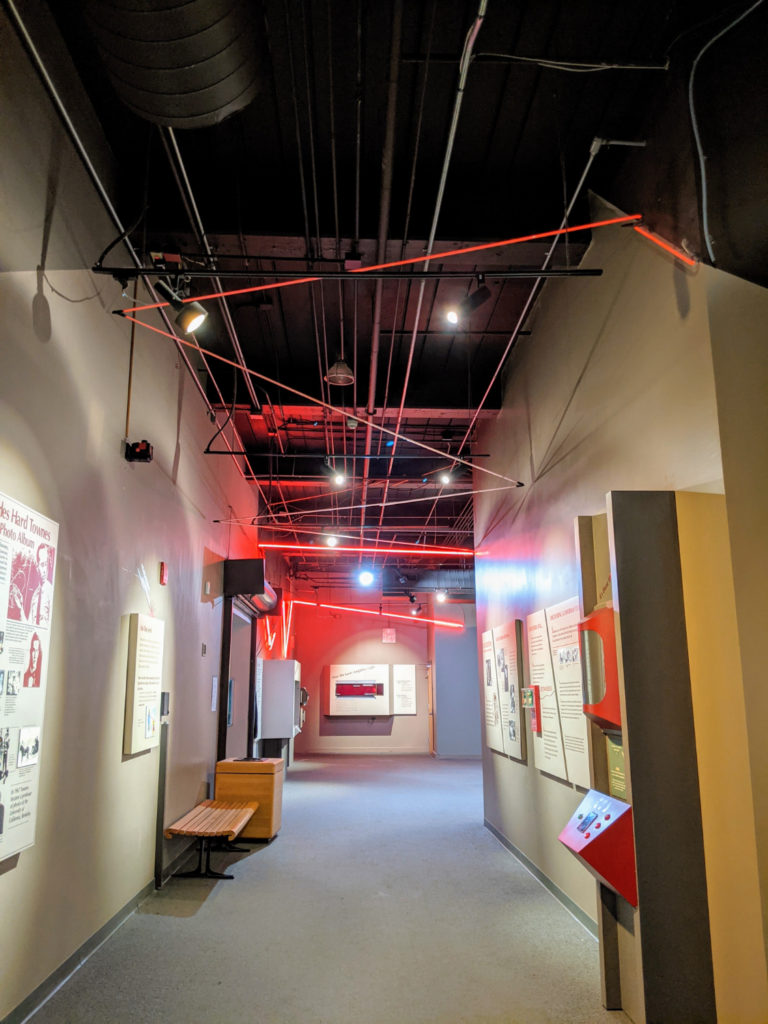
laser hall
A section in the middle is about the space program and the moon landings, with a Mars rover and space suits.
In this area is my favorite display, a “magic earth” globe you can change with an adjacent touch screen. You can make it look like any of the planets in the solar system (including Earth’s moon) using real photo imagery. For the Earth, there are five different versions for atmosphere, climate, etc.
Make Some Noise
In the back of the science section is the newest exhibit on sound. There’s a plate with sand where you can adjust the frequency and see patterns in the sand. A video plays with music & colors to display emotion. Two satellite dishes far apart allow you to whisper to a companion from across a room. Signs in this section are in English and Spanish, which is cool.
Fourth Floor
Cultural History
We get deeper into South Carolina cultural history on the fourth floor. Tucked behind the palmetto-log facade of Fort Moultrie are large and small dioramas of Native American cultures. Then we get into white exploration and settlement, leading into a section on the Revolutionary War.
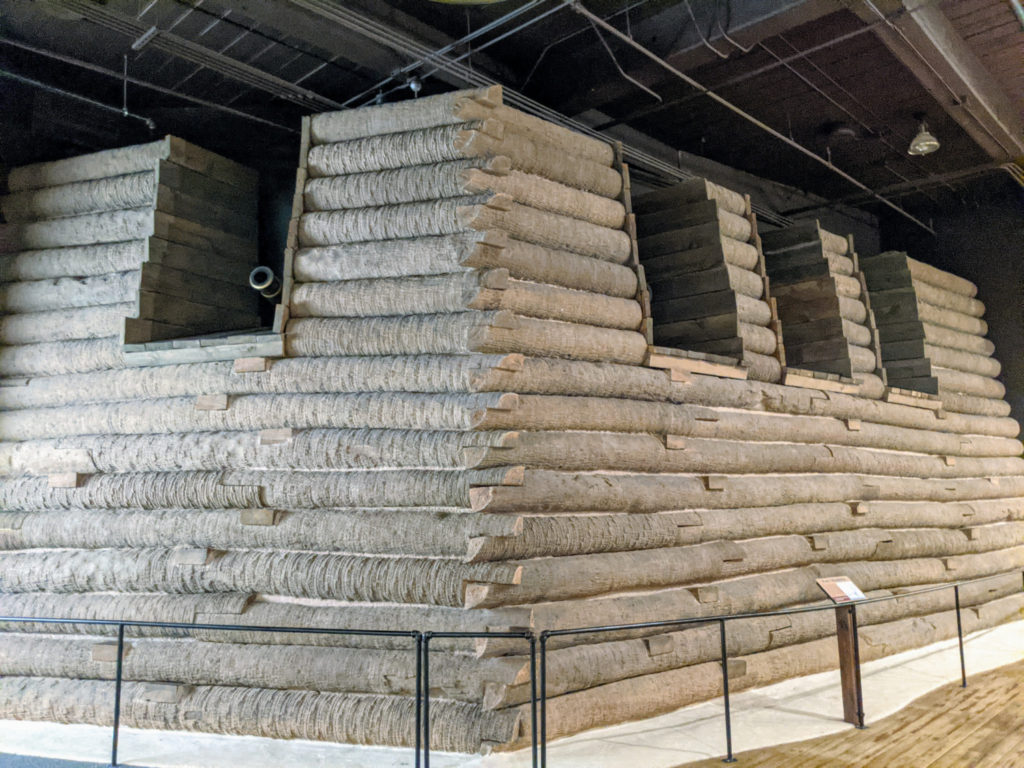
Fort Moultrie 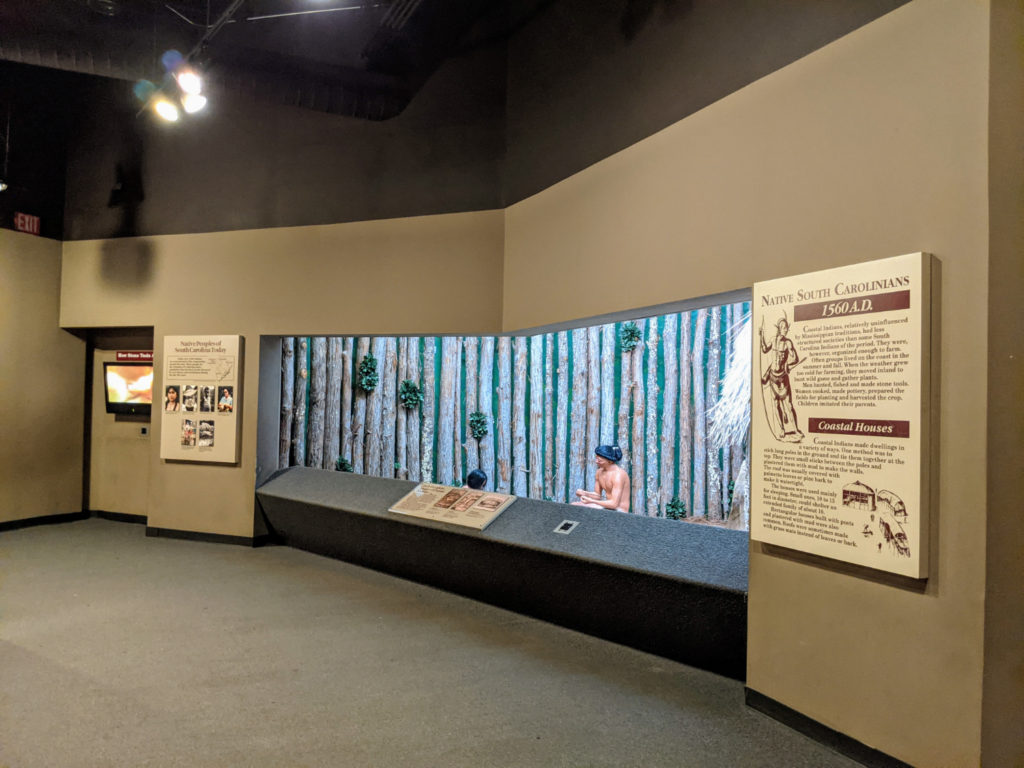
Native American dipslays 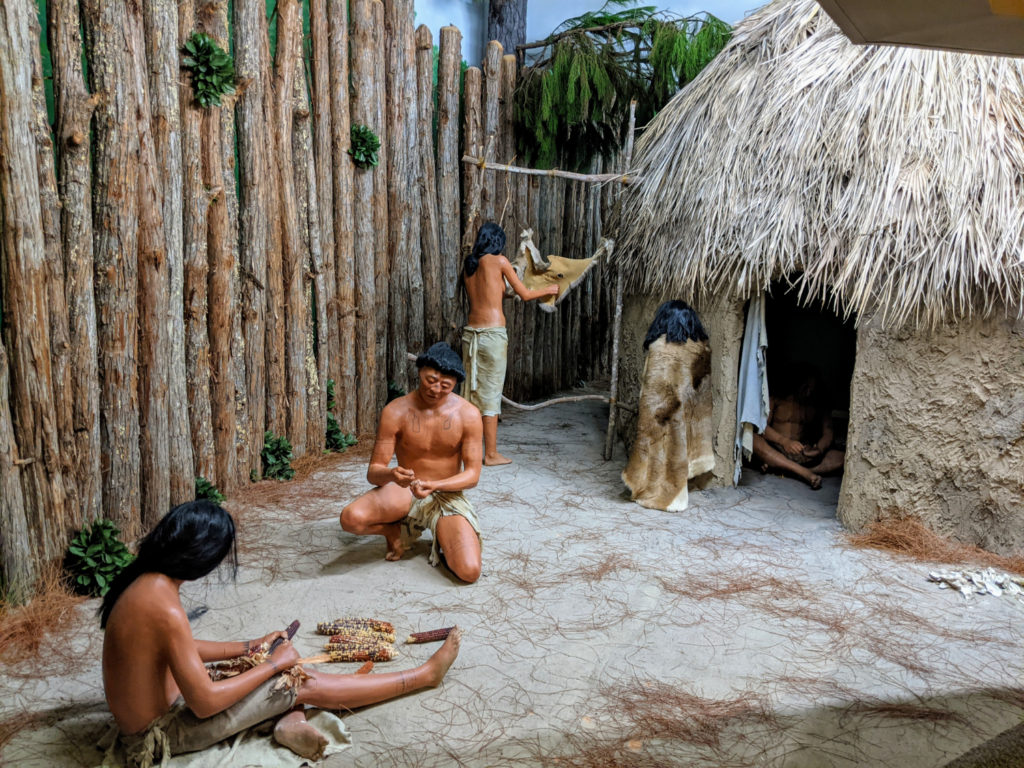
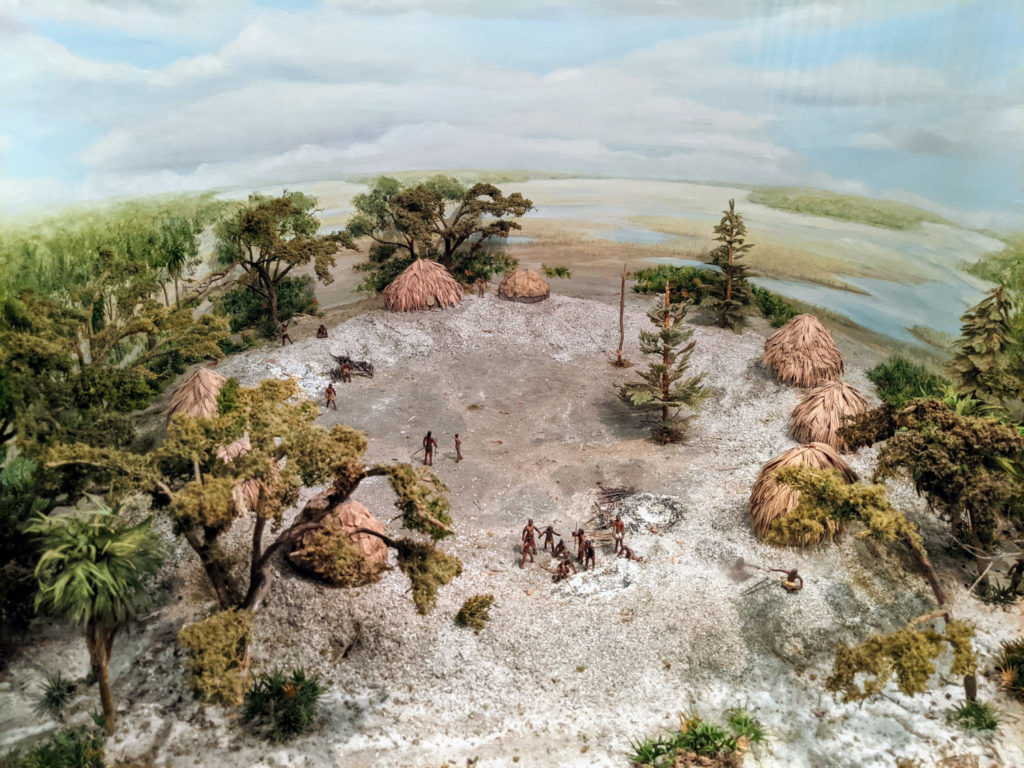
smaller models 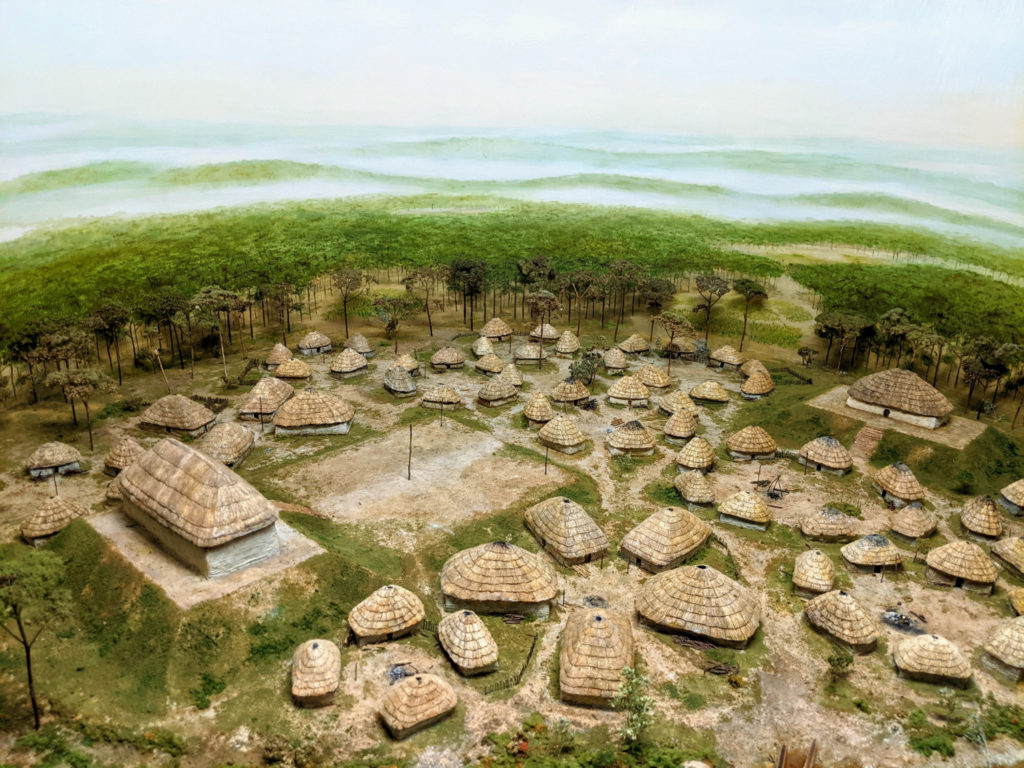
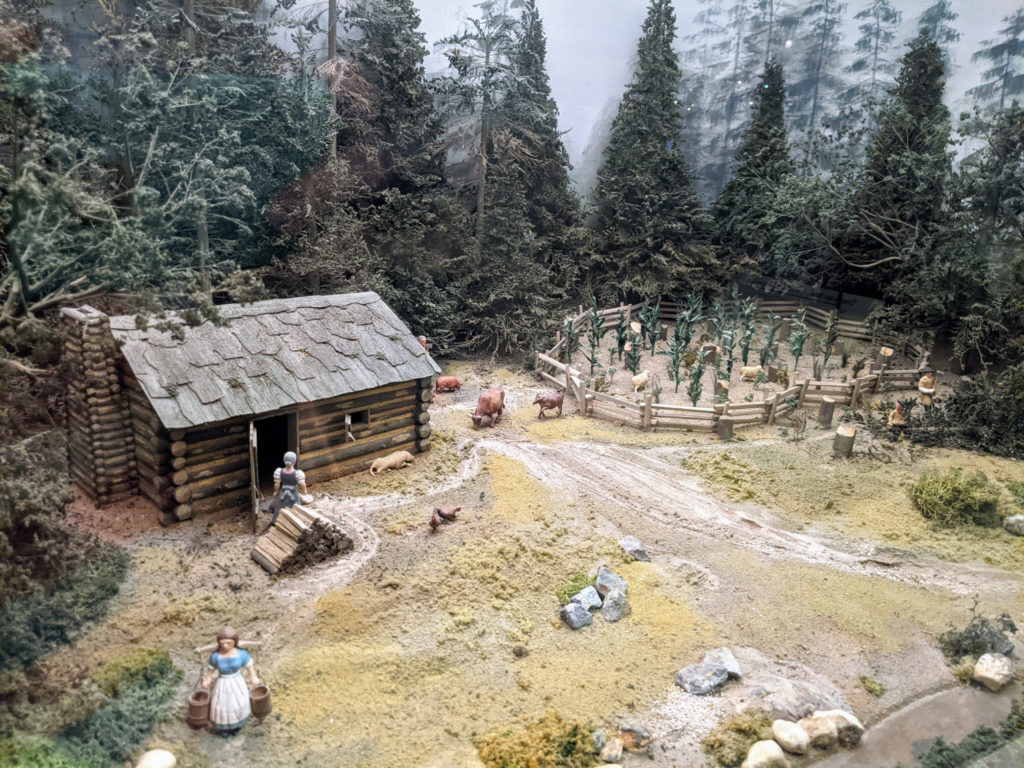
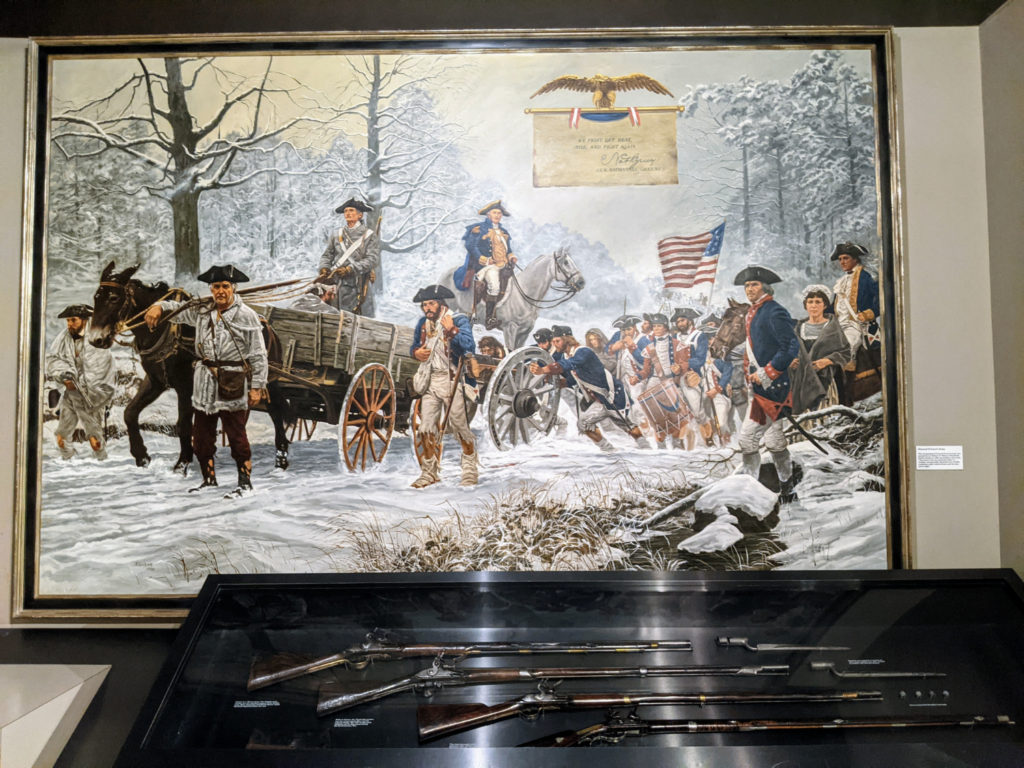
The Revolutionary War
Plantation Life
Under a neoclassical sign is a section on Antebellum society, with sections on cotton farming, the cotton gin, and the lifestyle of the white plantation owners. A full-size replica of a slave cabin and a family balance the other side of the room.
Civil War
Then through a Fort Sumter-style arch is a section on the Civil War. At the stairs is a recreation of the Civil War submarine, the Hunley. (Operated with a hand crank, no less!) A model of an iron-sided steamship and a tiny David submersible illustrate the Confederate’s investment in innovation over volume as a naval tactic.
Inside the fort are swords and firearms. A soldier’s tent is set up with a looping video about loading and firing an era rifle. The back wall shows fire damage from Sherman’s March to the Sea. A timeline about the reconstruction era is offset by a red shirt and firearm of a militant Columbia protestor.
Rural Life
Around the corner, you come to recreations of rural life, in both life-size and miniature. A tiny “South Carolina Kitchen” sits across from a full-size general store. There’s a one-room schoolhouse to walk through and a model of a more Victorian home (which I think was a seminary/school.)
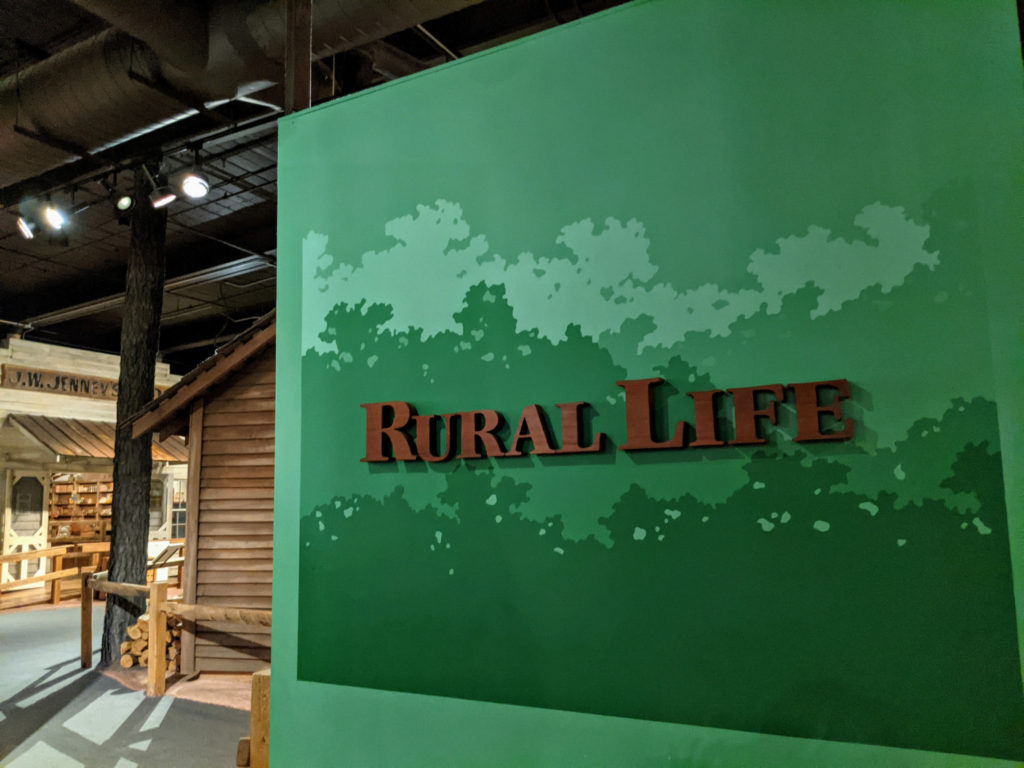
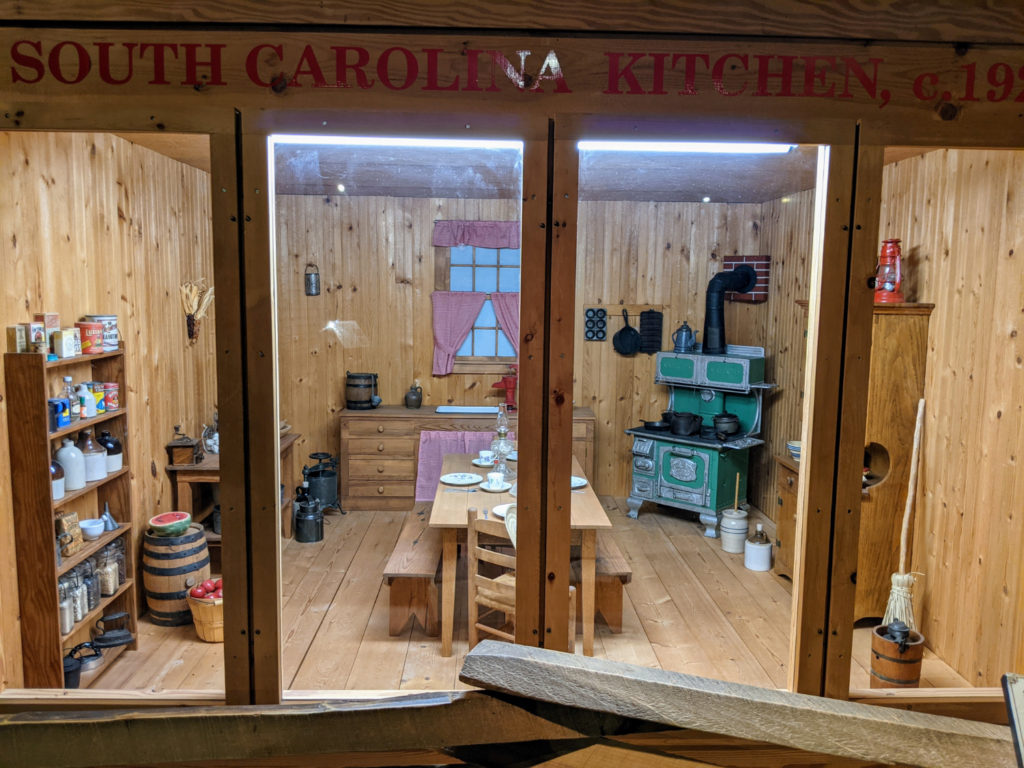
tiny kitchen 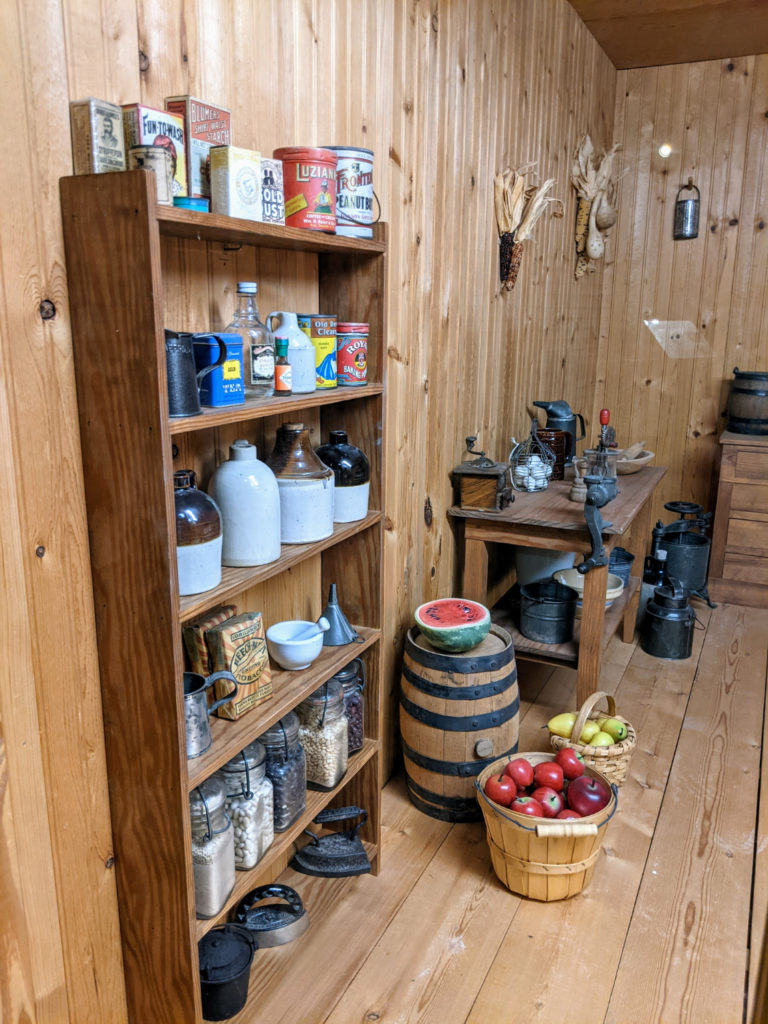
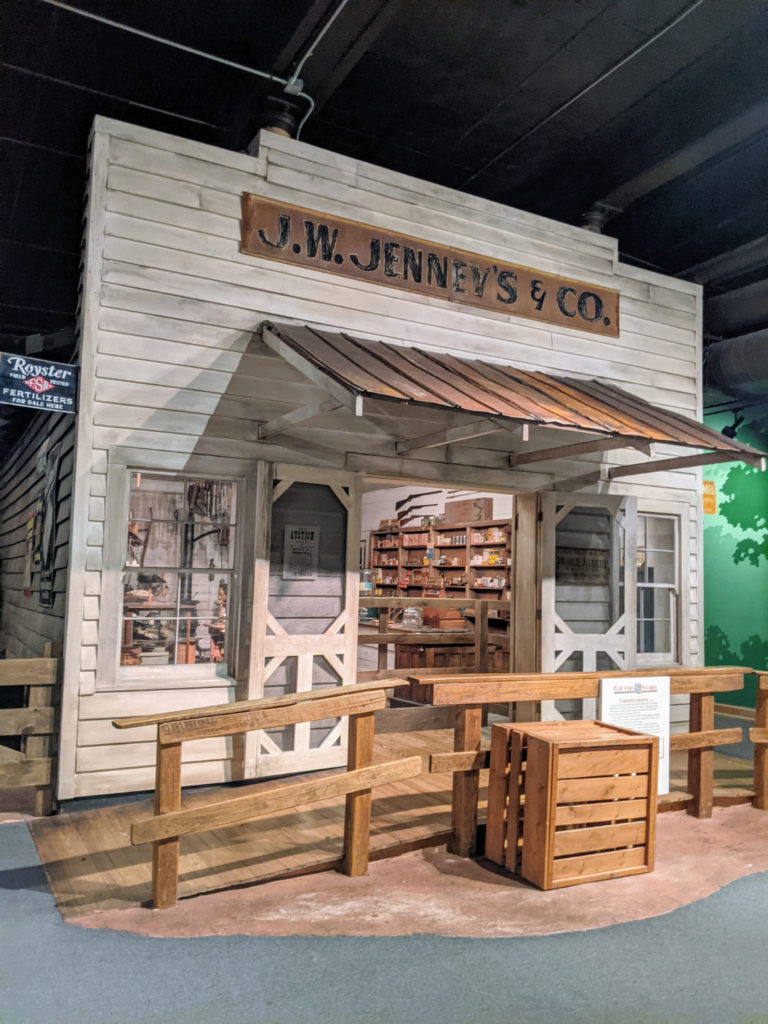
a general store 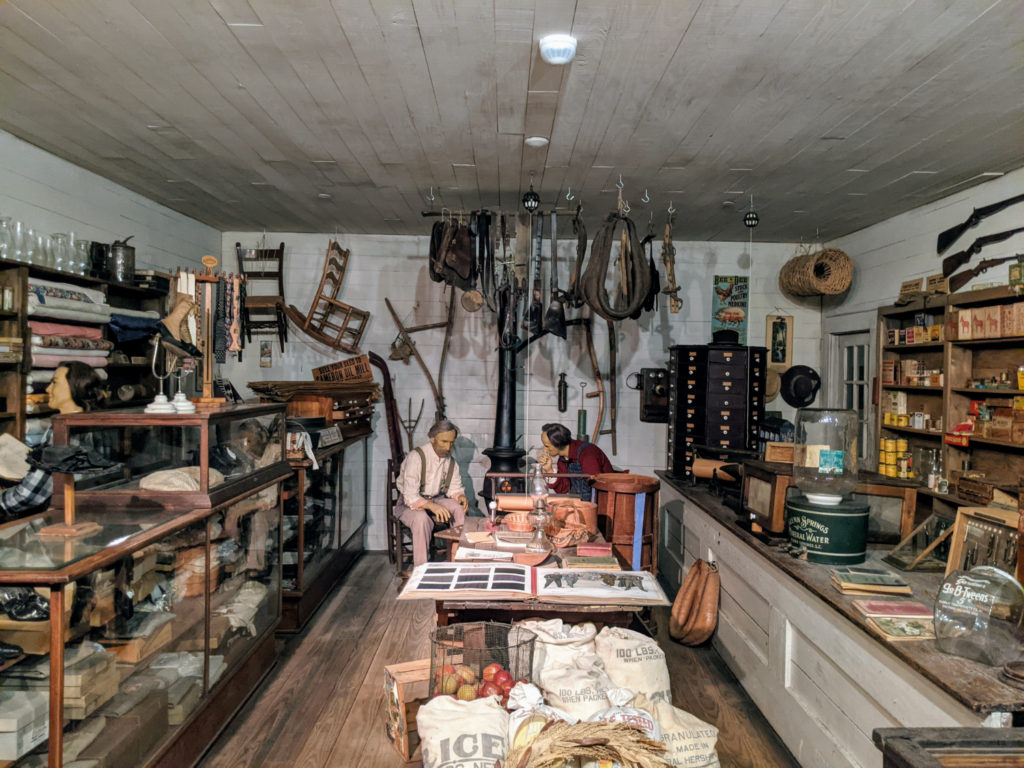
inside the general store 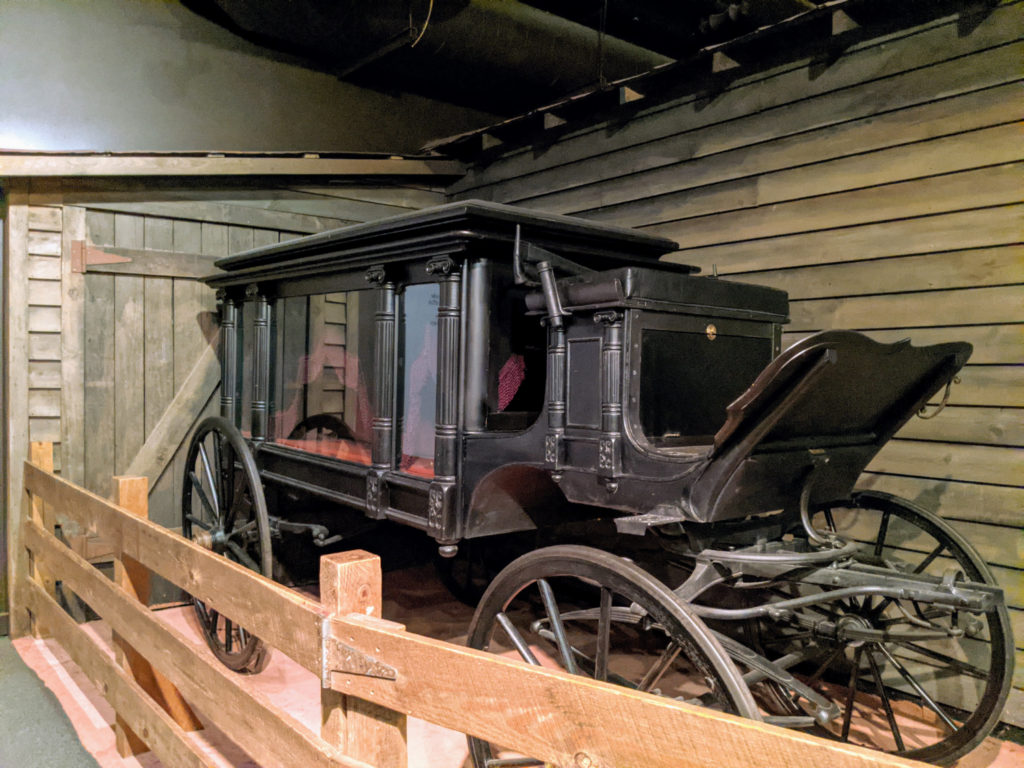
a hearse 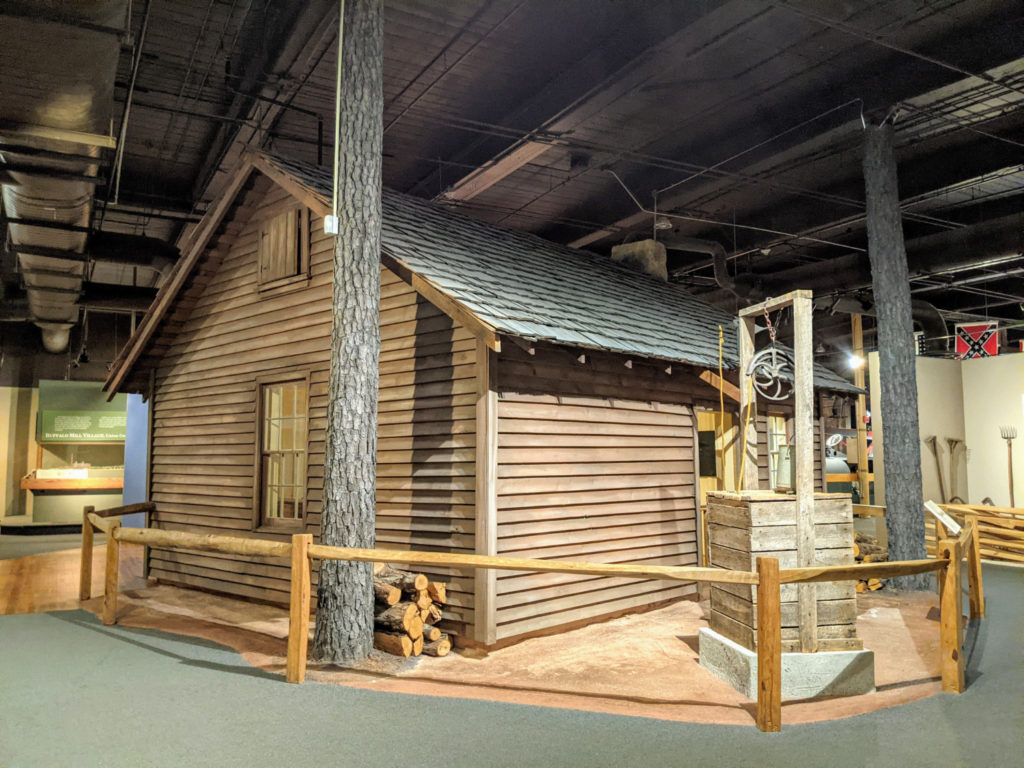
one-room schoolhouse 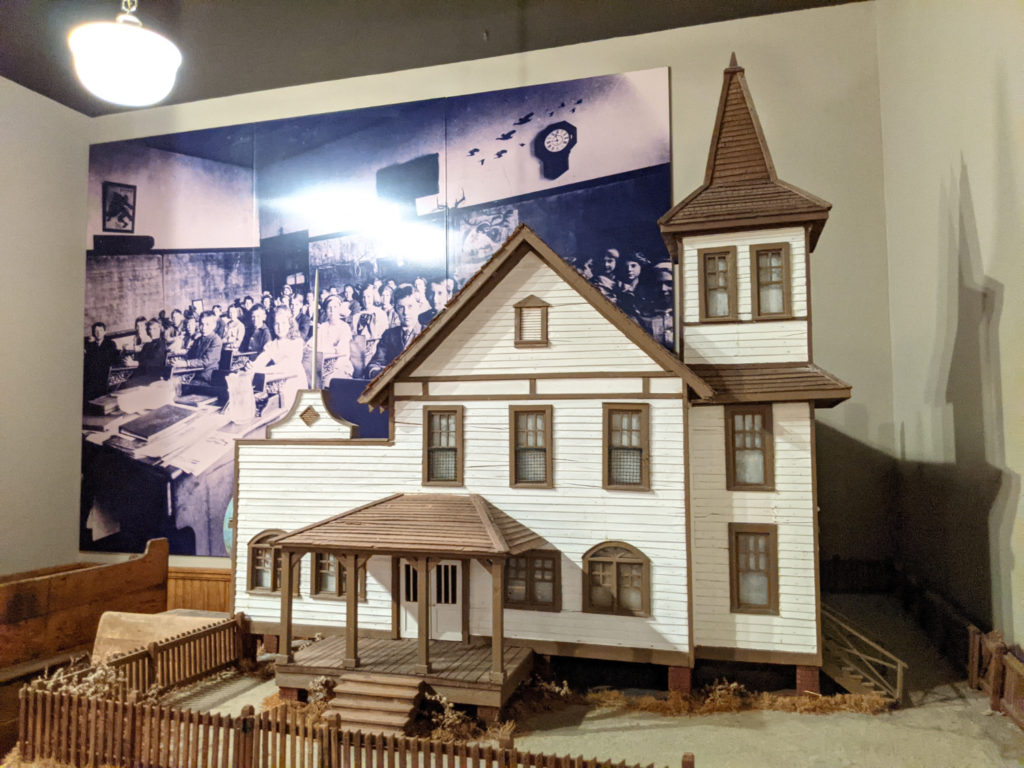
A large model of the area when it was a working mill has push buttons to light up different sections of town. There was the mill, churches, a school, recreation, and provided mill housing (which is now West Columbia.) A representation of a typical mill house bedroom is nearby.
On the corner is a big Standard Oil gas station with a car ready to be filled up.
Carolina-Made Furniture
At this point, I had eaten a short lunch around the middle of the 3rd floor and taken a break for two back-to-back shows between the science section and the 4th floor. It was now getting to be the last hour of the day, and I still had half a floor left! I zipped through the last few galleries, so I’m a little short on information.
Fine furniture made in South Carolina is displayed in the Palmetto Room, through the doors of a Charleston-style mansion. Wood was often milled close to where it was harvested, and the Carolinas have a rich tradition of well-made furniture.
Early American Face Vessels
Behind the Standard Oil gas station is a space for a changing exhibit, currently about face jugs. Carolina pottery has a particular style and face jugs are a subset of that. And what ugly faces! They are made especially ugly in order to ward off evil spirits, tracing their roots back to African traditions.
Telescope Gallery
A beautiful gallery I just zoomed through is the Robert B. Ariail Collection of Historical Astronomy. There’s the oldest telescope built in America, and several gleaming examples of the art of sky gazing. I liked some of the smaller, collapsible ones.
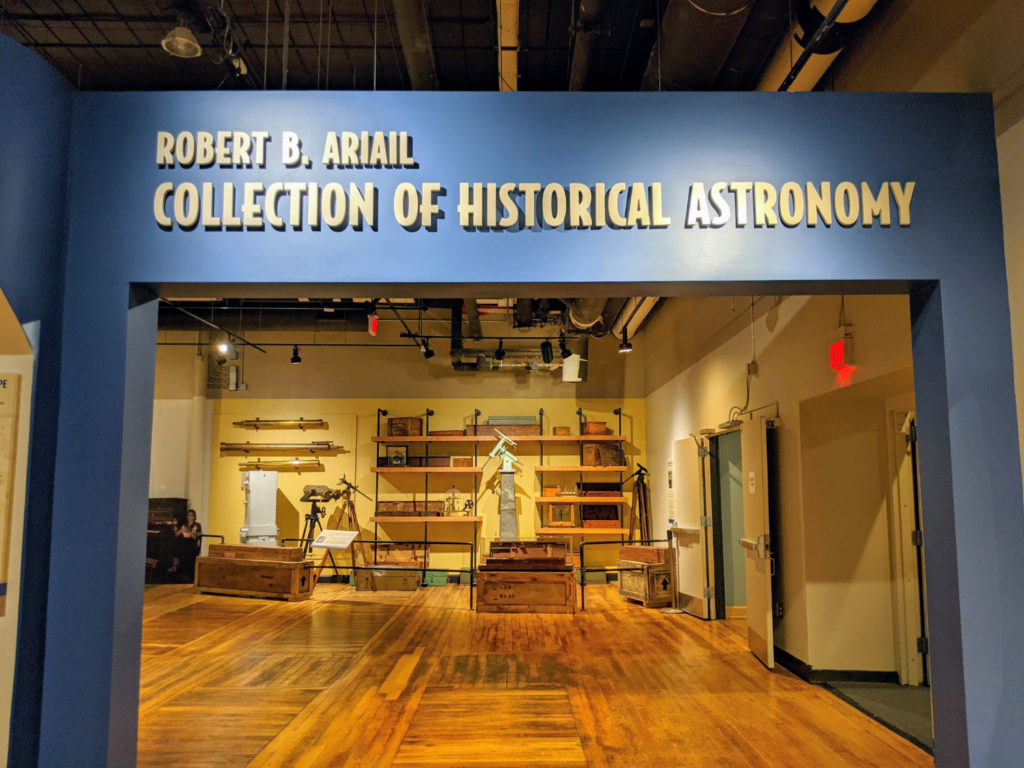
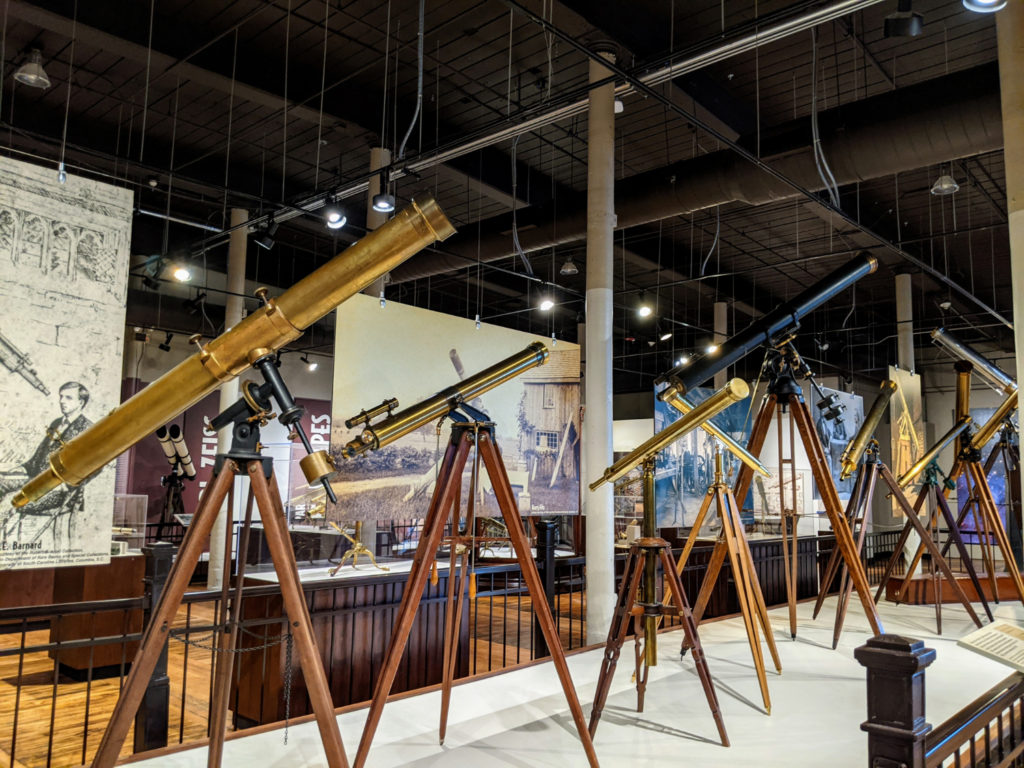
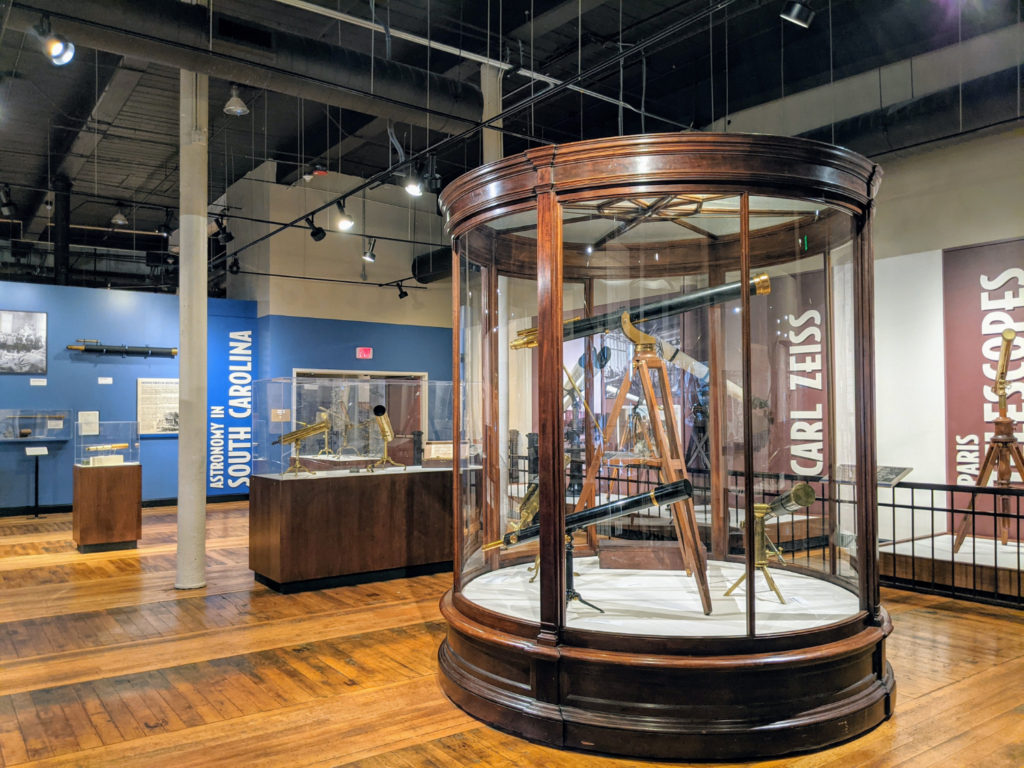
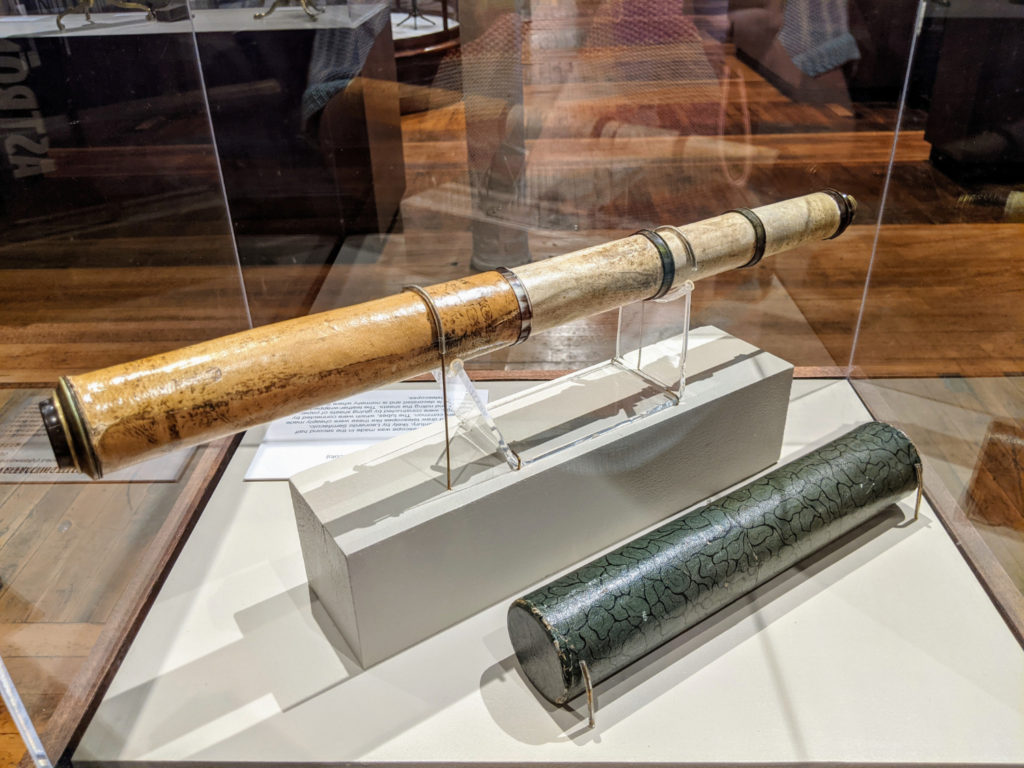
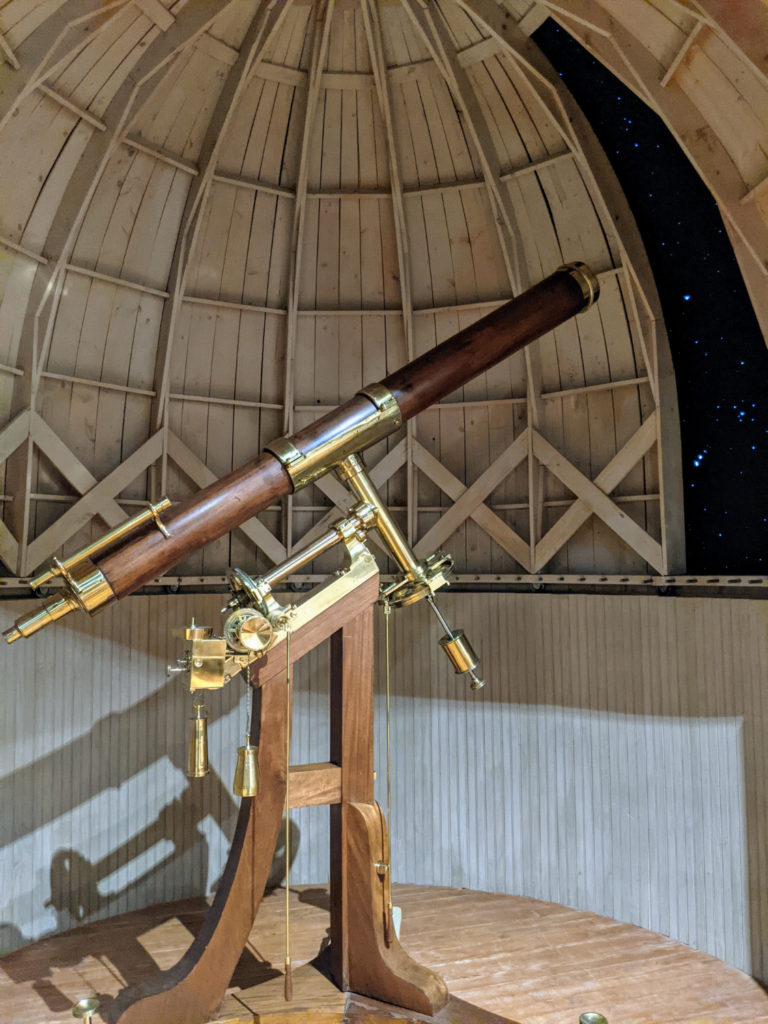
America’s earliest telescope
Observatory
Adjacent to the telescope gallery is an actual observatory with a huge modern telescope! It’s currently closed, but I think they normally have programs at night where you can look through it. Still, it’s pretty awesome to see.
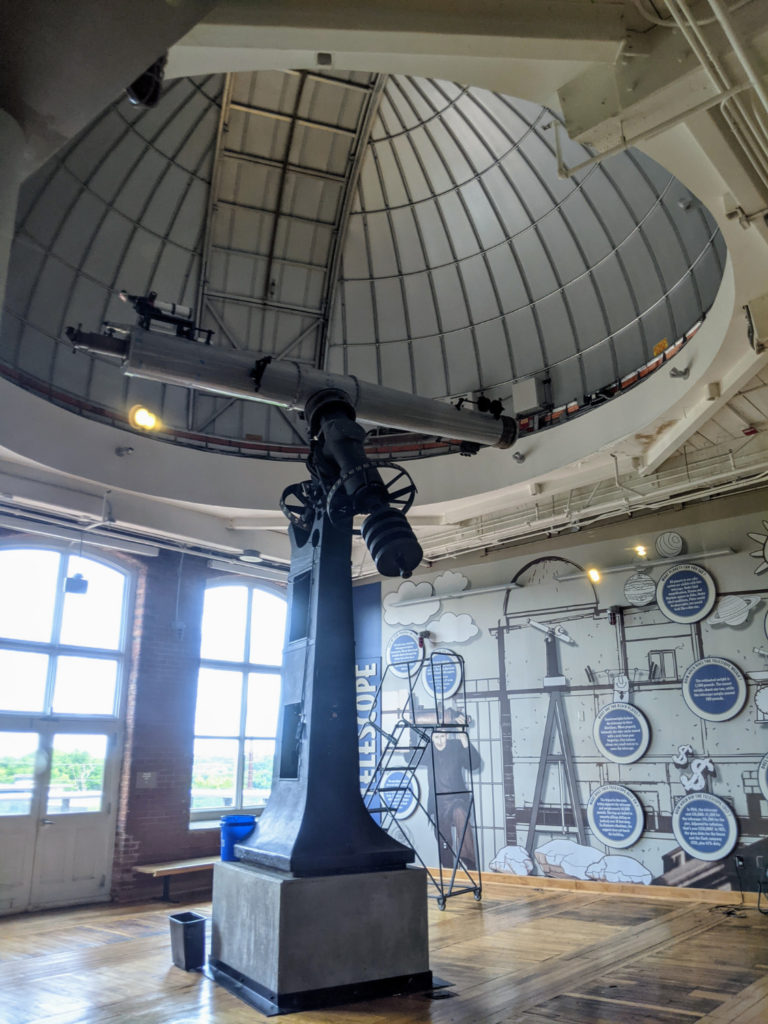
So, we’ve got art, natural history, cultural history, science, plus an observatory, planetarium, and a 4D theater. That’s a lot for one museum! I kind of wish every state had such a cohesive collection. It is a lot to take in during one visit, however.
Exit through the gift shop
Not that you actually have to leave through the gift shop – in fact, you can visit it any time apart from museum admission. The Cotton Mill Exchange has a huge collection of high-quality goods, all related to South Carolina in one way or another (except for maybe the toys.) You could probably outfit yourself, your home, your children, and your Christmas tree in state flag merch through this shop alone.
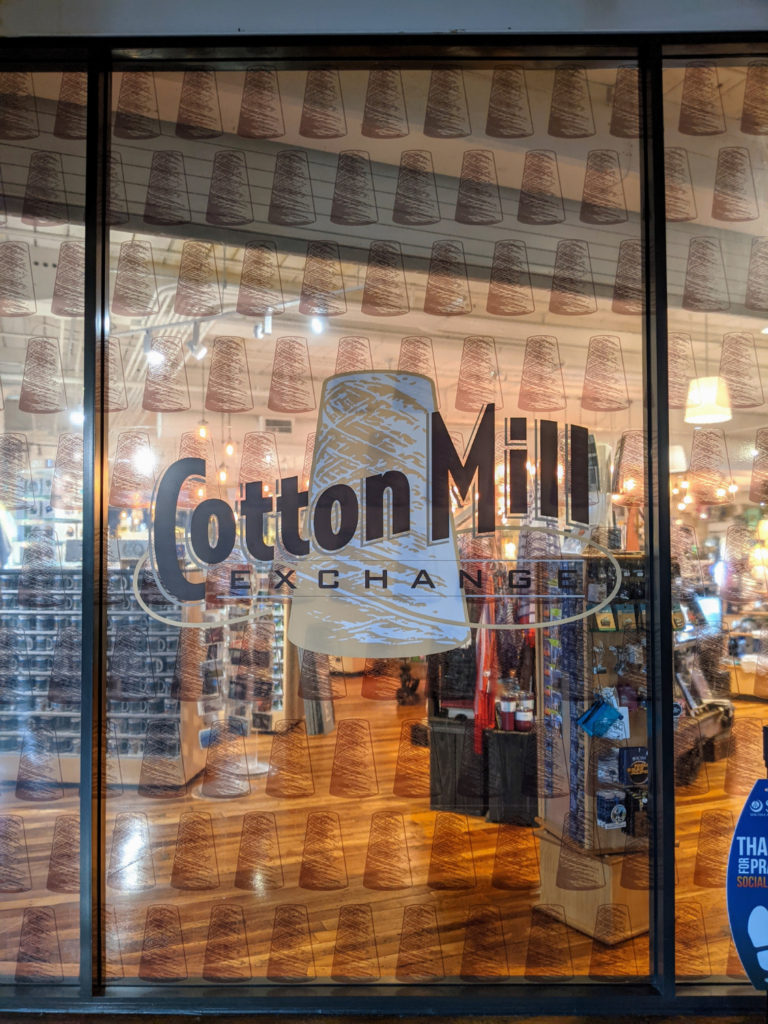
Visiting the South Carolina State Museum
If you want to visit yourself, admission is very reasonable, just $8.95 for adults, $7.95 for seniors 62+, and $6.95 for children 3-12. I would assume under 3 is free. You can add one planetarium or 4D show to your ticket for $13.95/12.95/11.95 or two shows for $16.95/15.95/14.95, which is what I did.
If you have a membership, or otherwise have admission and want to add on shows, the first show is $5, and each additional show $3 each. On my visit, I asked before leaving if I would have to pay admission again if I just wanted to watch more shows, and the official answer is yes, you have to buy admission. BUT, the nice lady at the desk thought for a minute, asked me when I’d return (early the next week), and printed an admission for free. I used that later to come back and watch three more shows and do the Confederate museum. I don’t assume this would work if you roll up with your family of 8 and ask the same thing, but for a solo traveler like me, it worked out. The moral is it never hurts to ask.
Parking is free – there are steps to the front, but there are reserved handicap spots on the drive directly in front of the building, and I think more on the side. Elevators and restrooms are on every floor.
Not part of the South Carolina State Museum but in the same building is the South Carolina Confederate Relic Room and Military Museum that you can add to your State Museum Admission for $4.
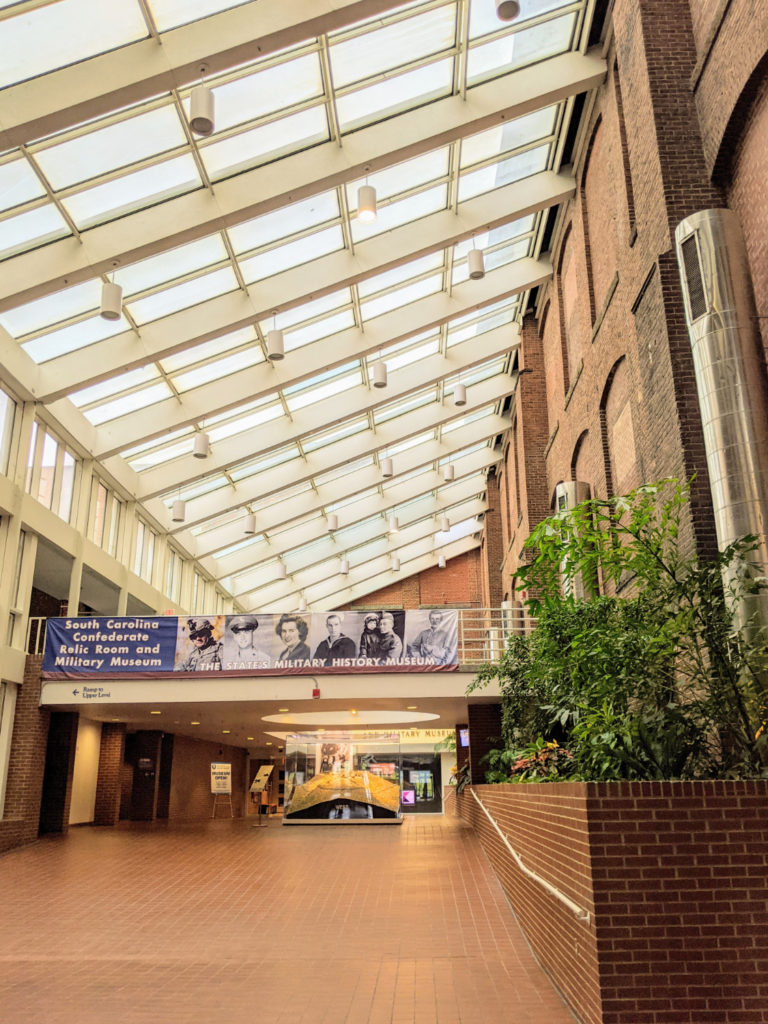
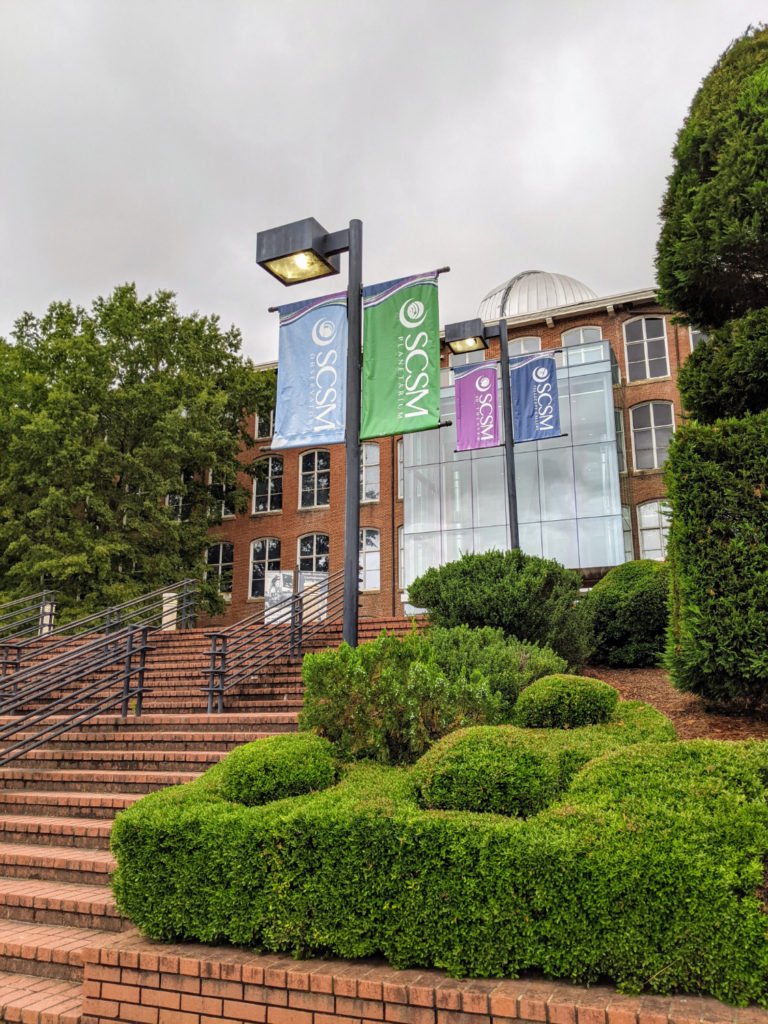
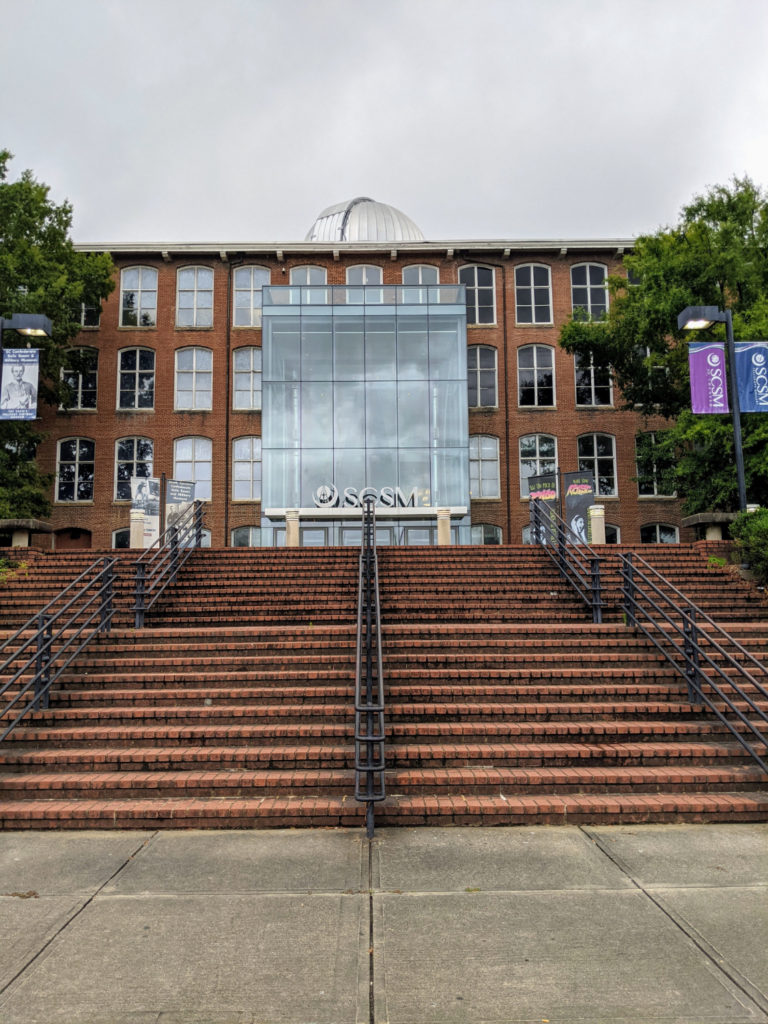
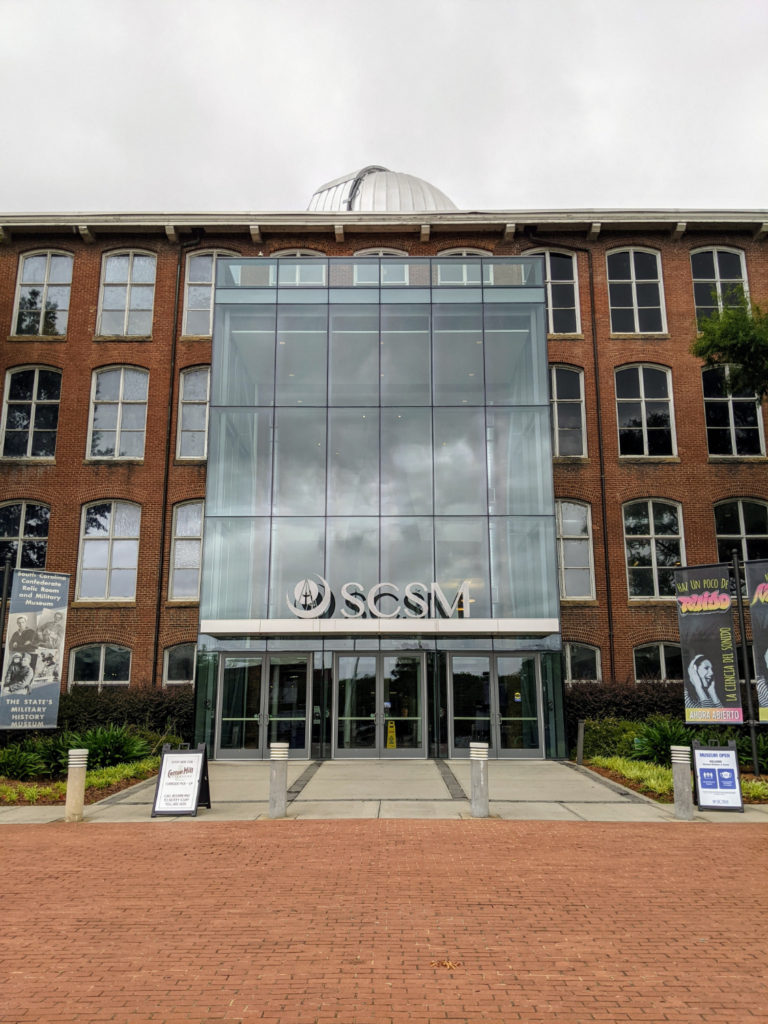
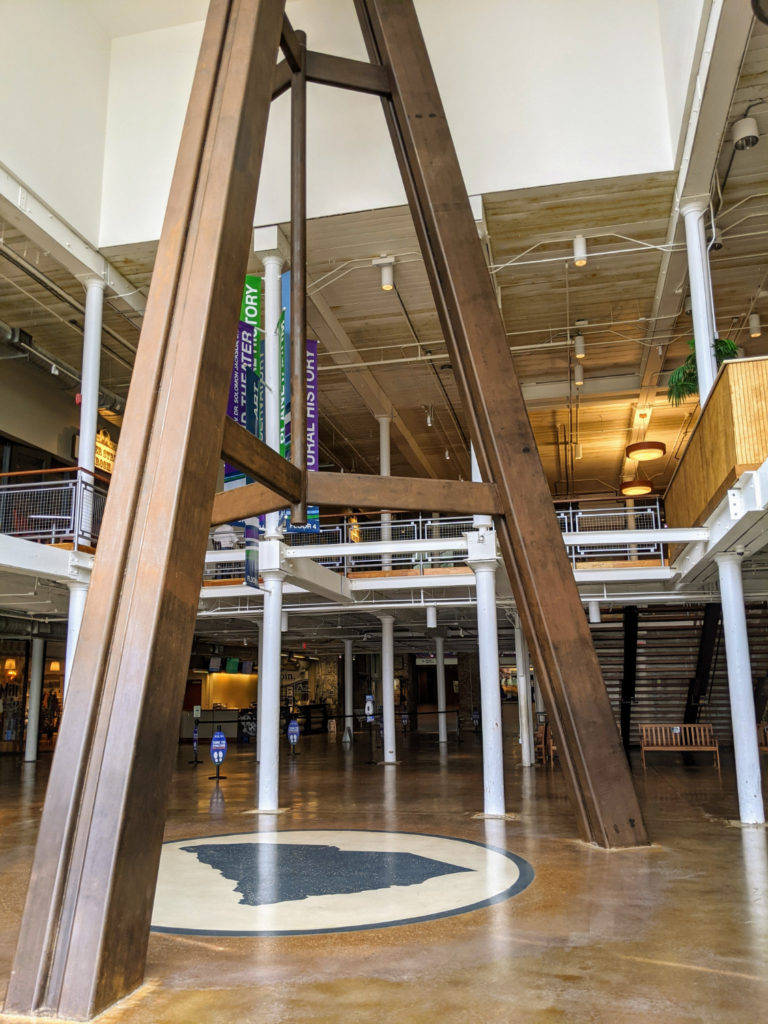
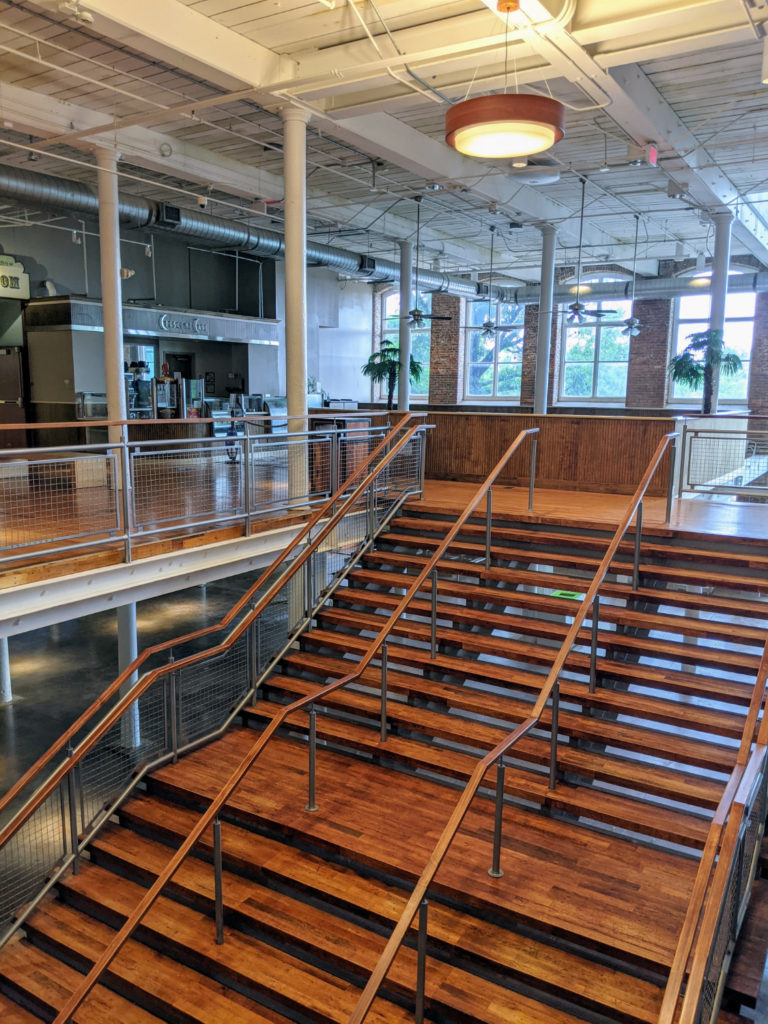
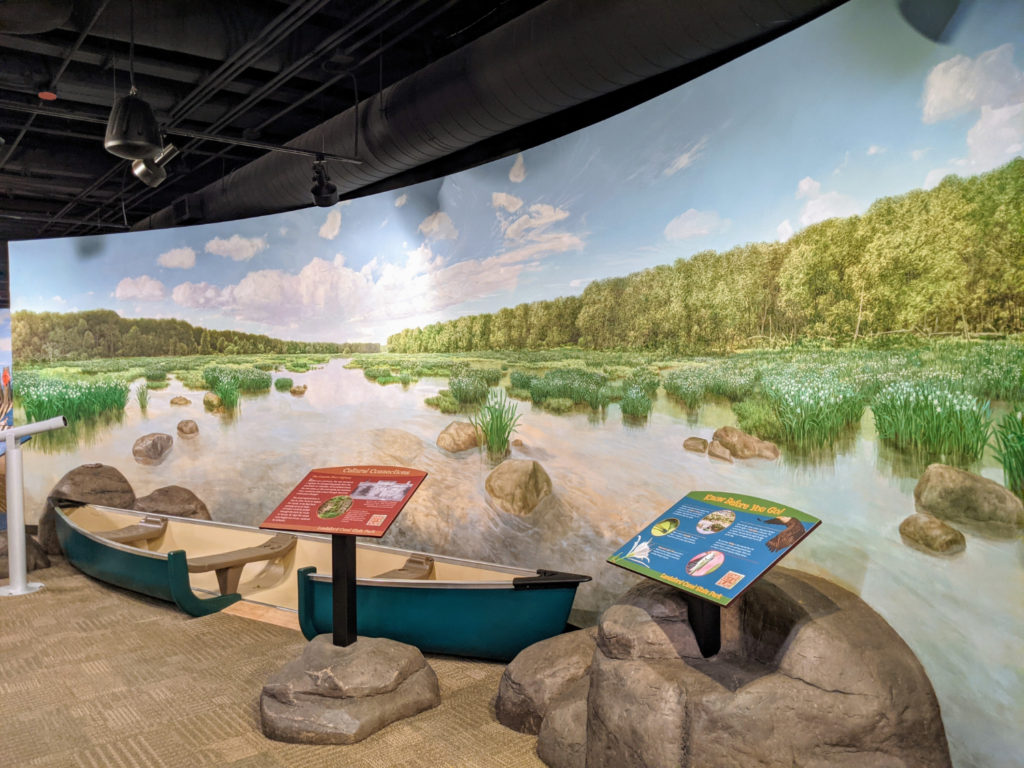
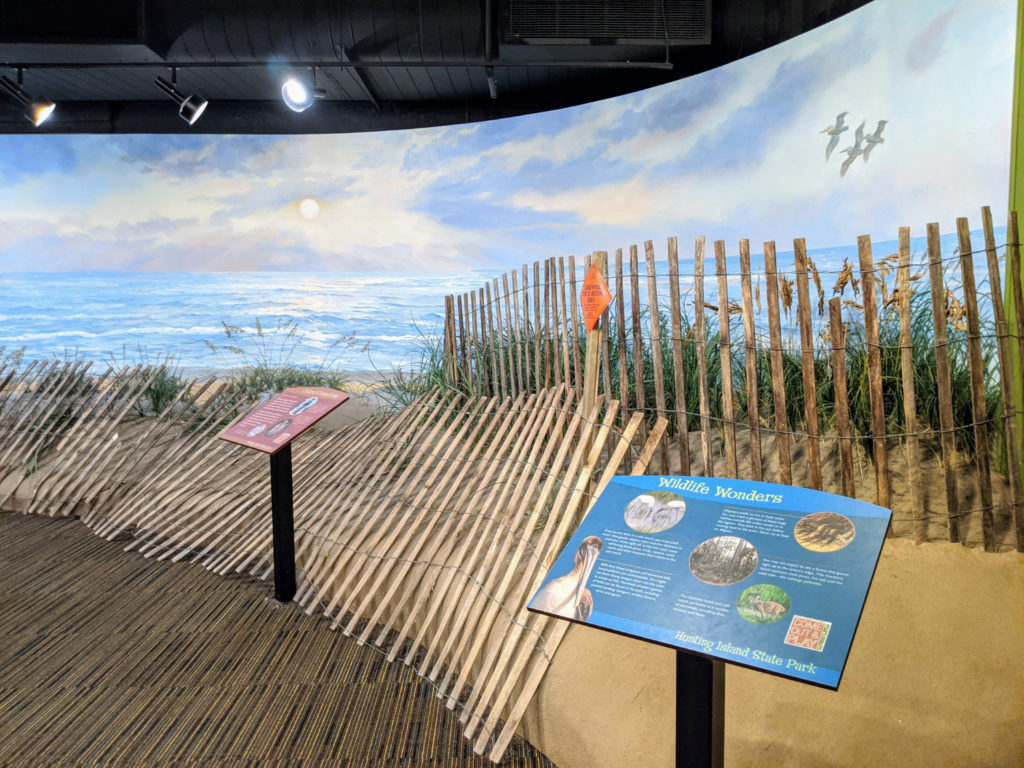
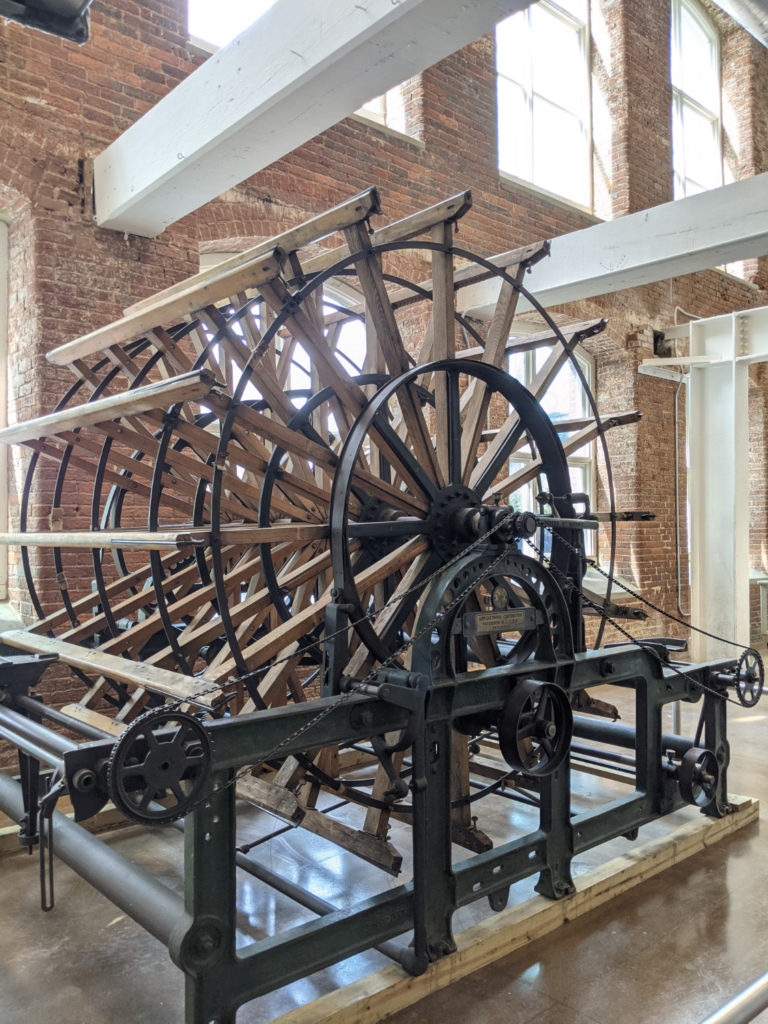
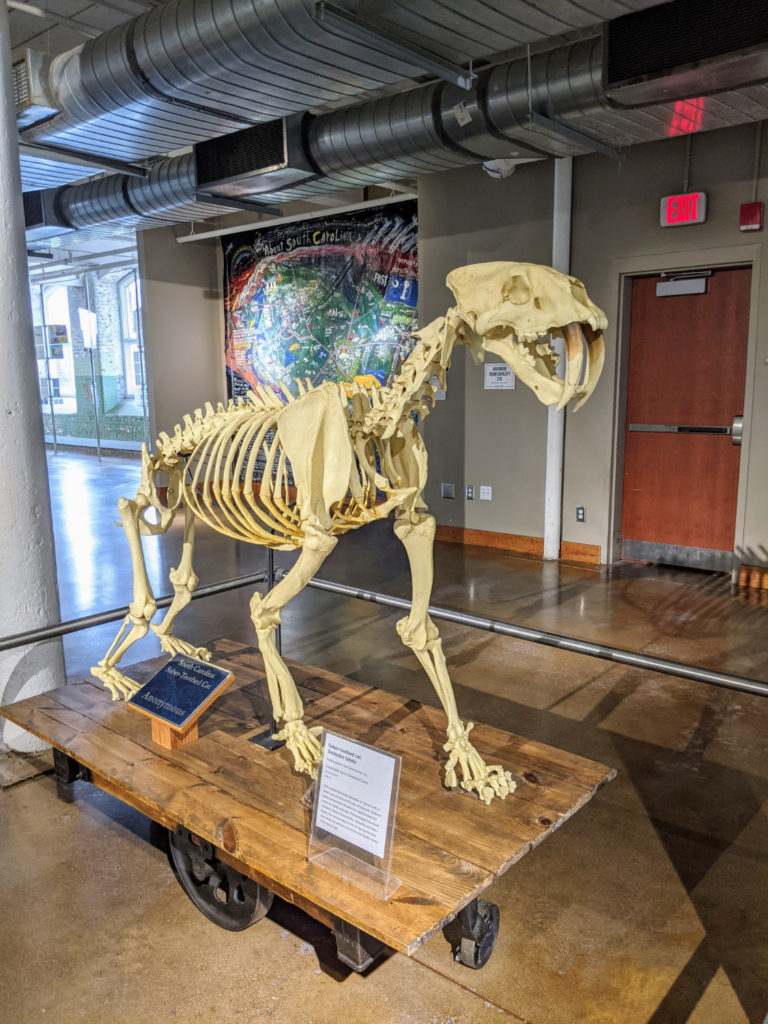
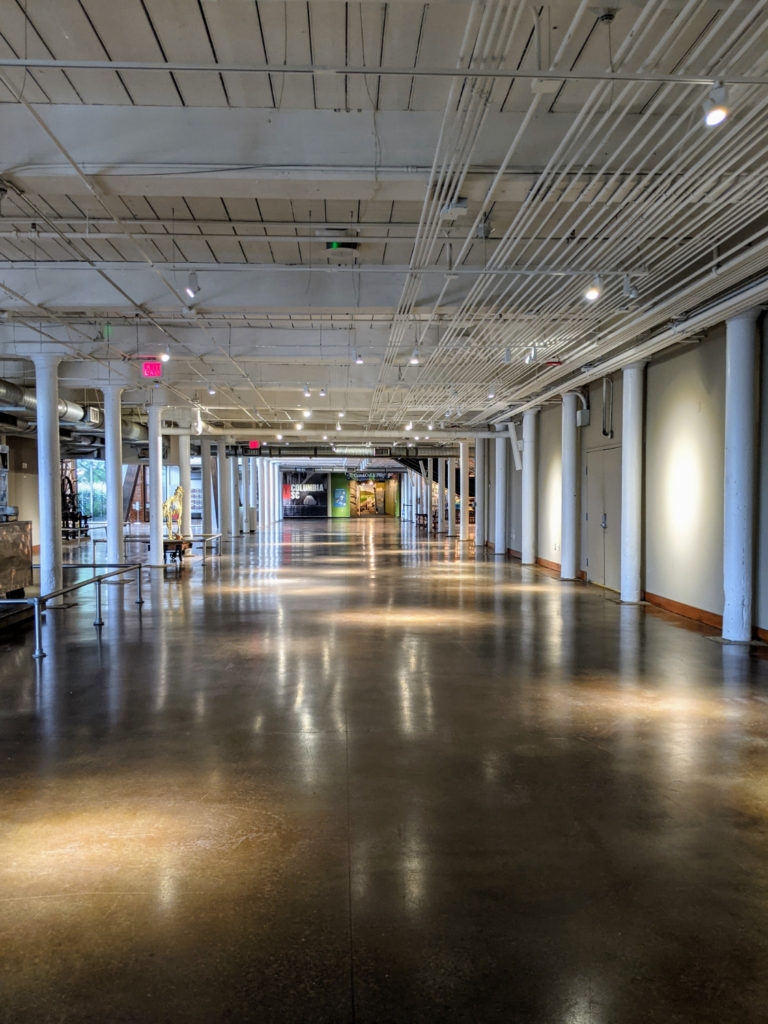
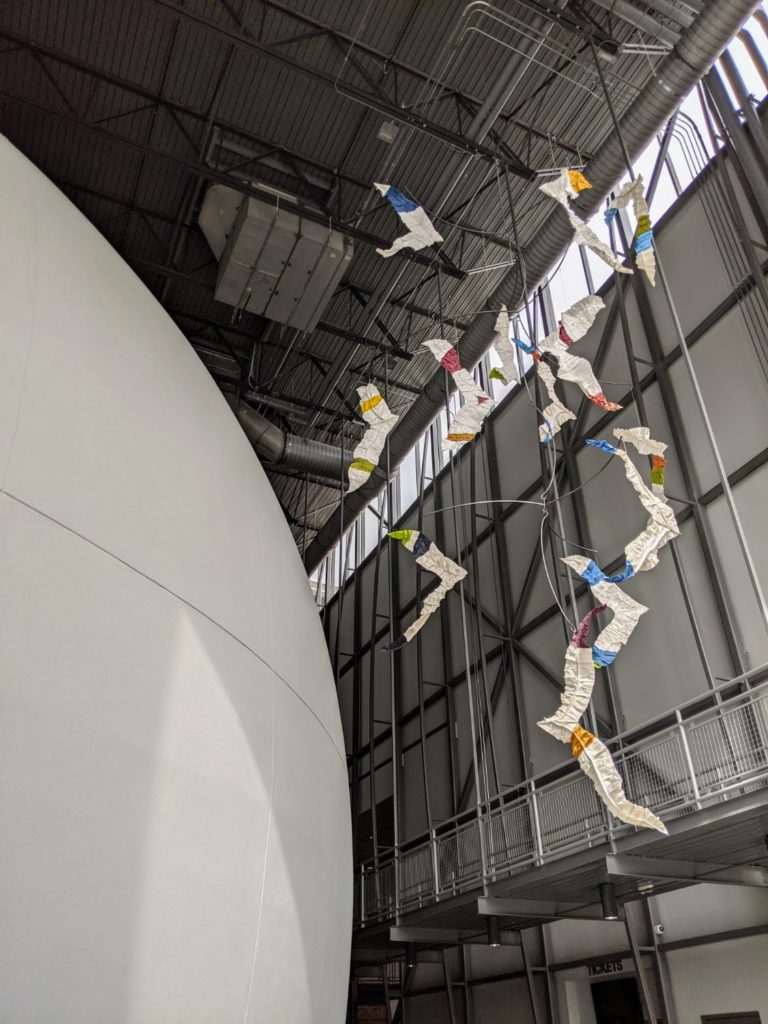
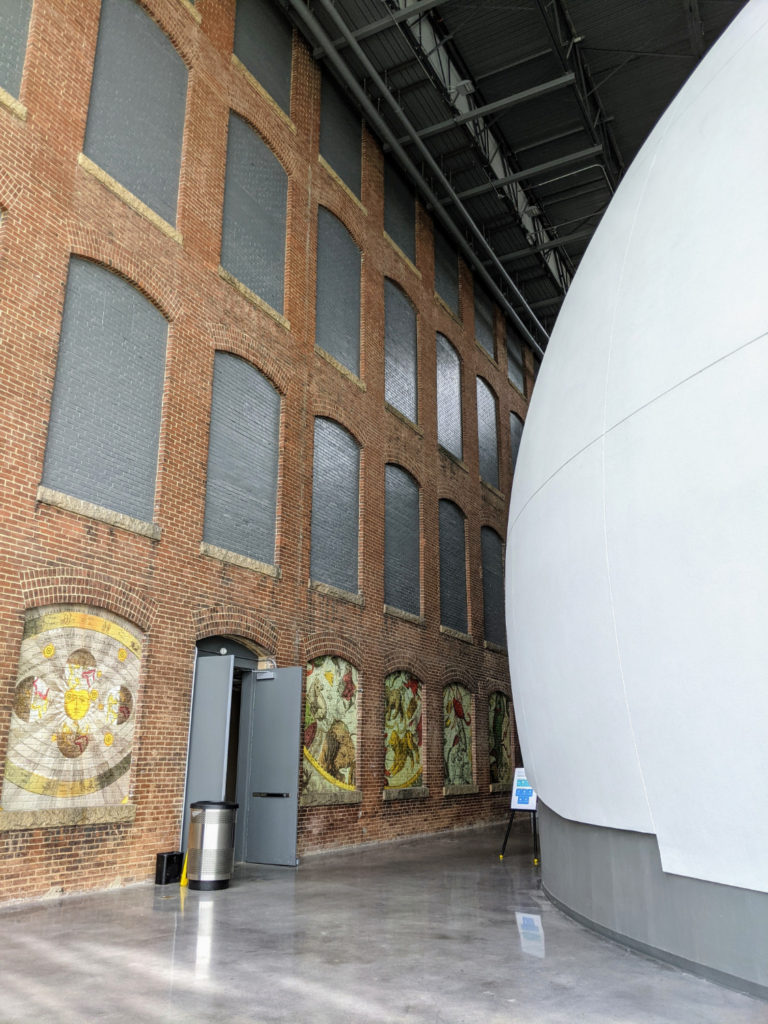
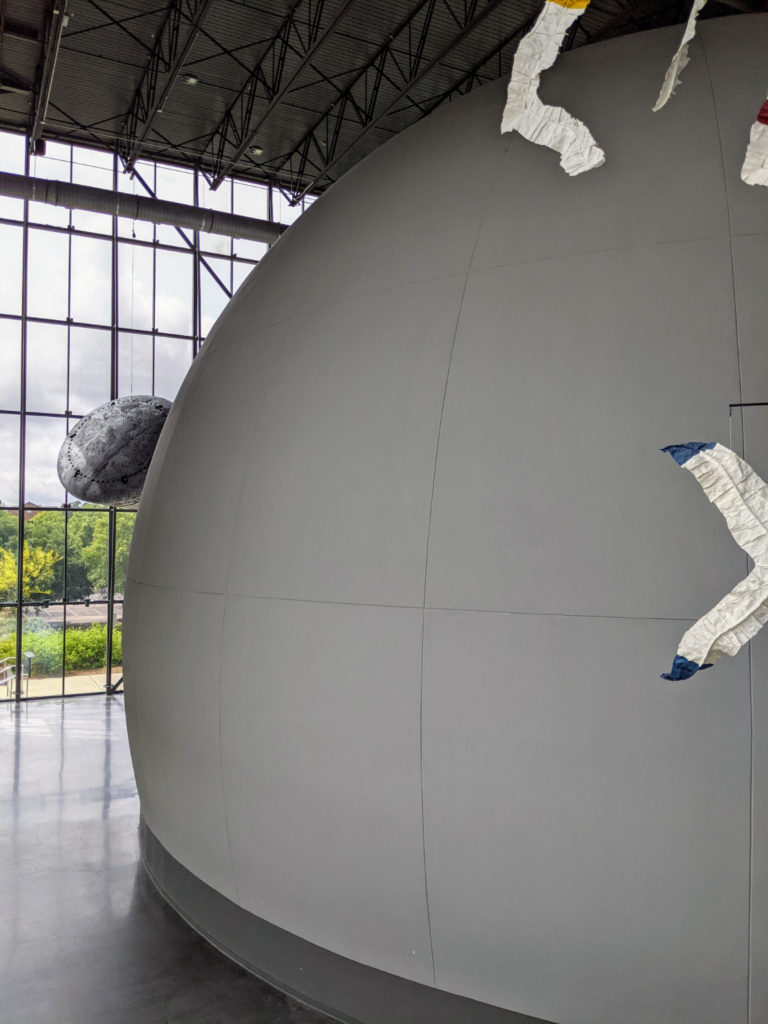
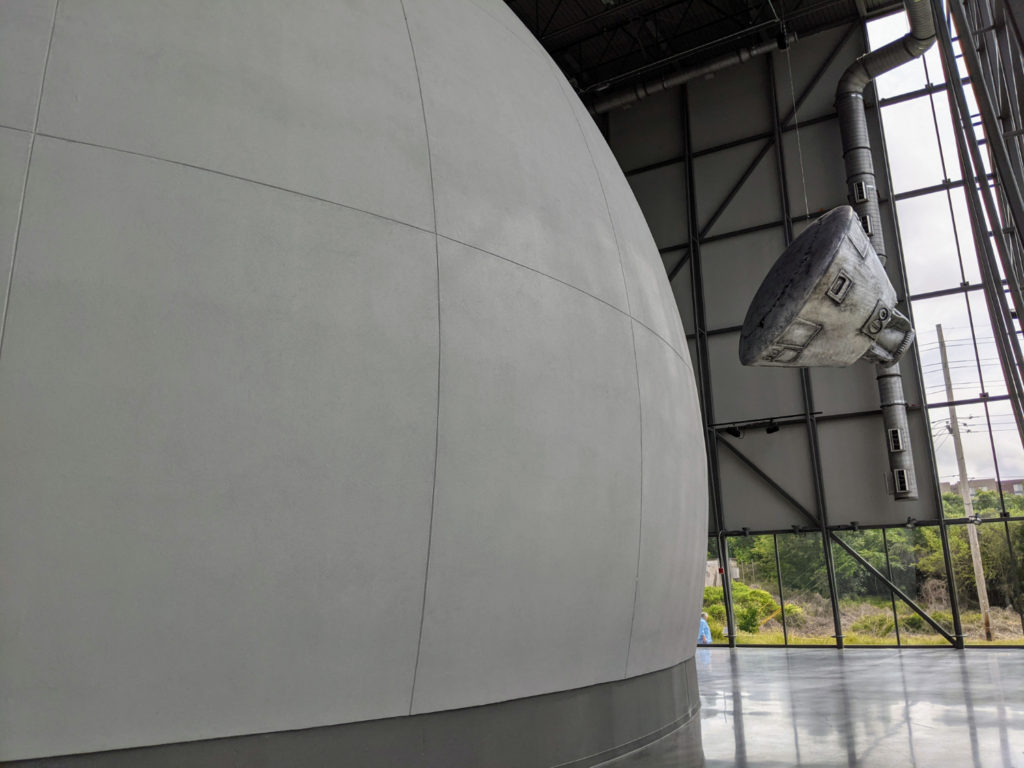
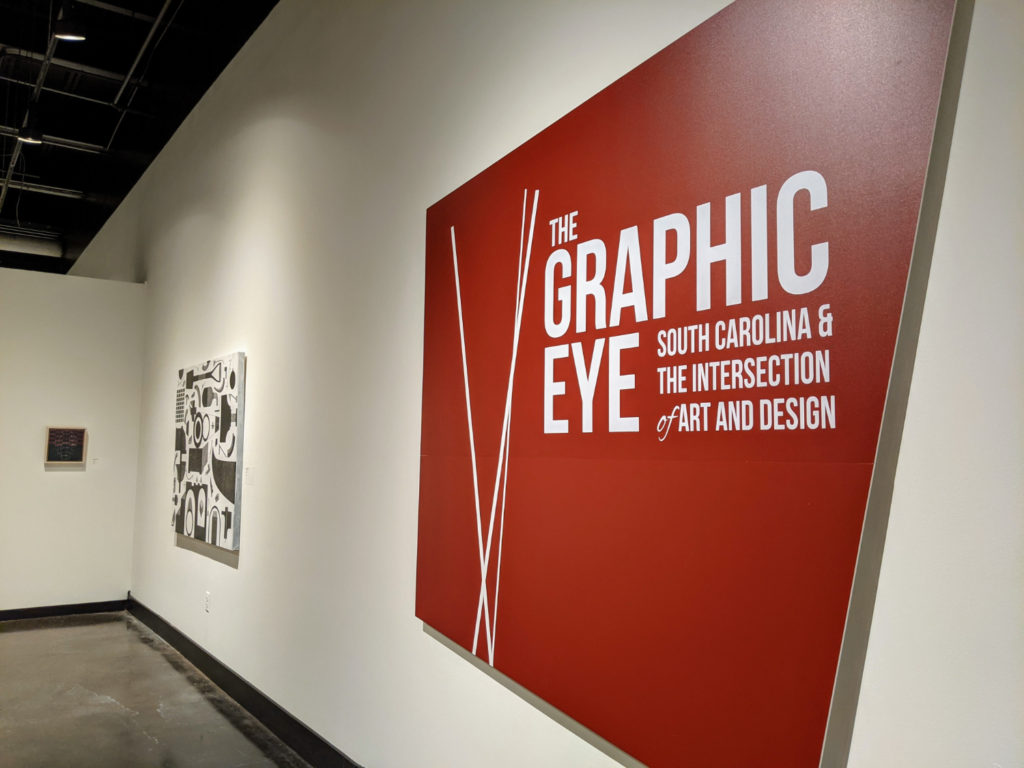
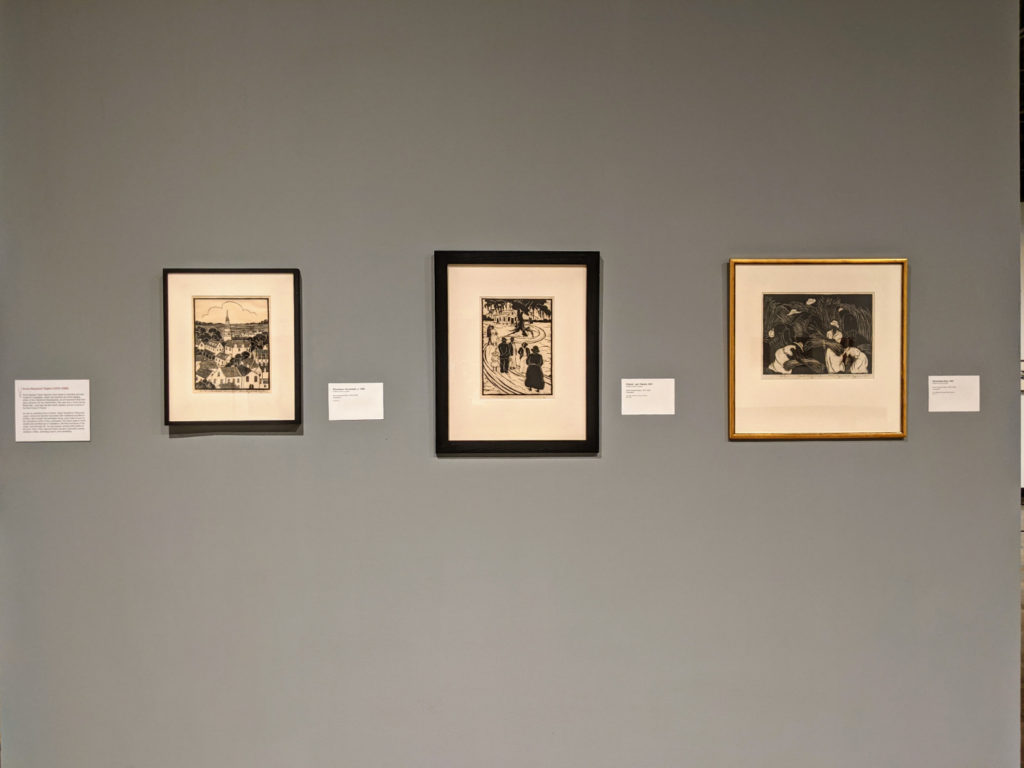
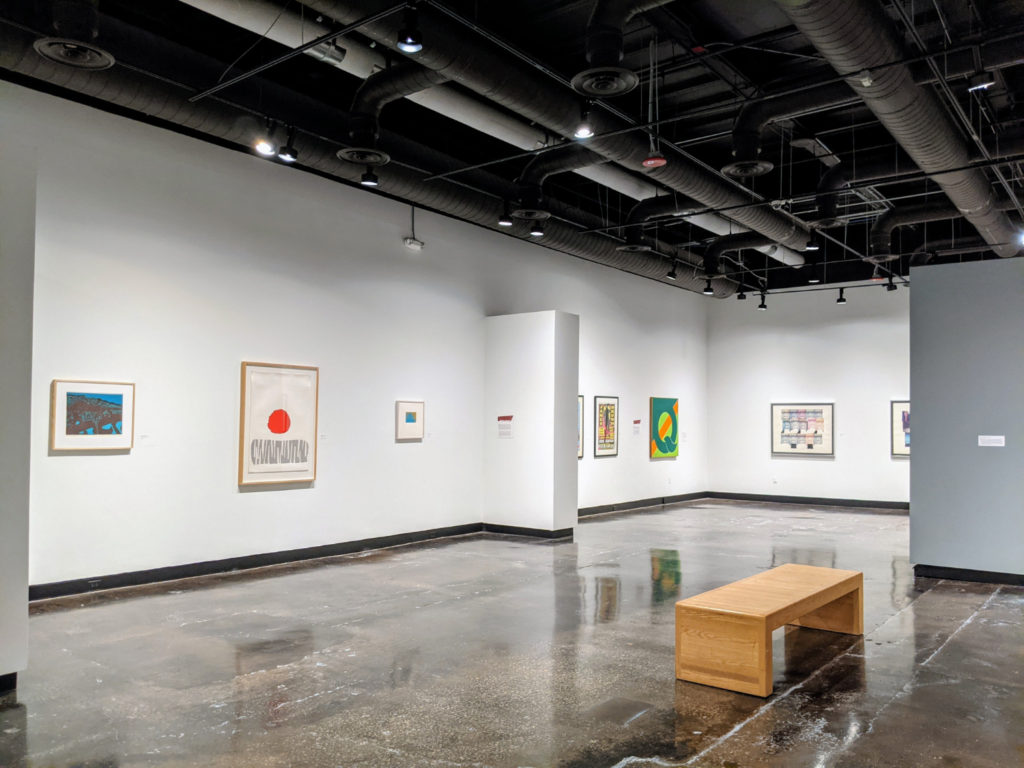
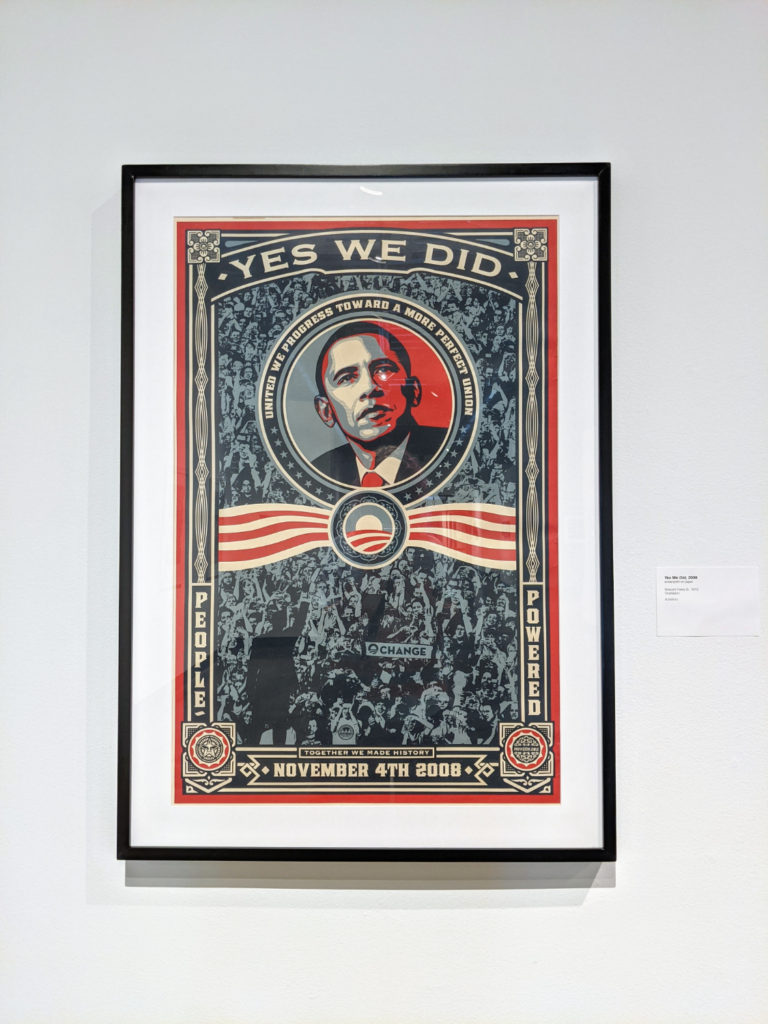
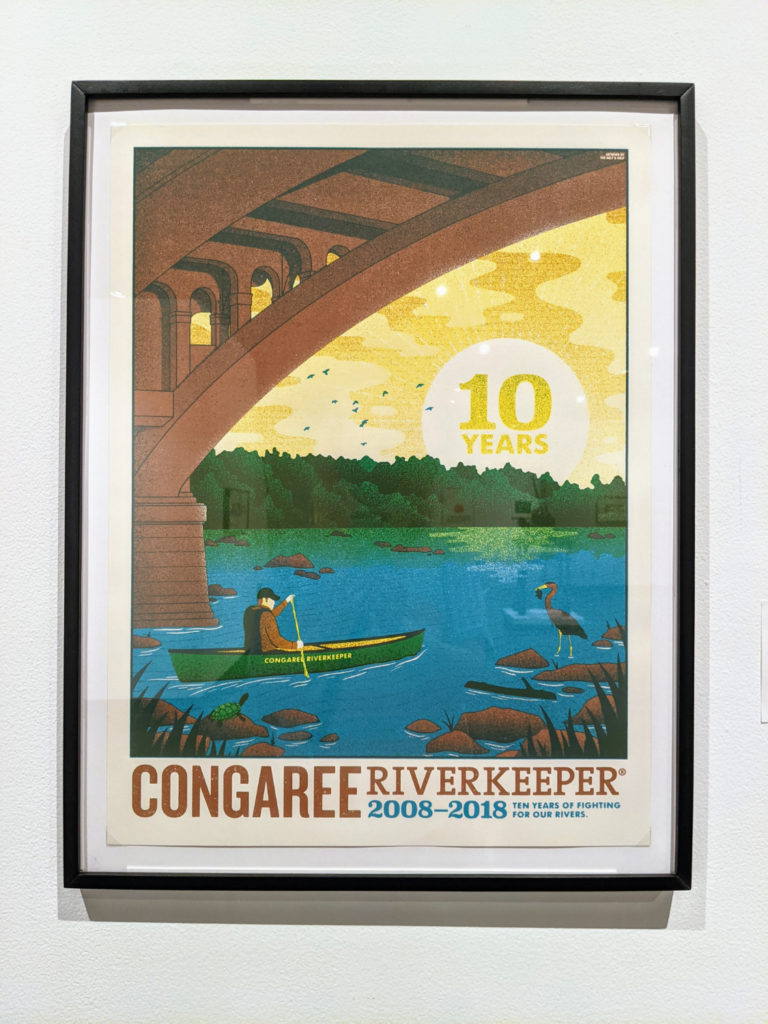
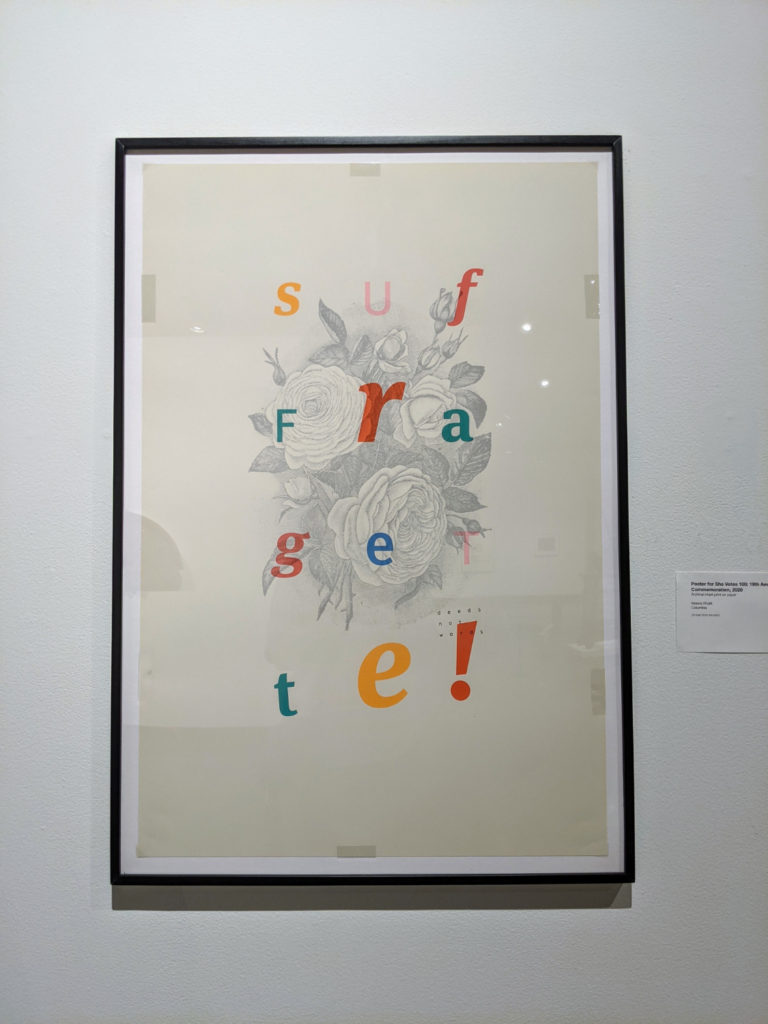
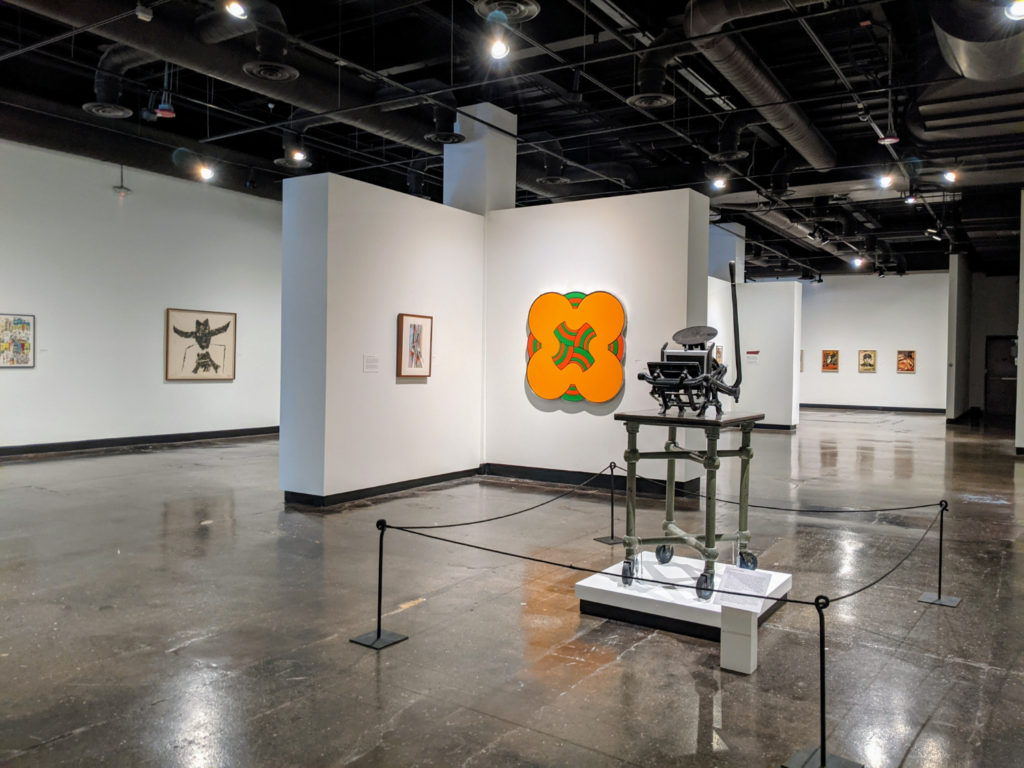
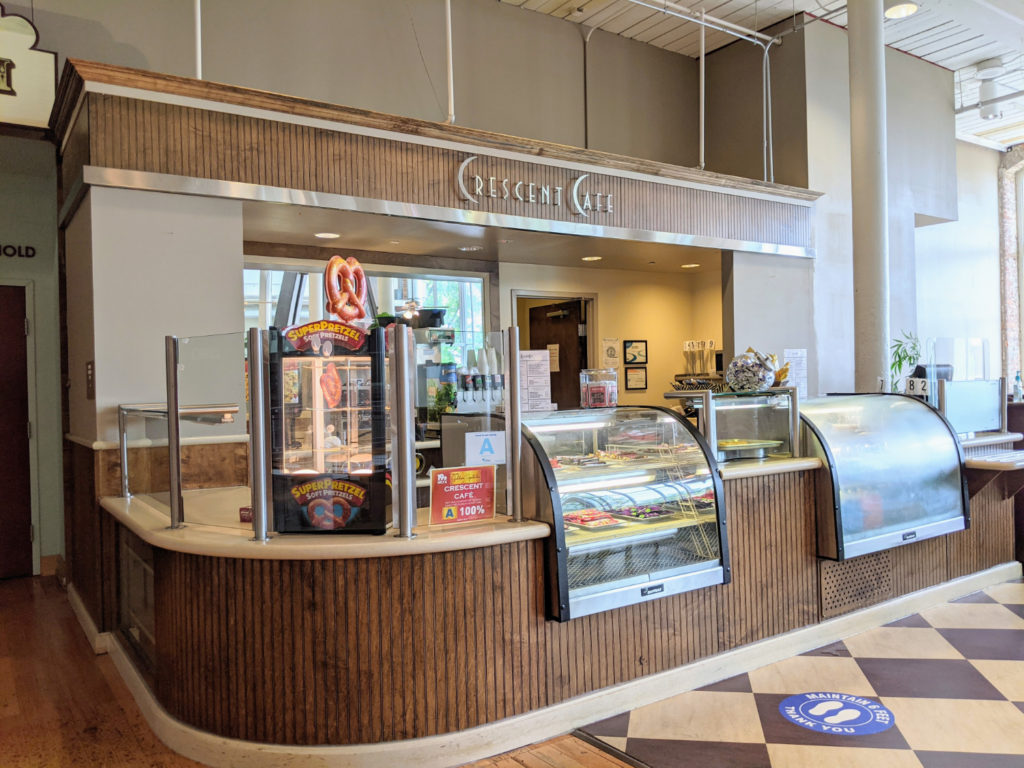
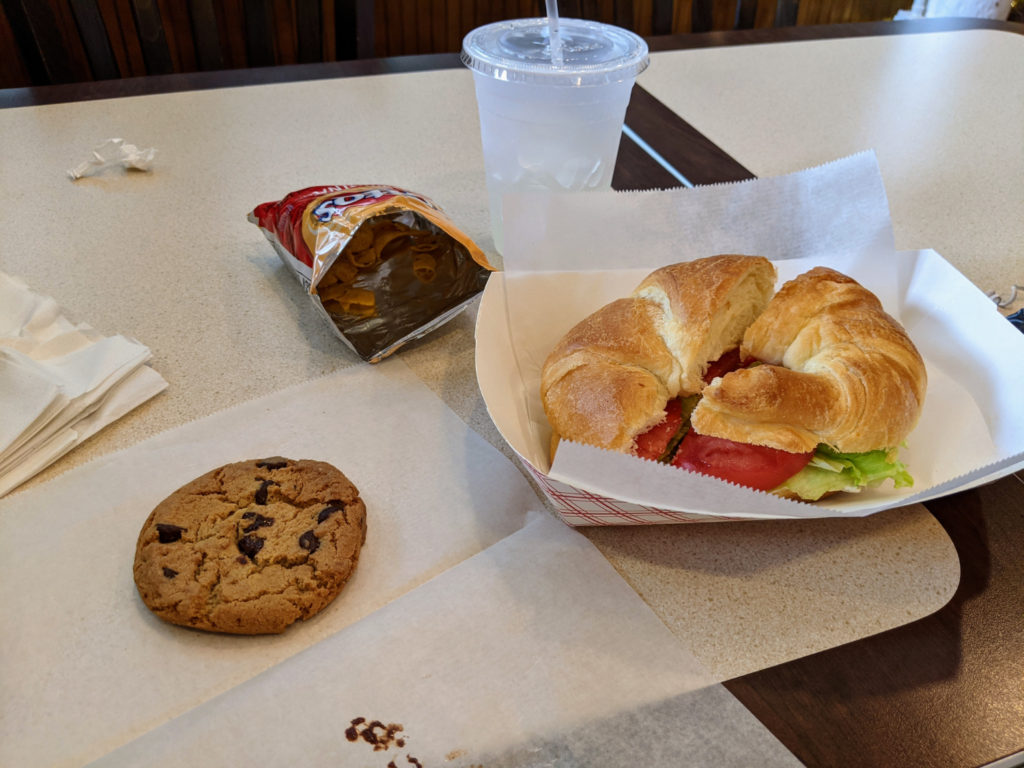
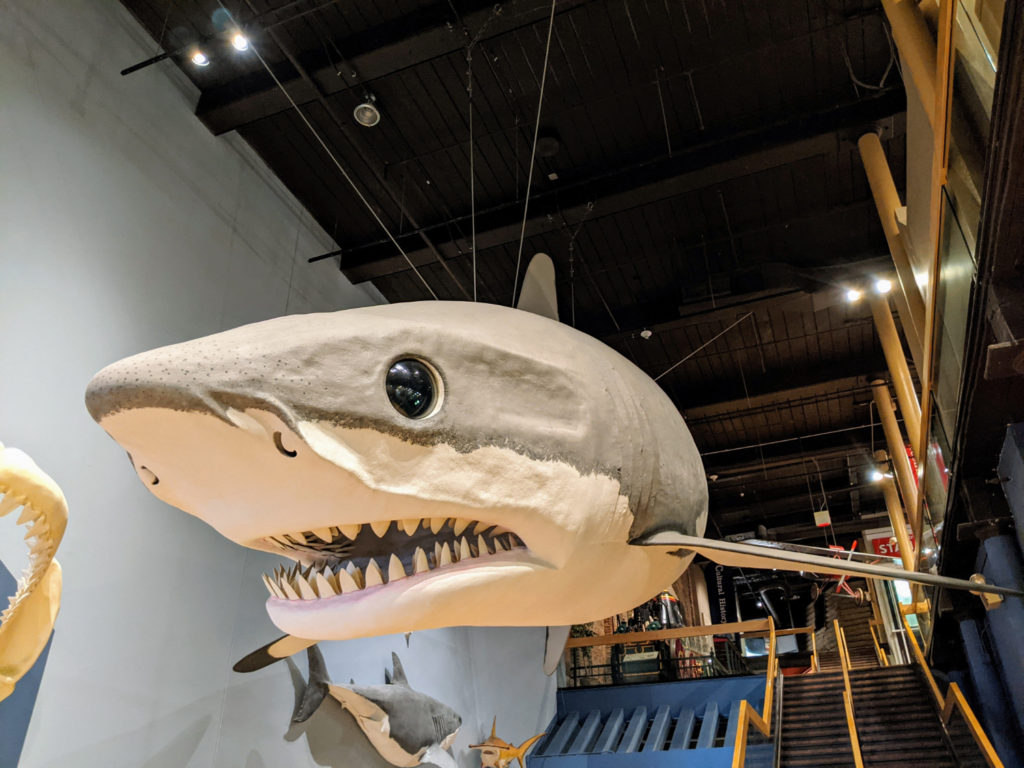
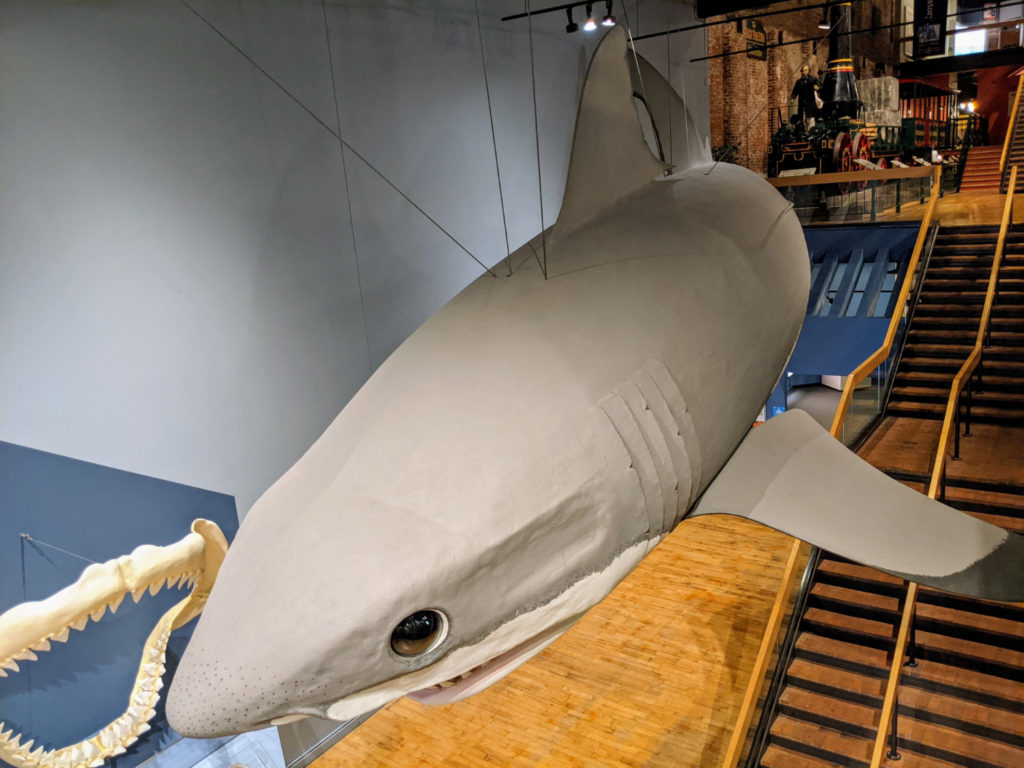
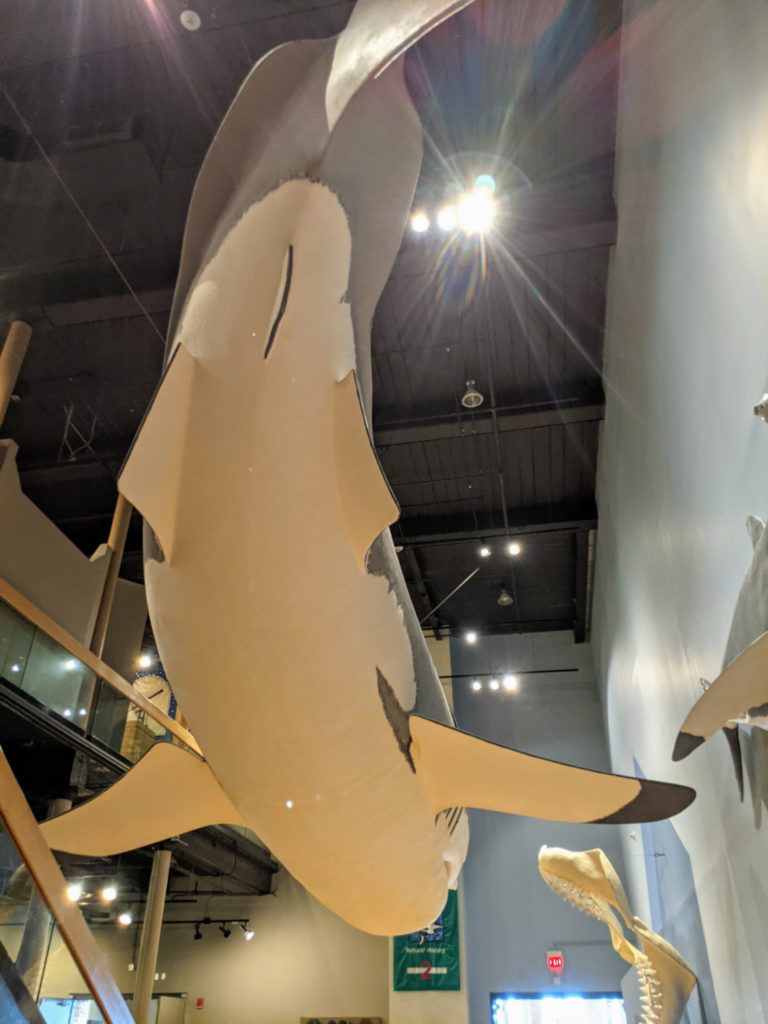
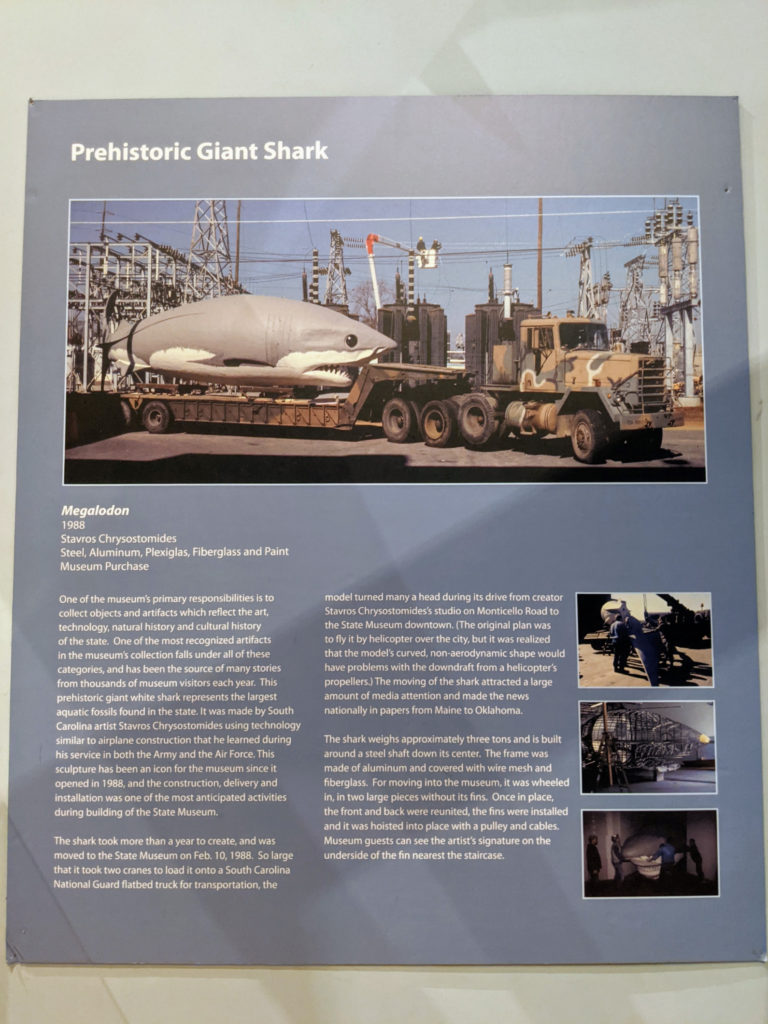
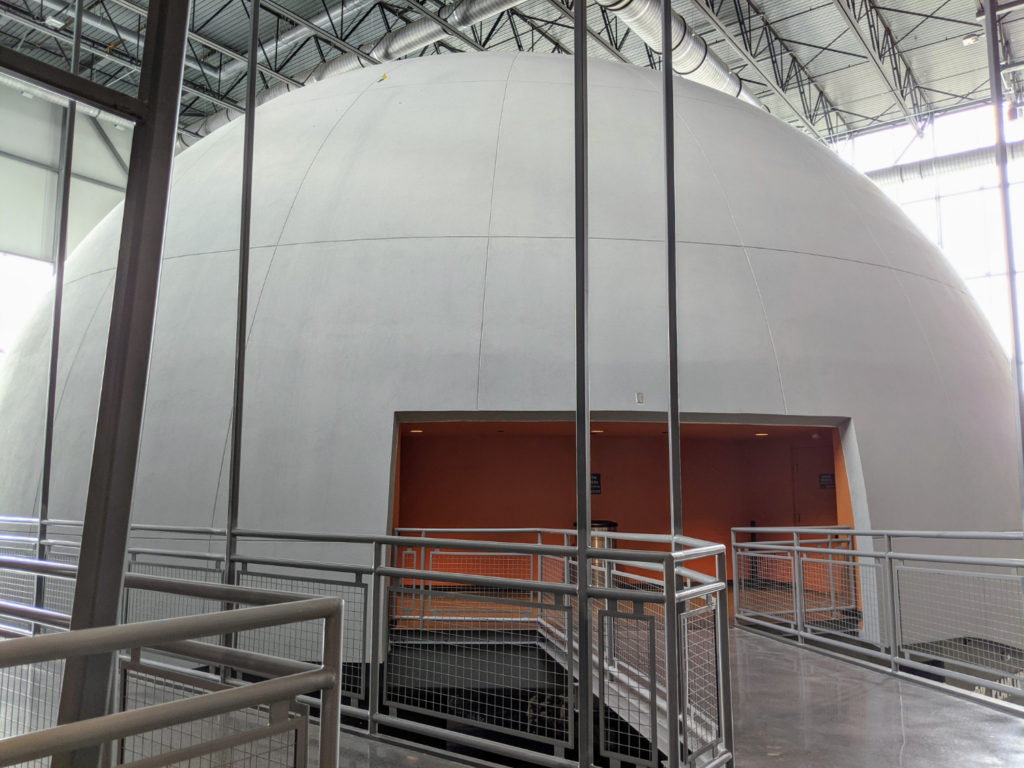
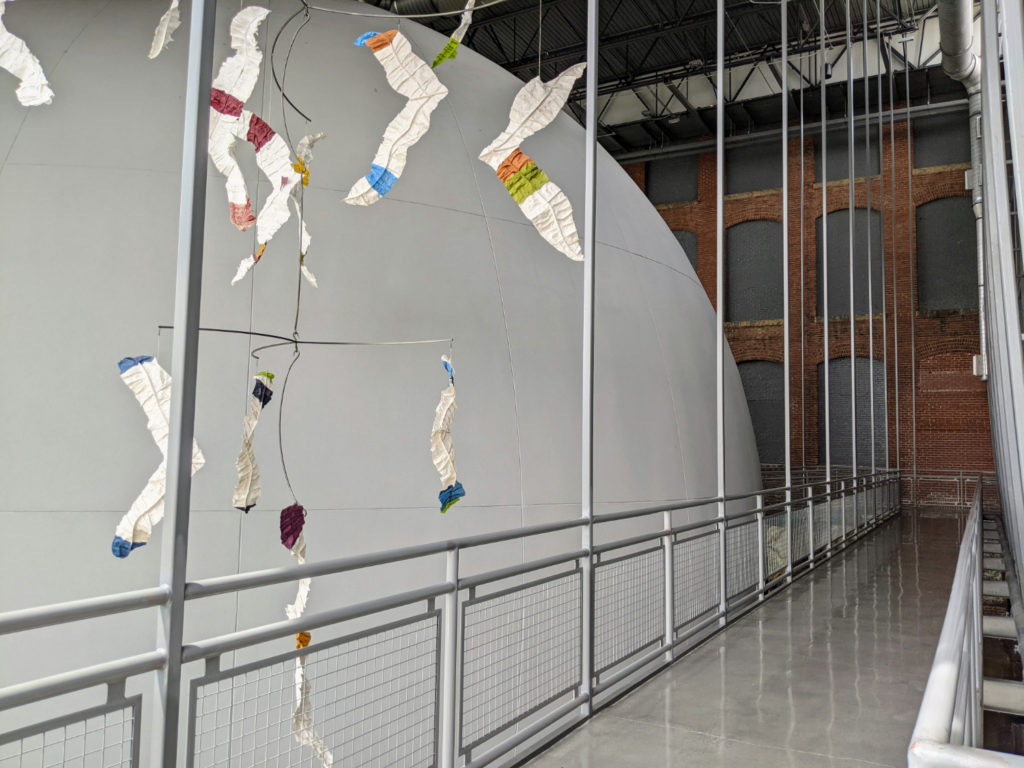
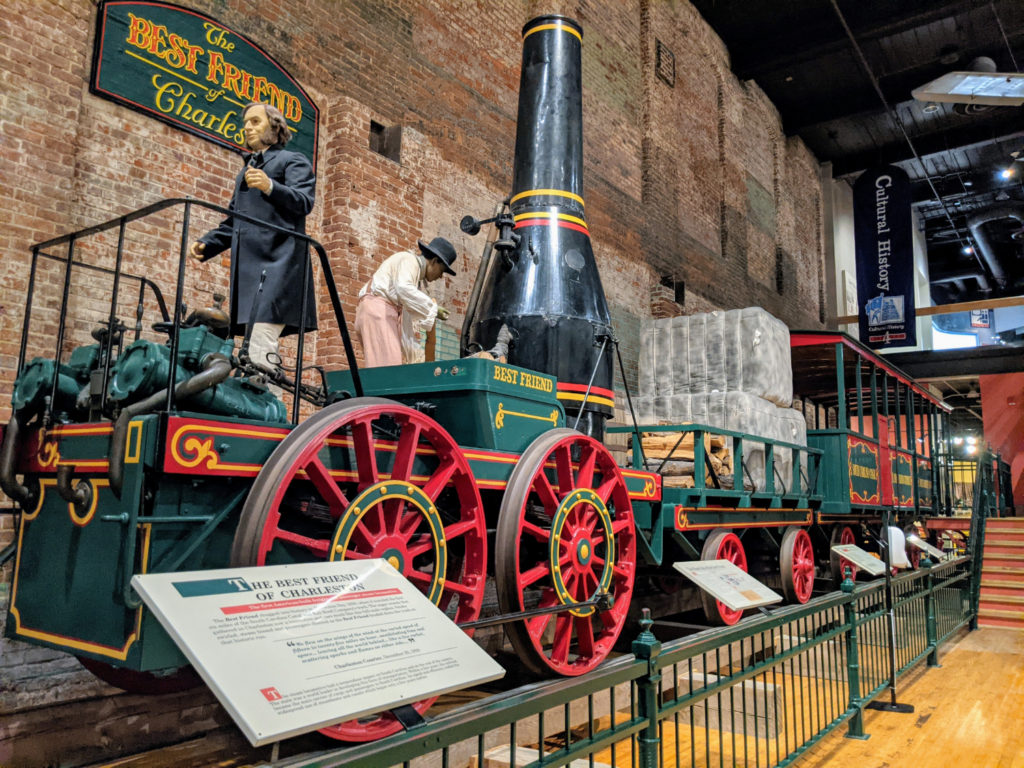
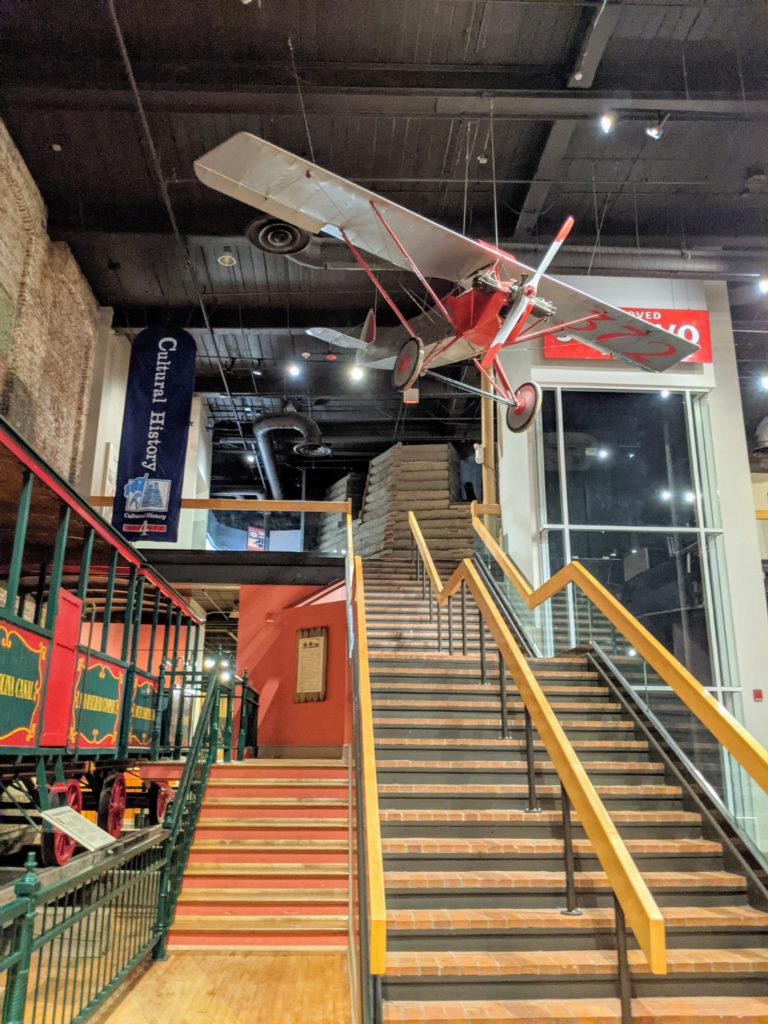
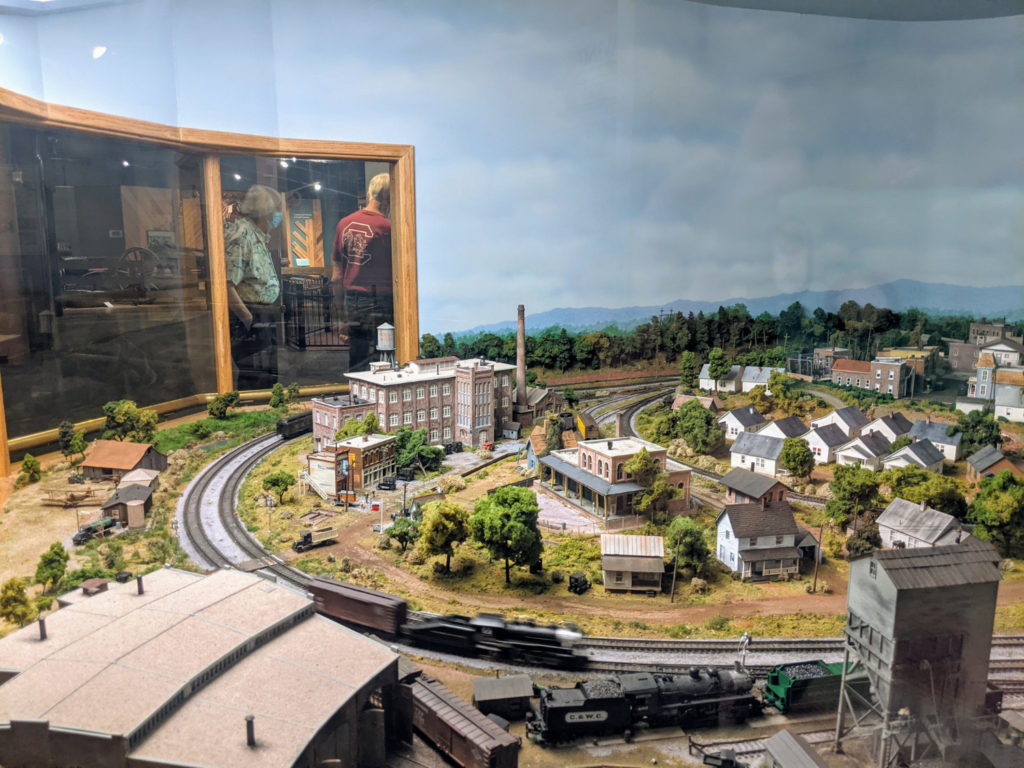
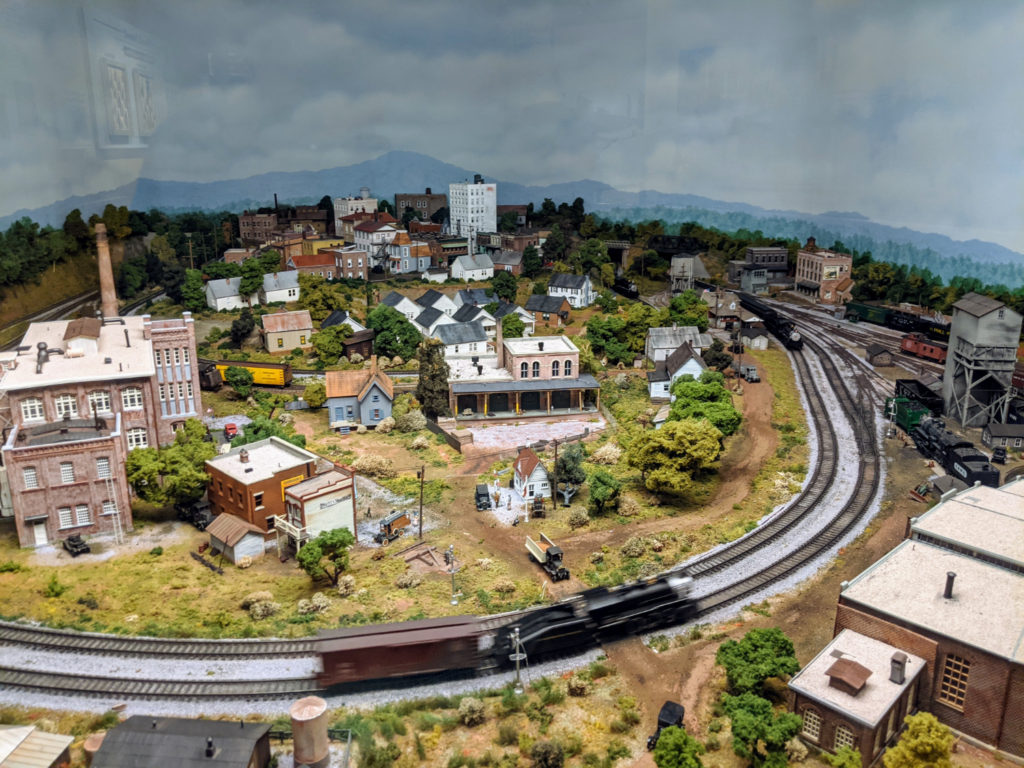
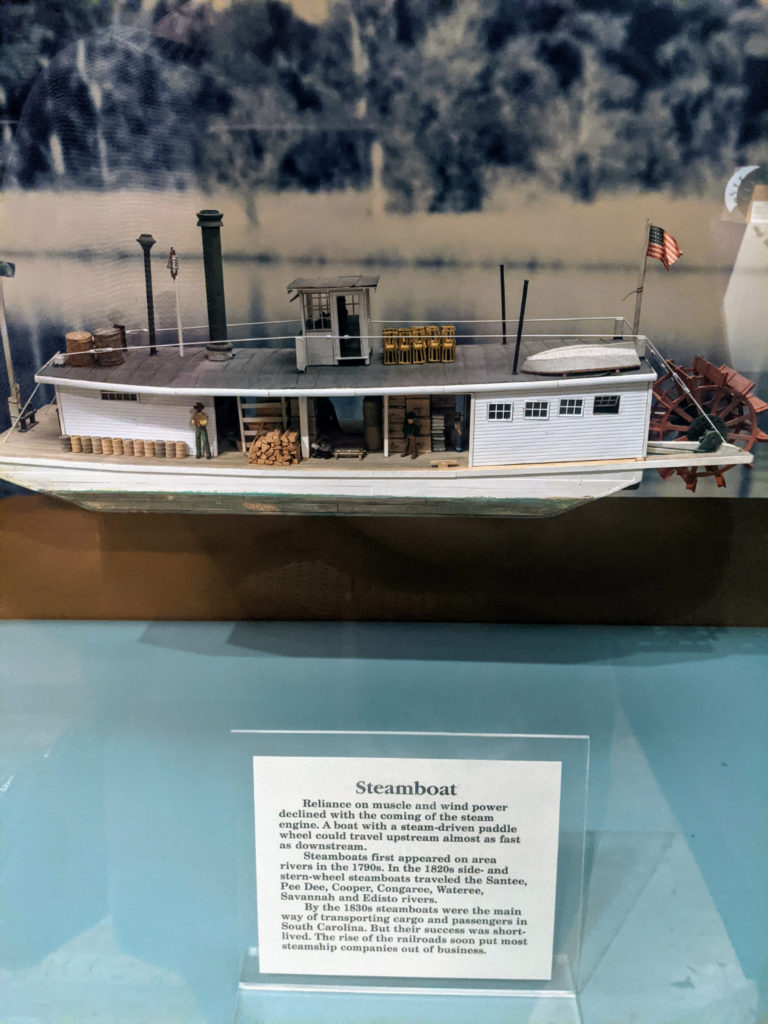
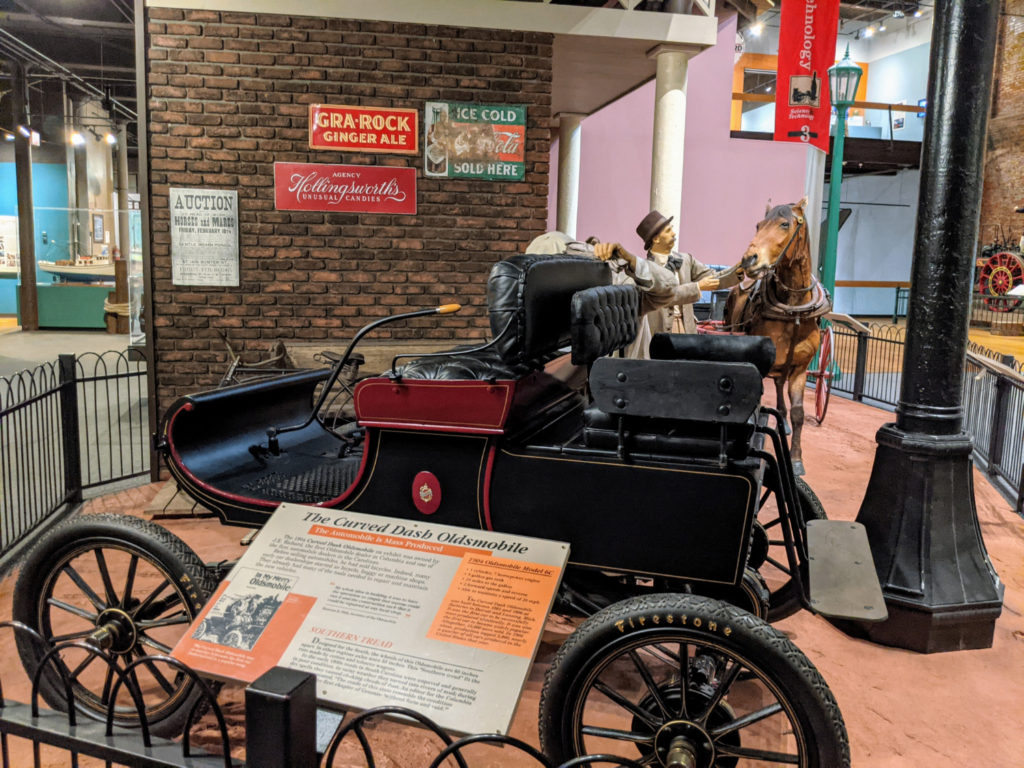
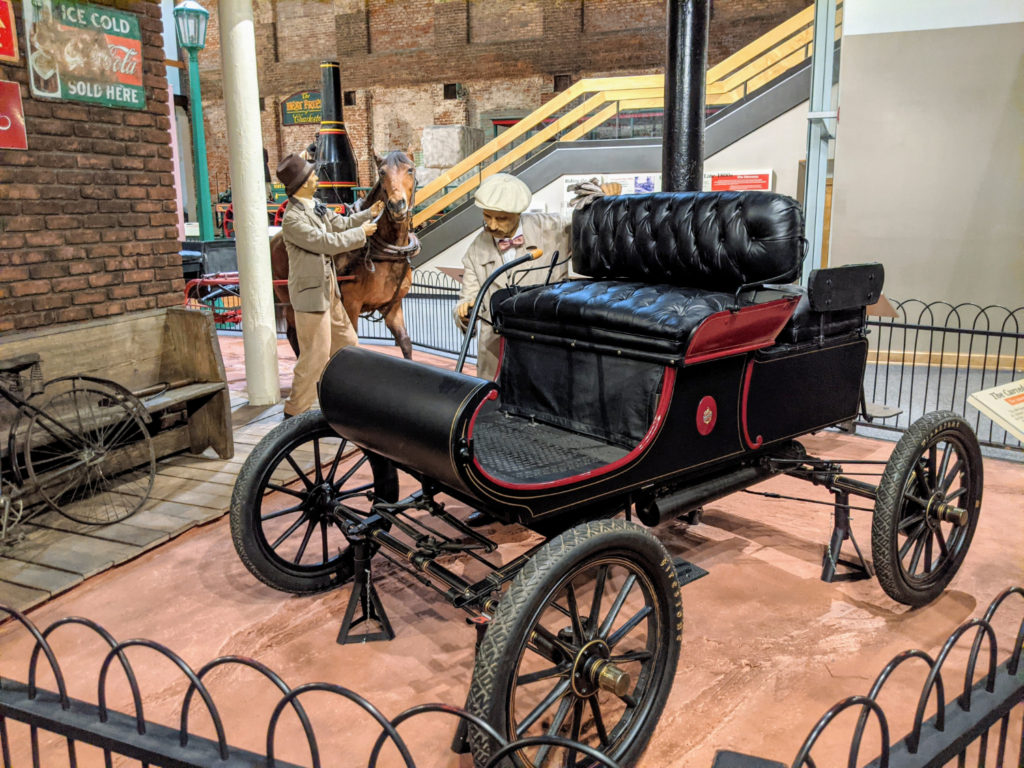
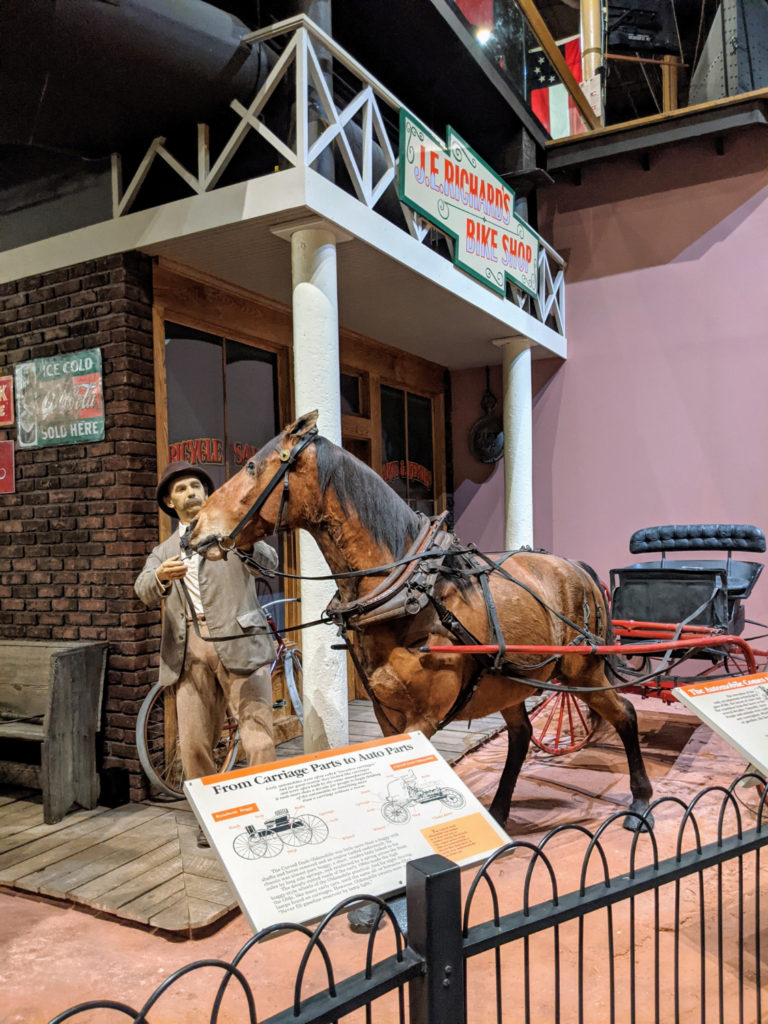
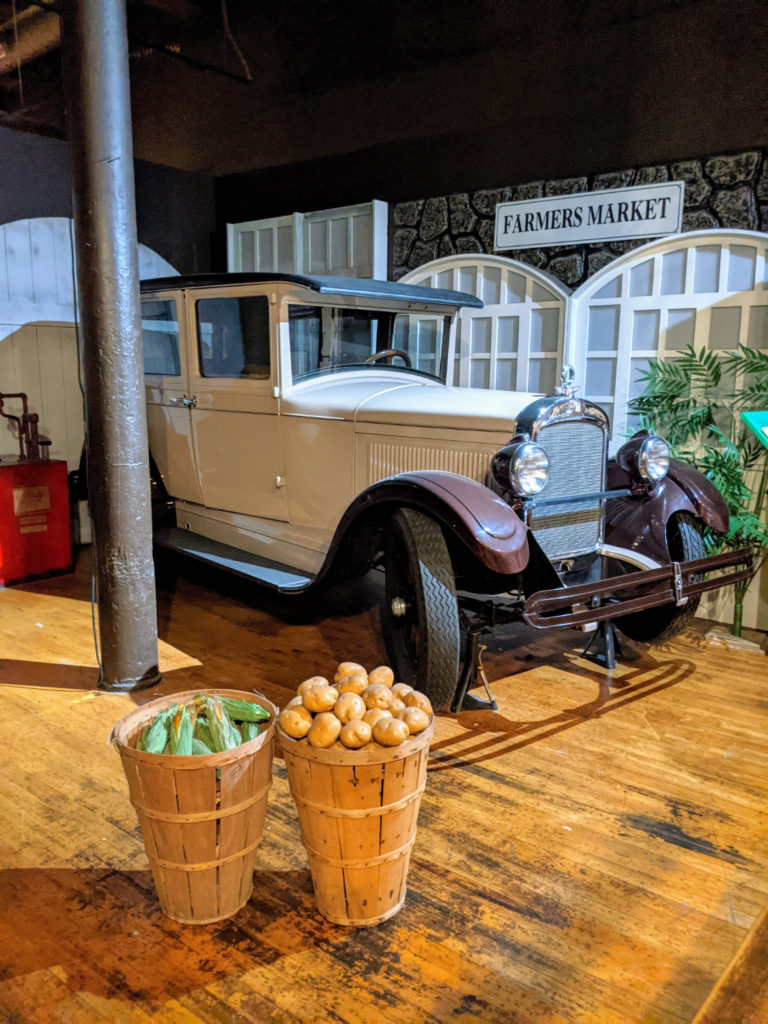
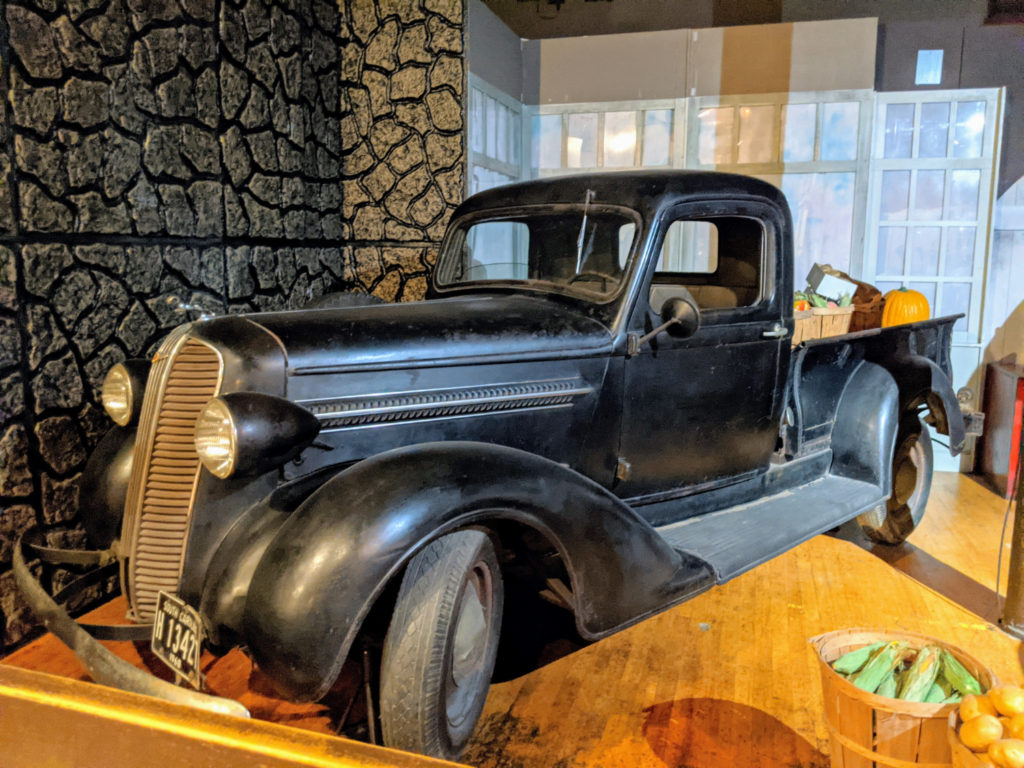
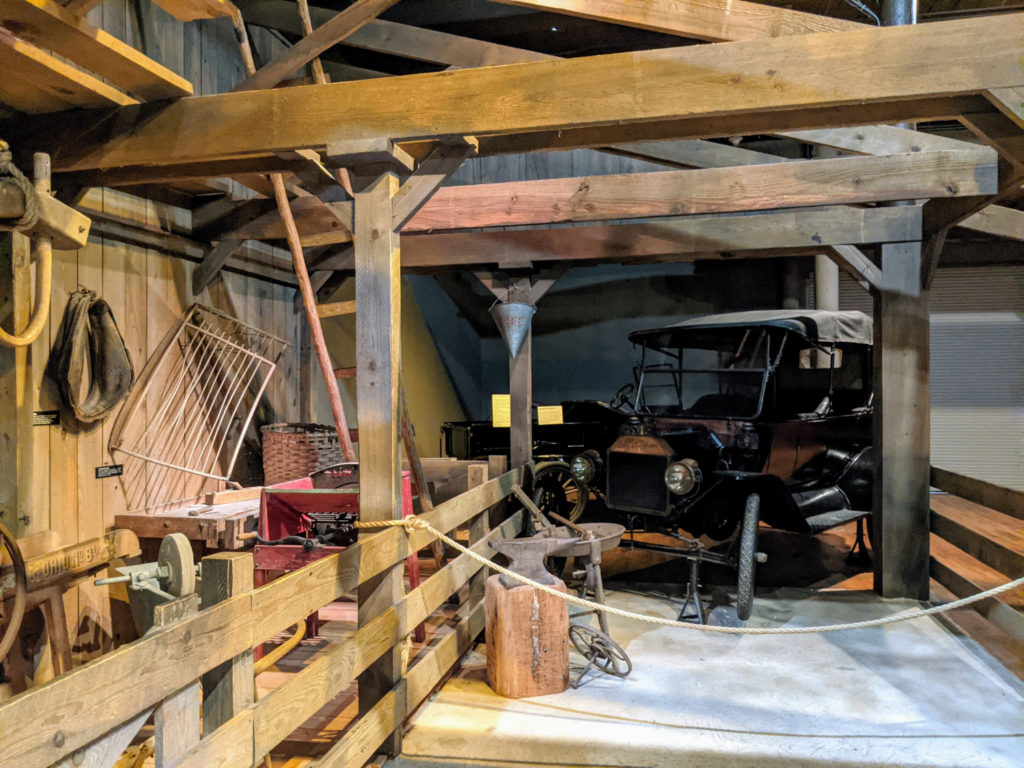
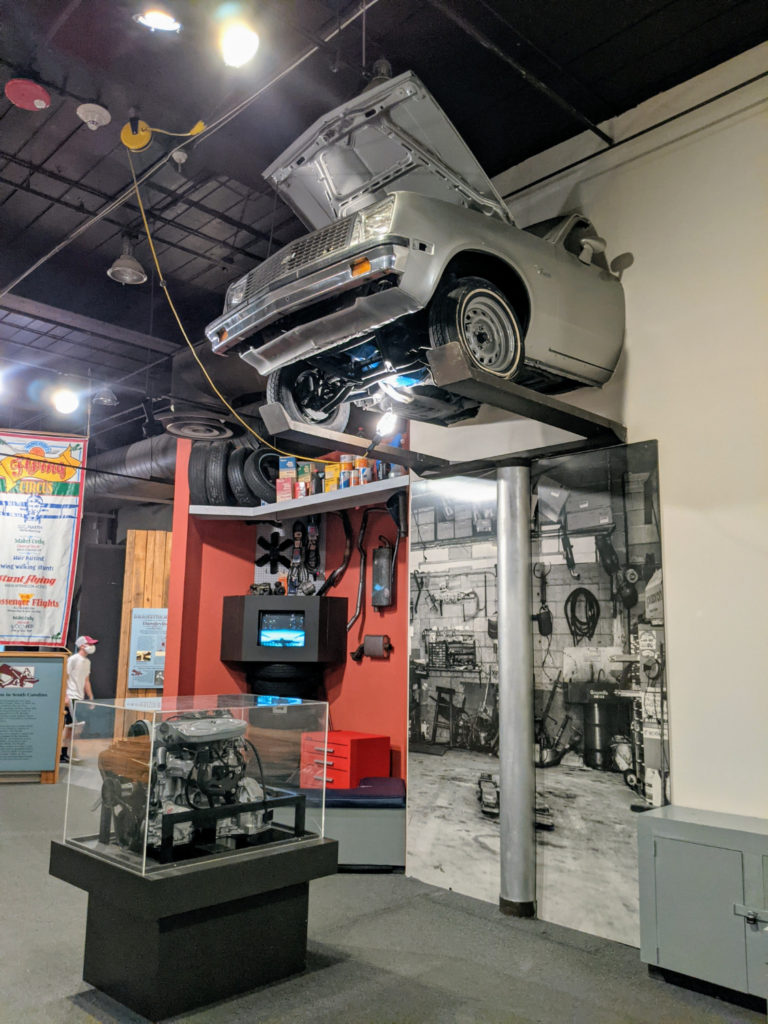
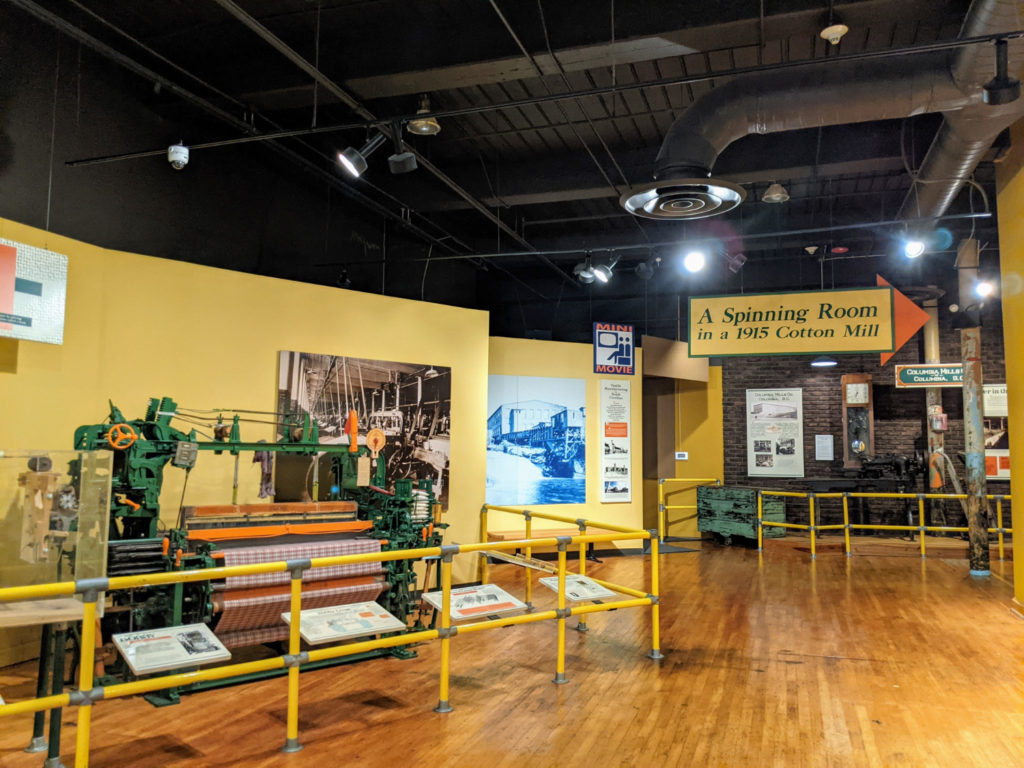
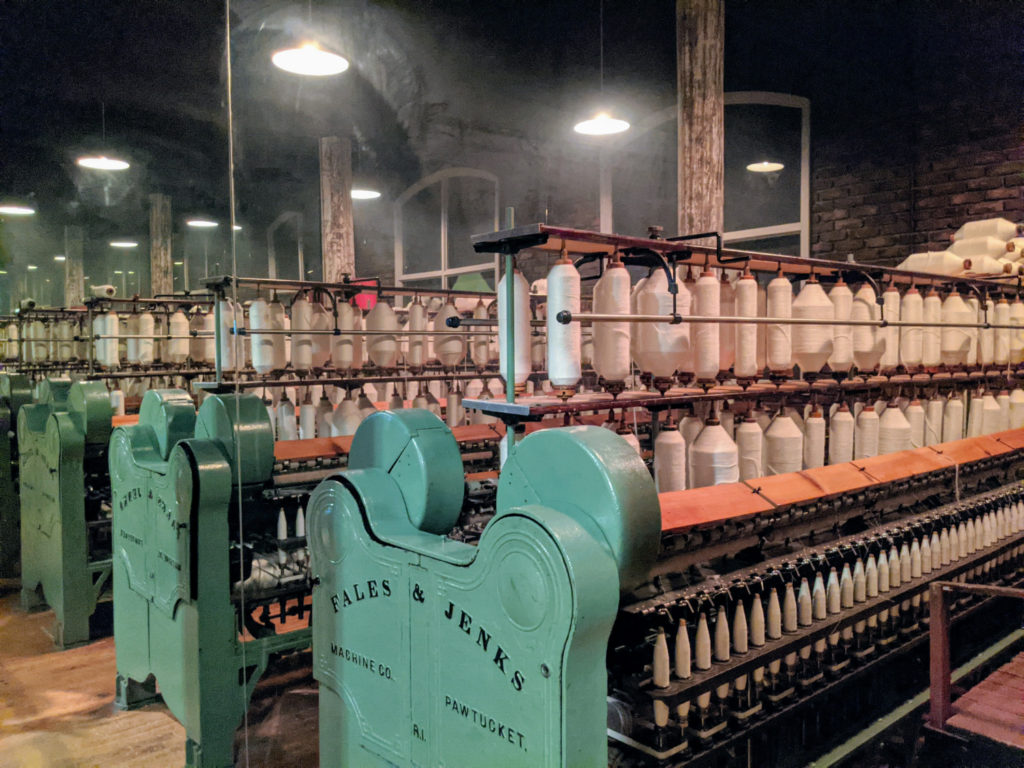
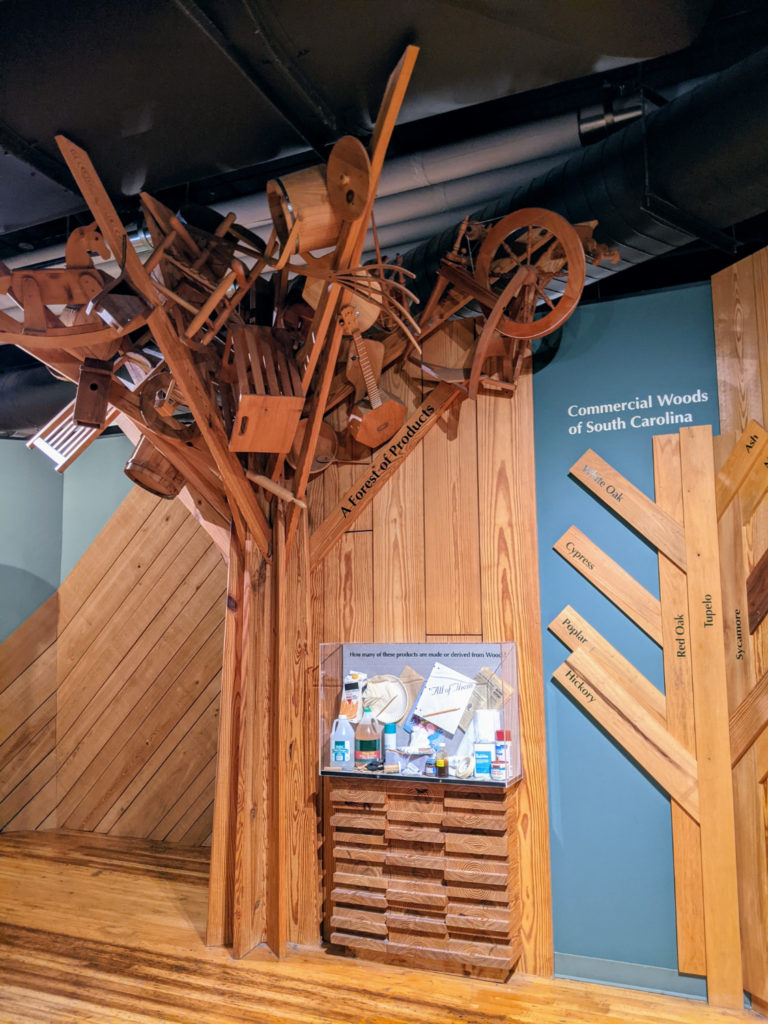
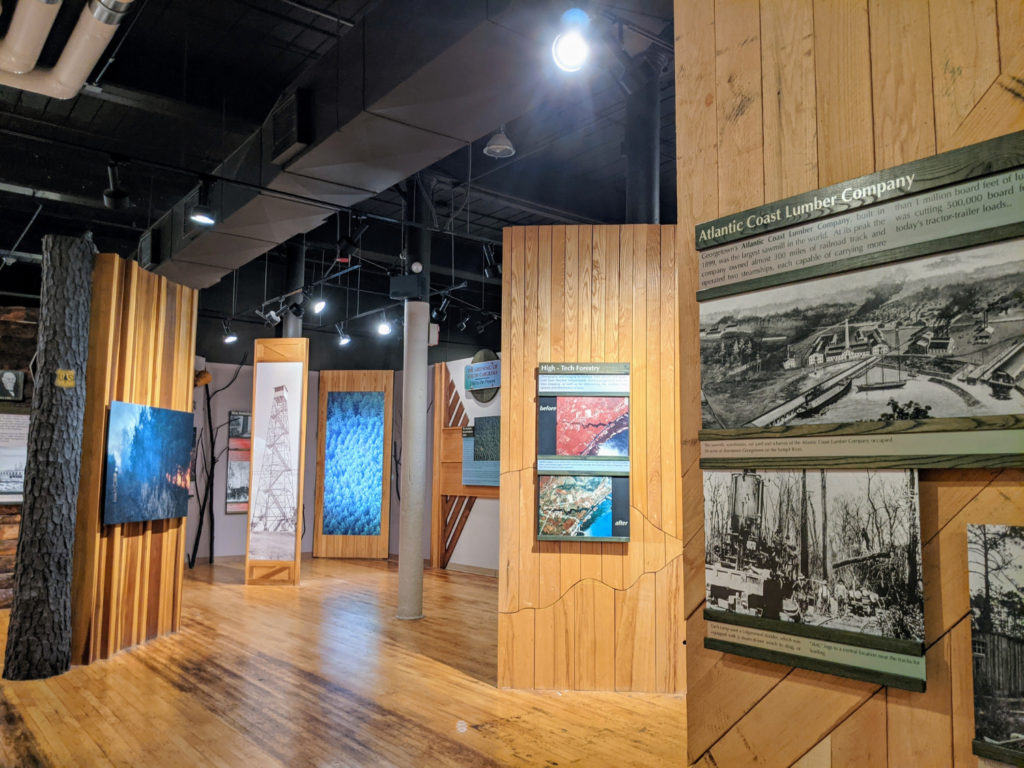
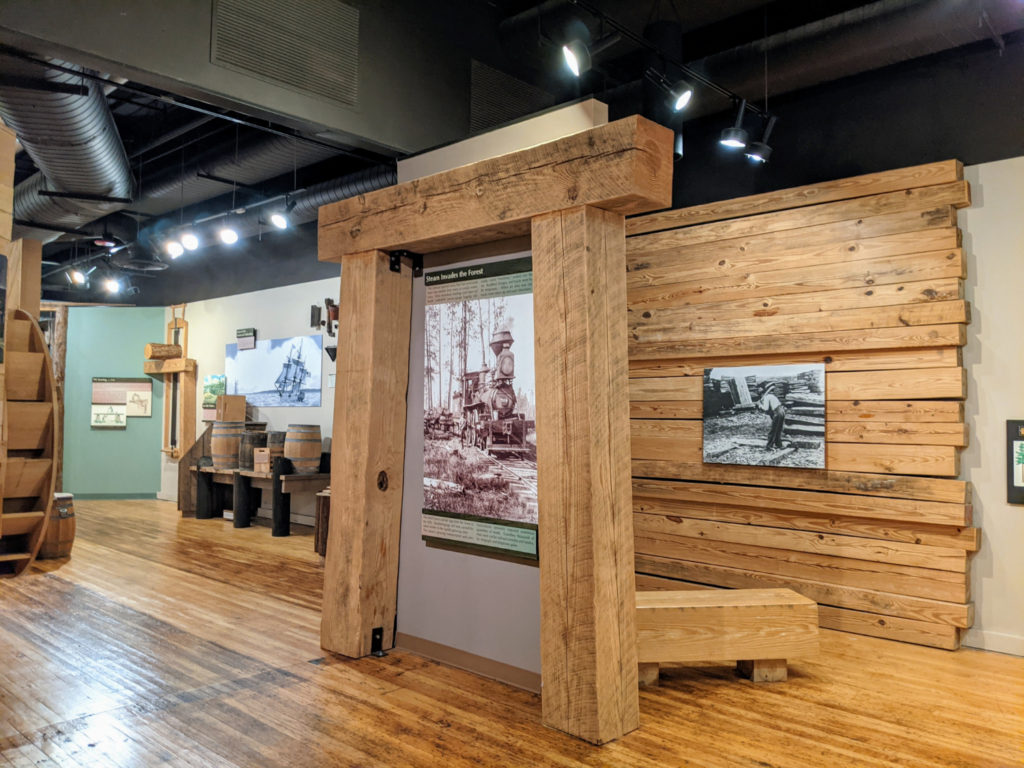
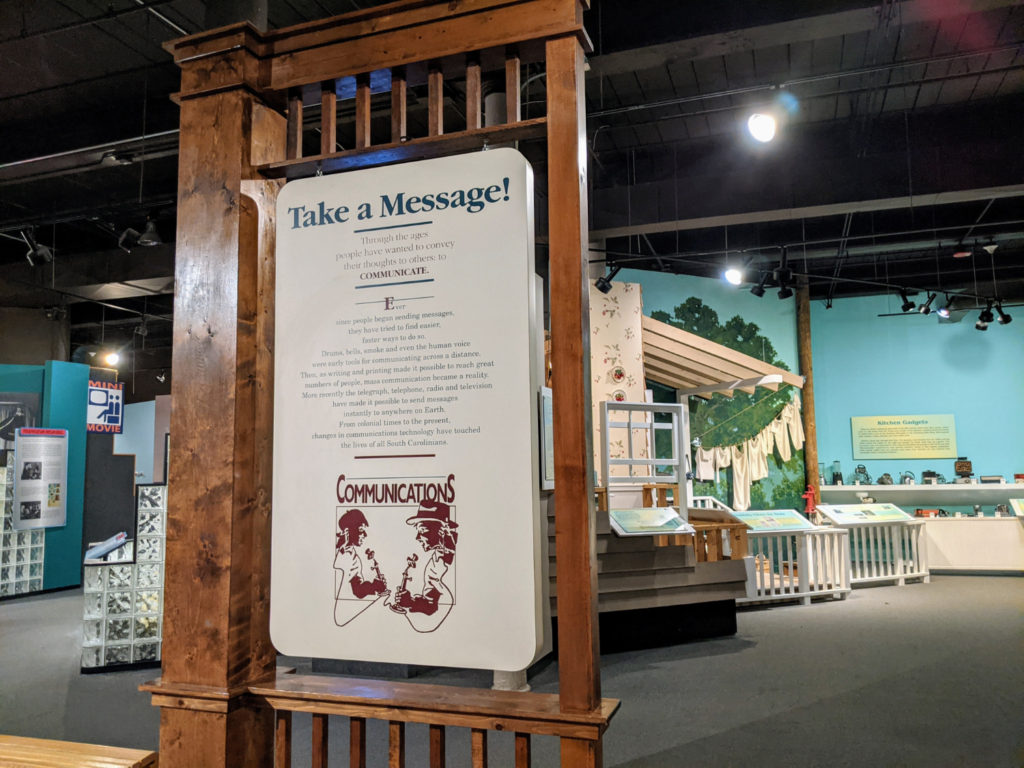
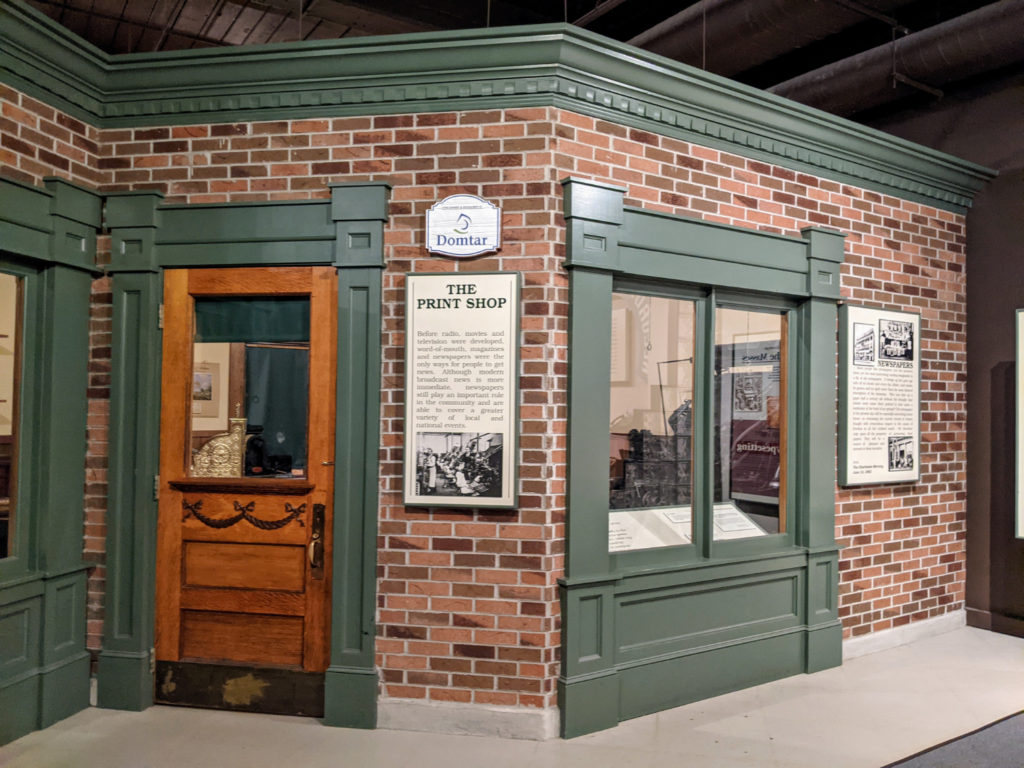
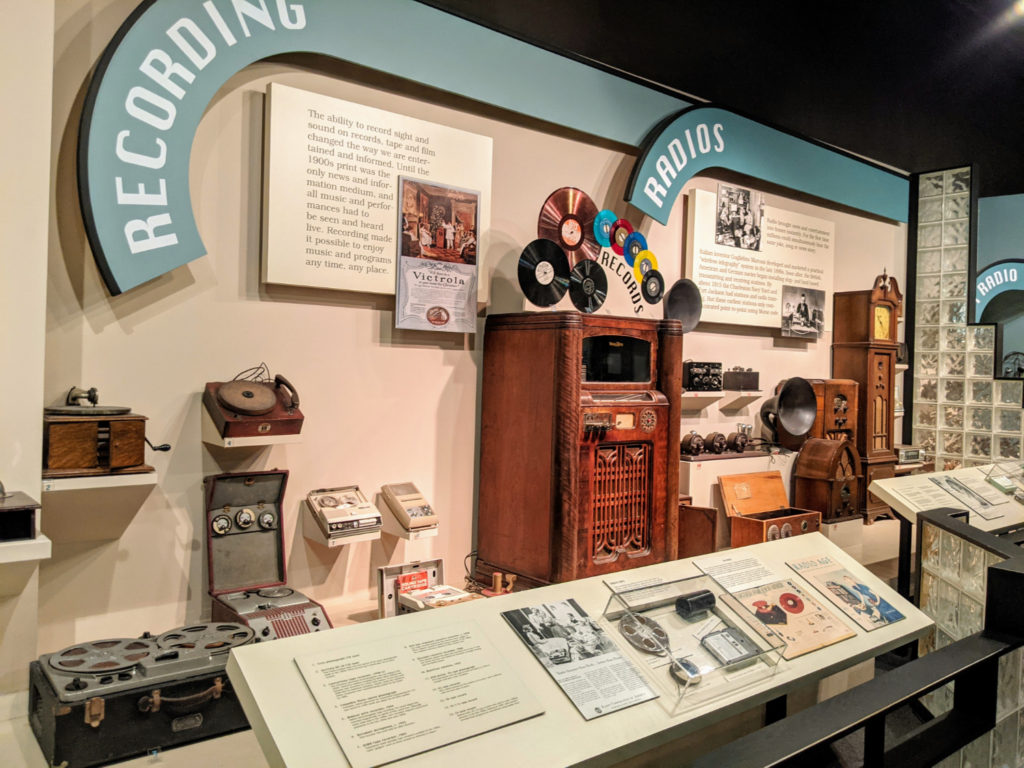
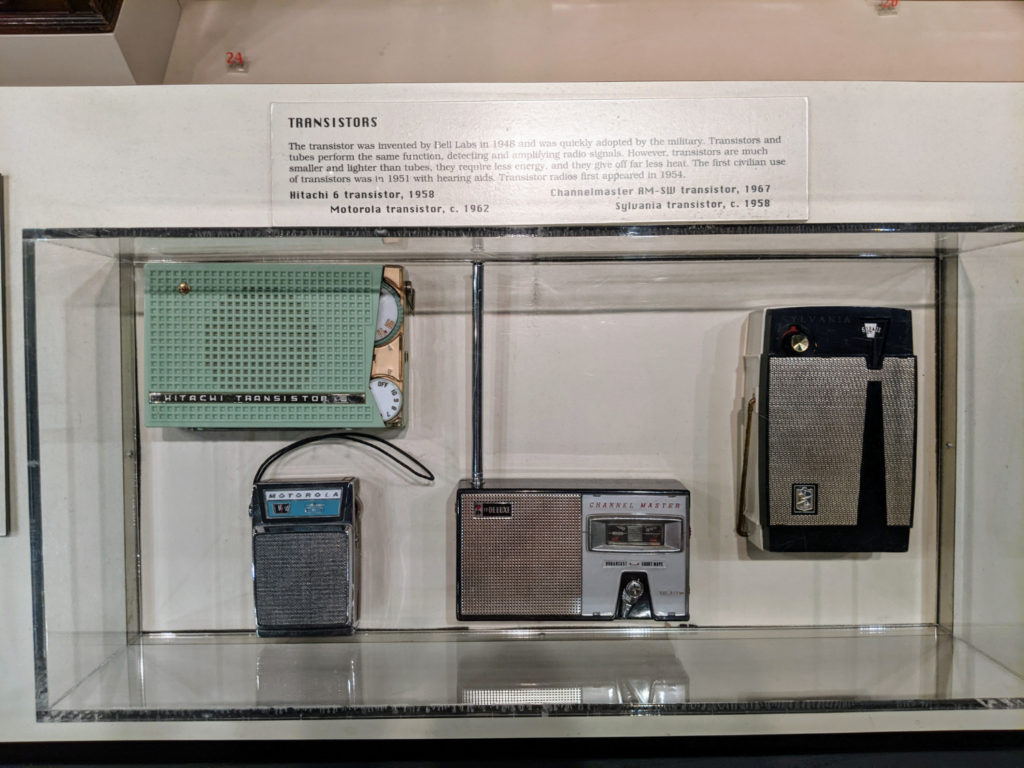
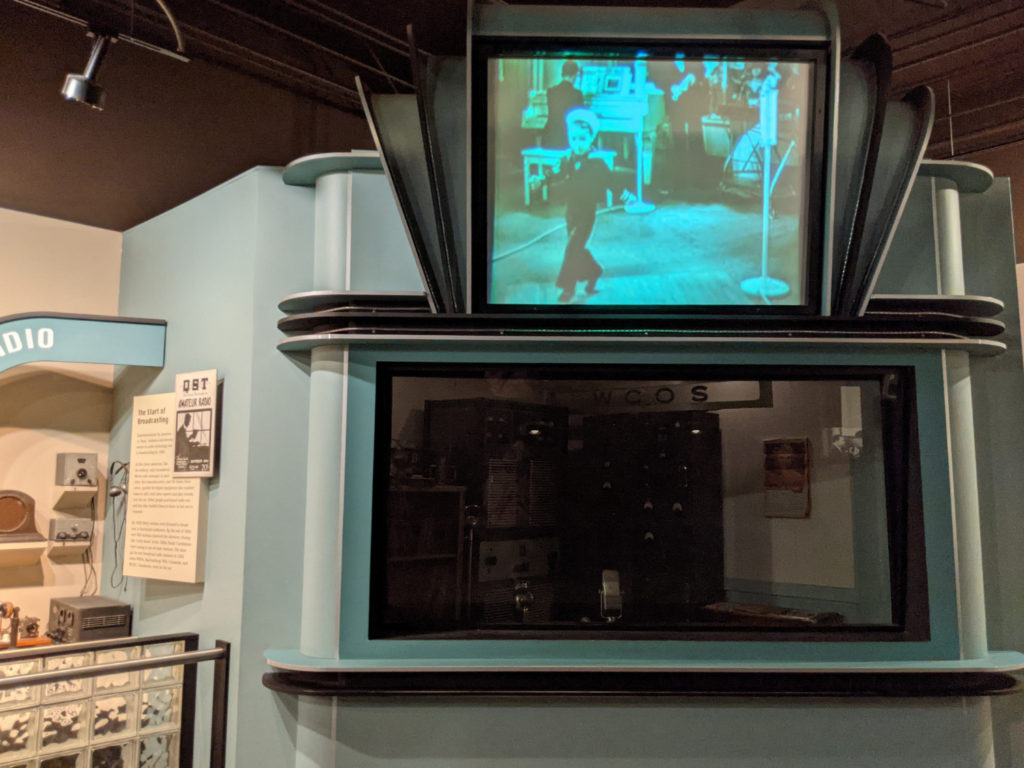
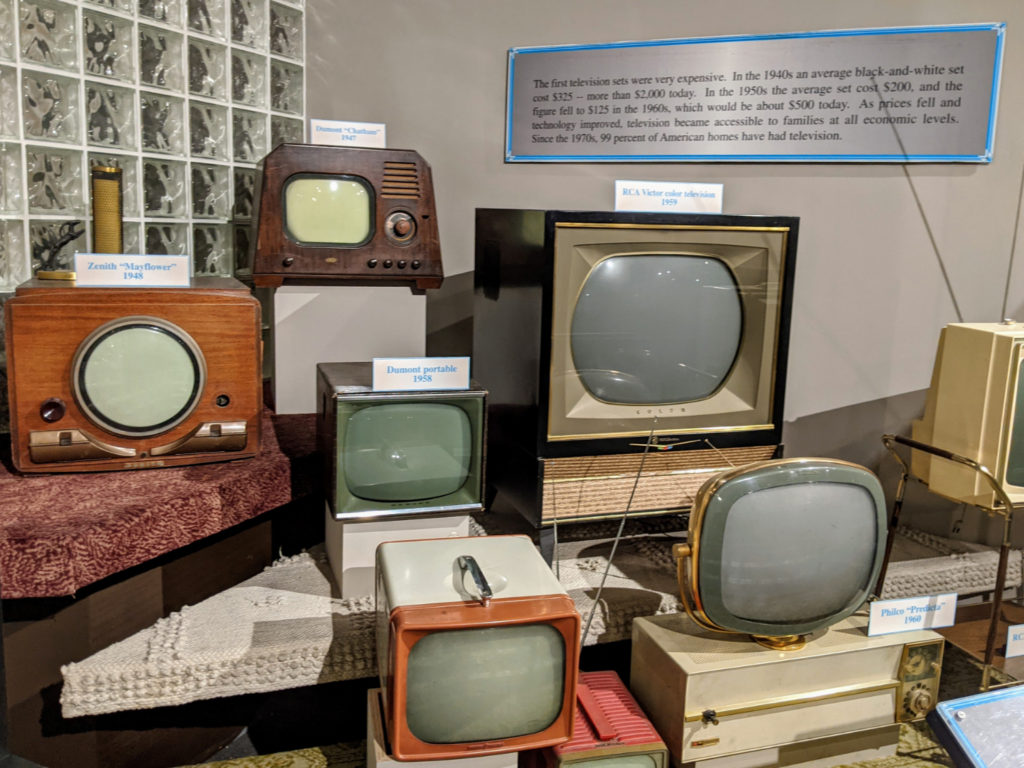
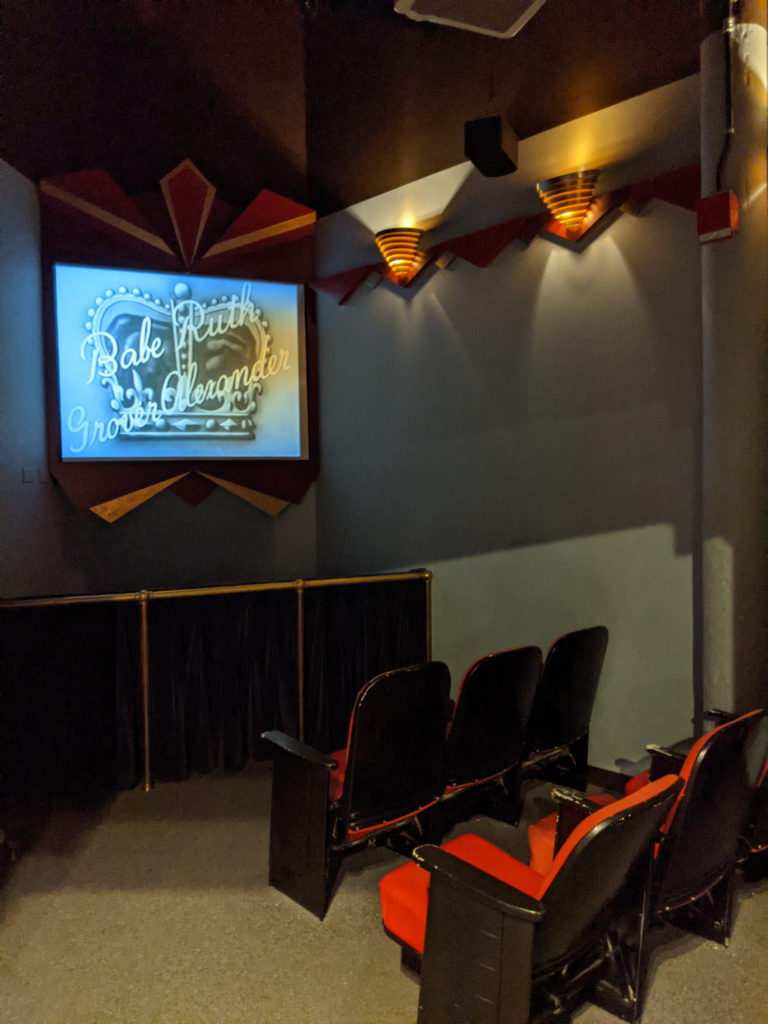
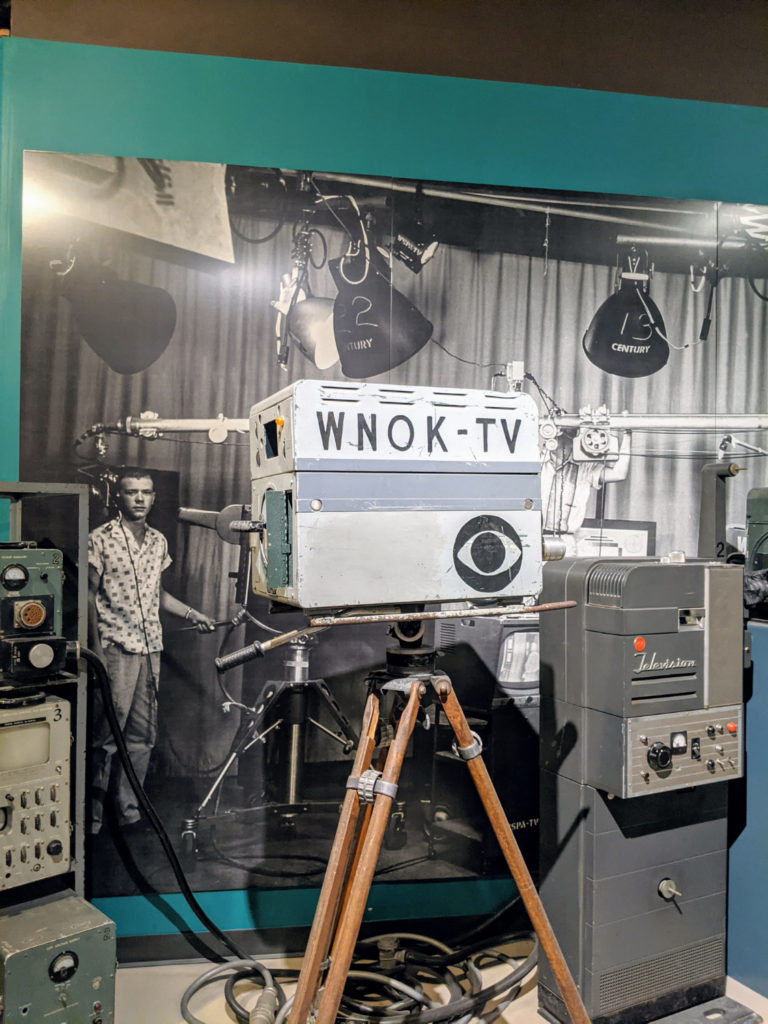
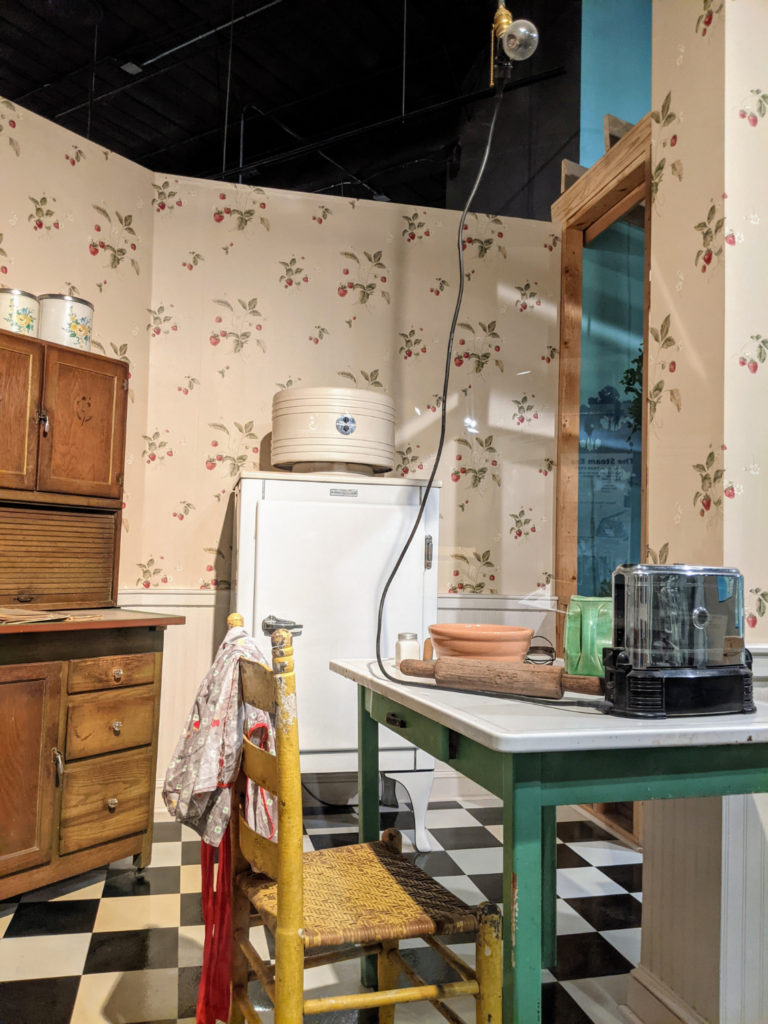
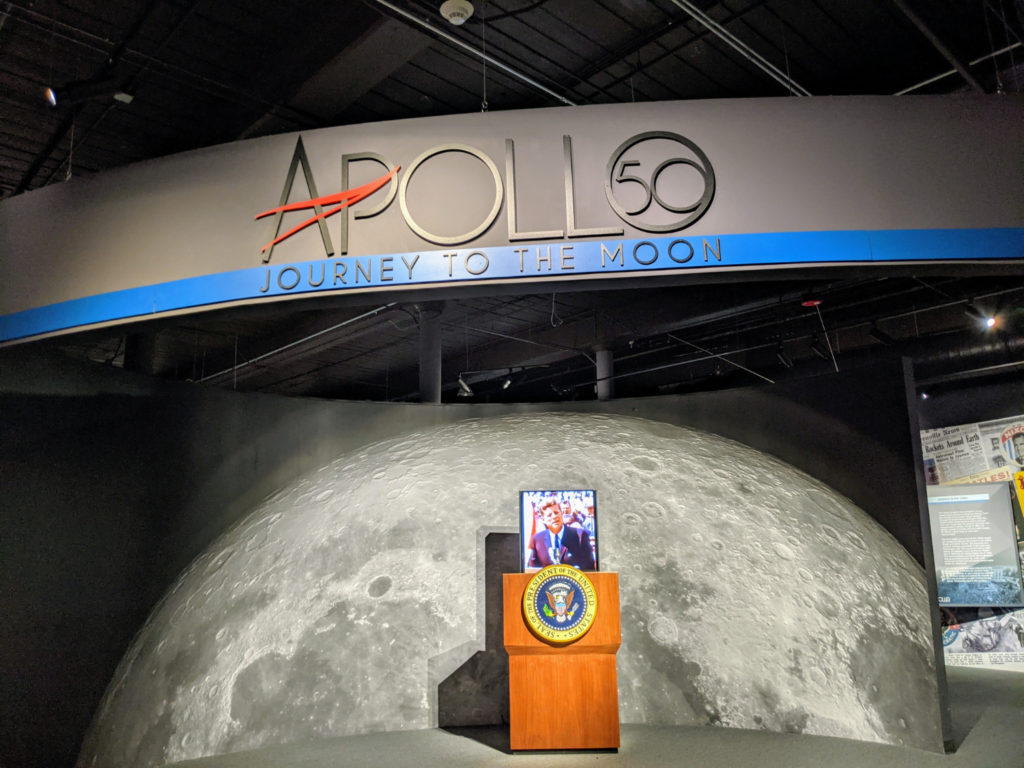
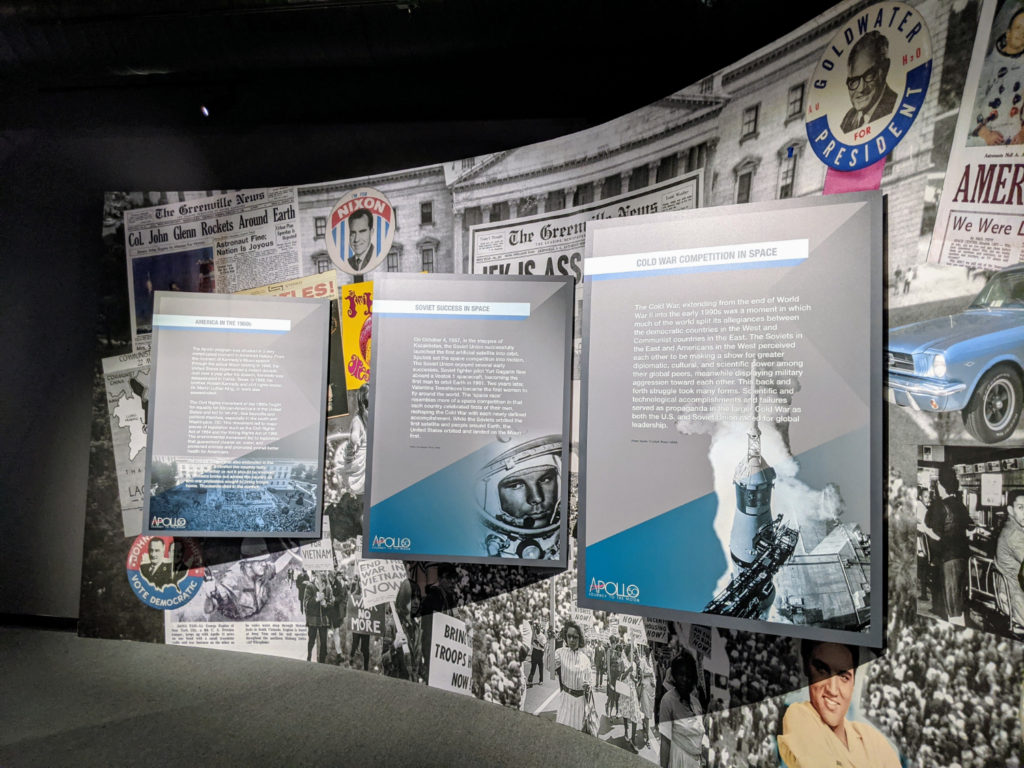
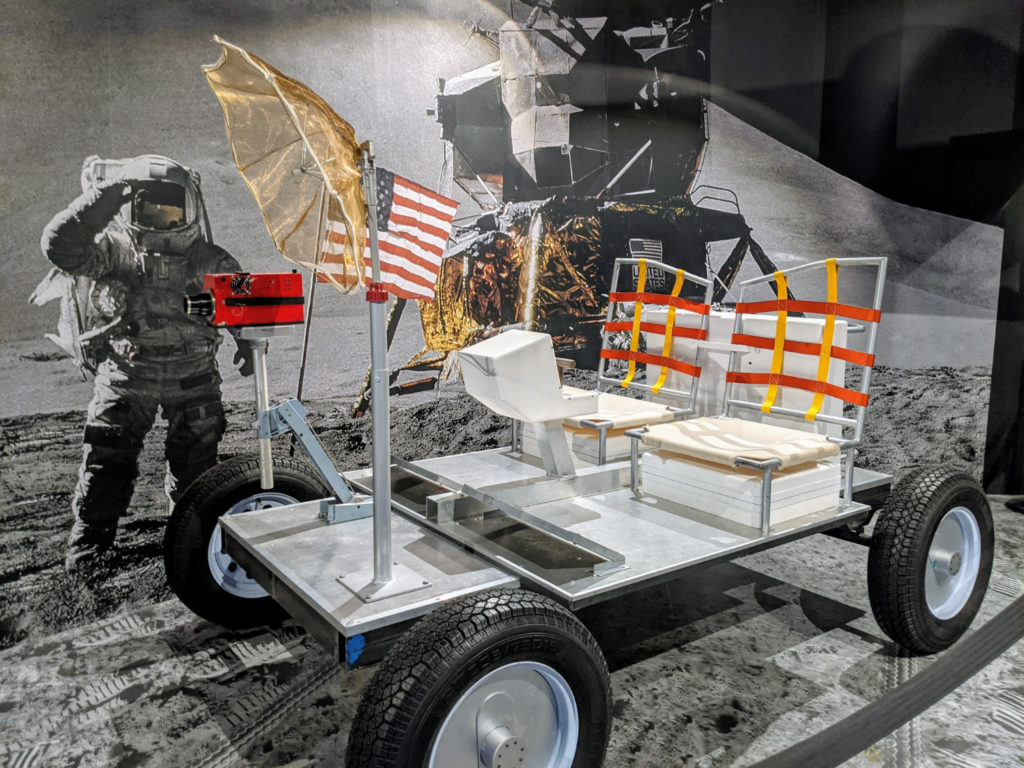
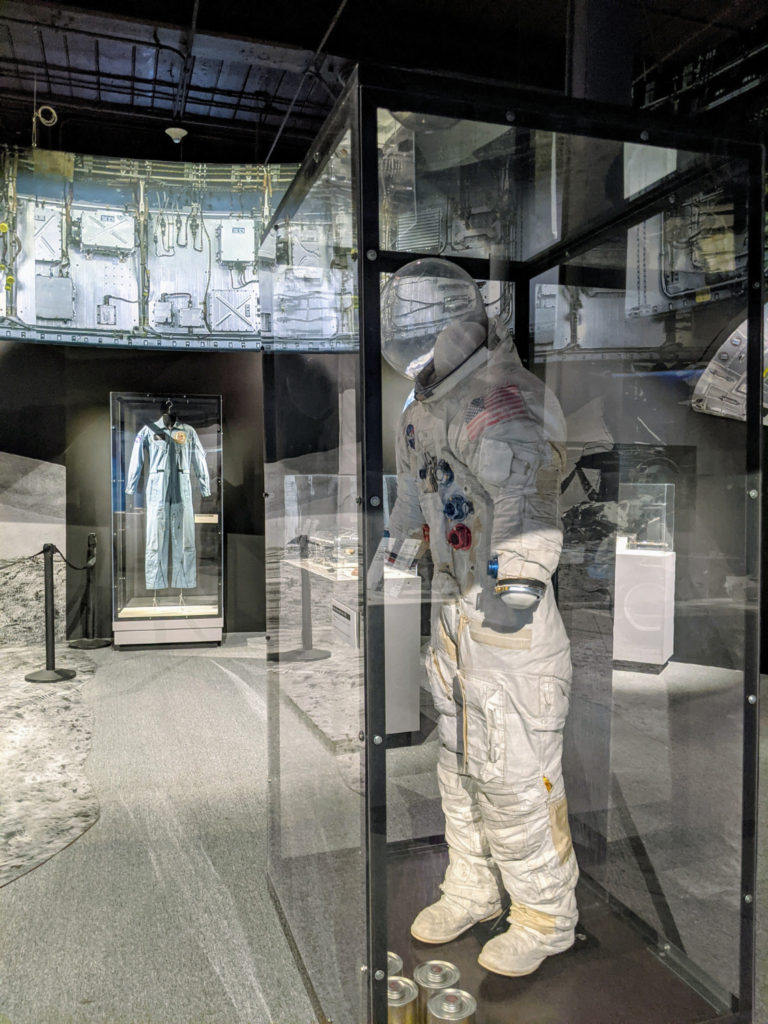
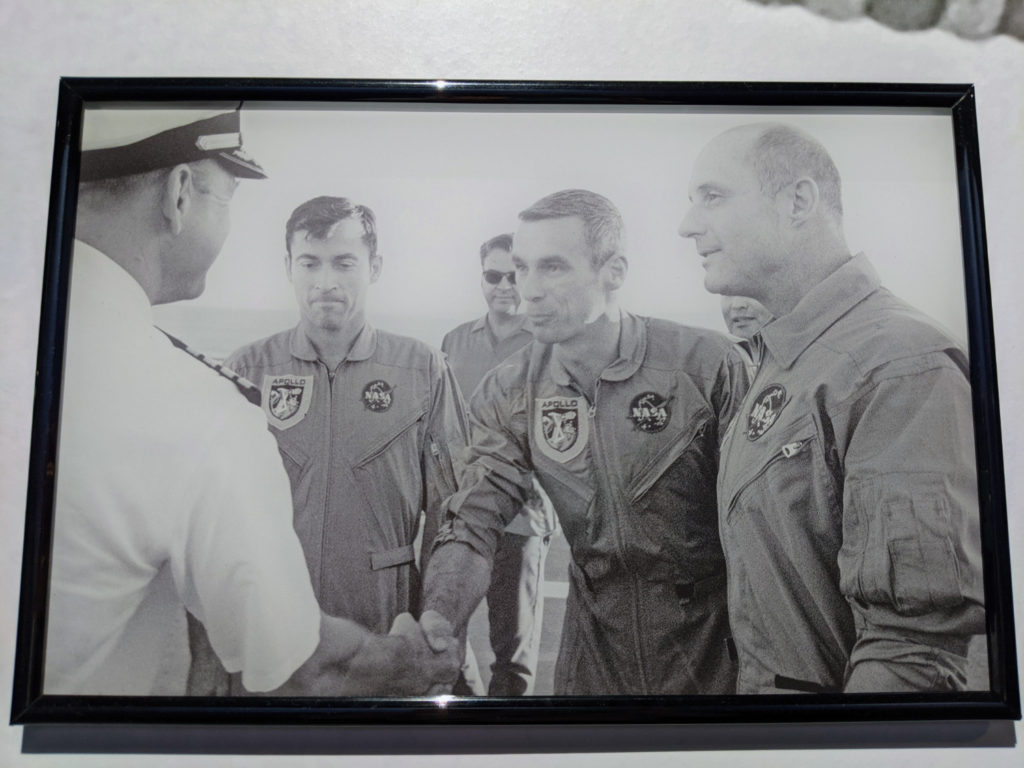
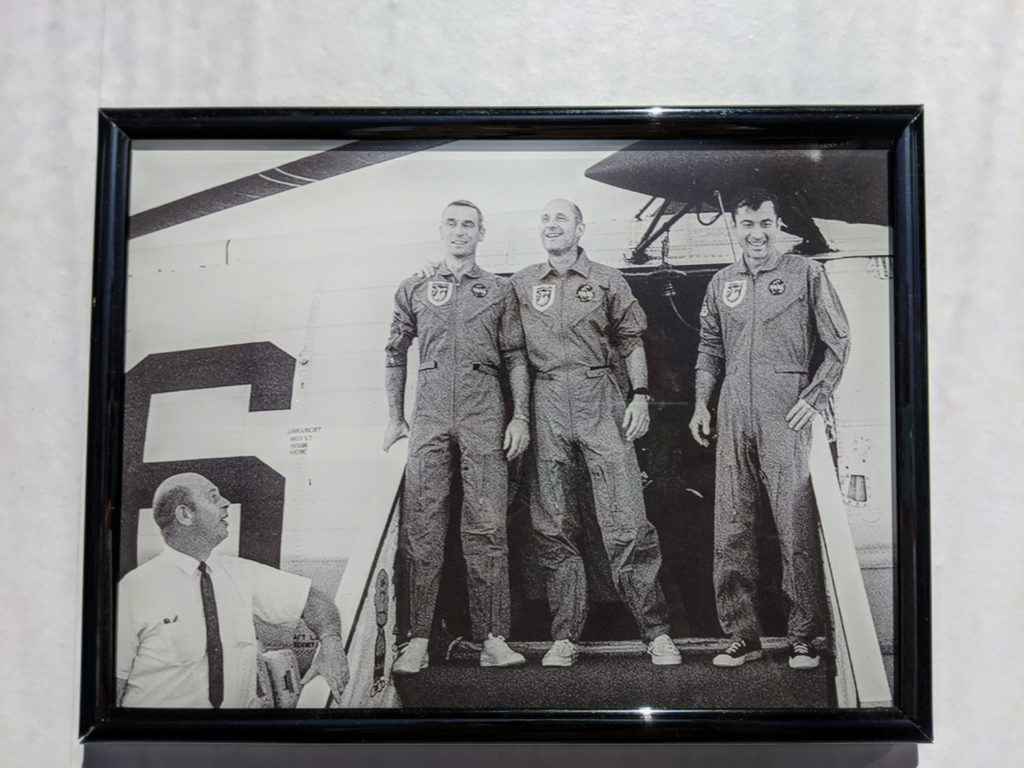
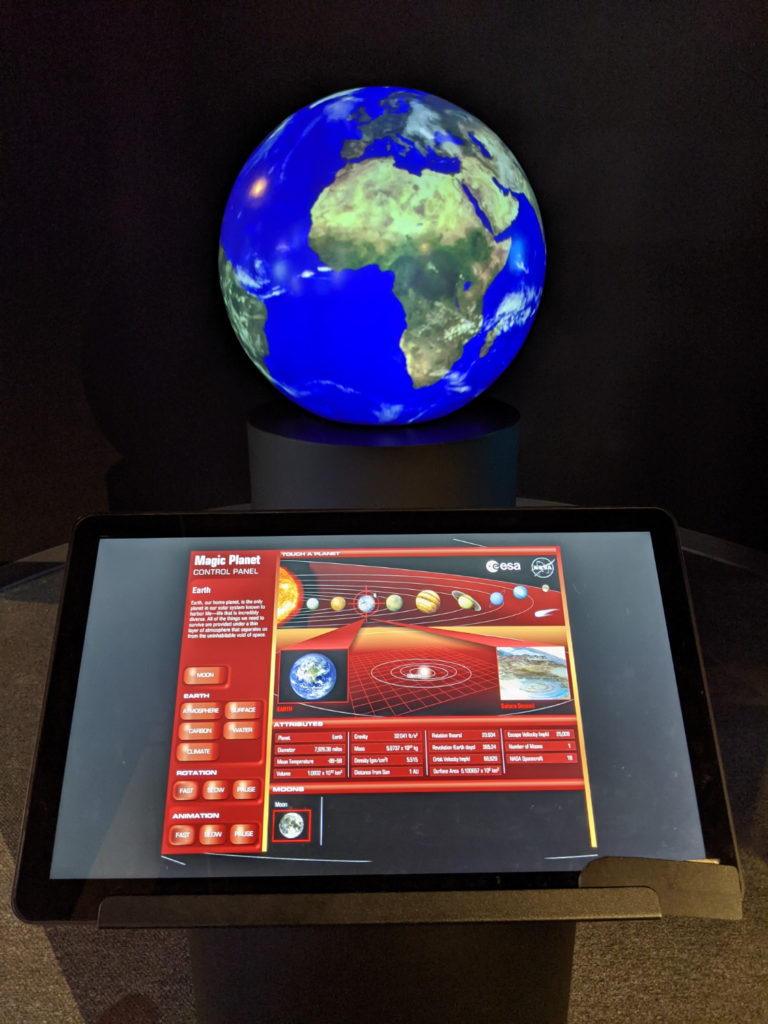
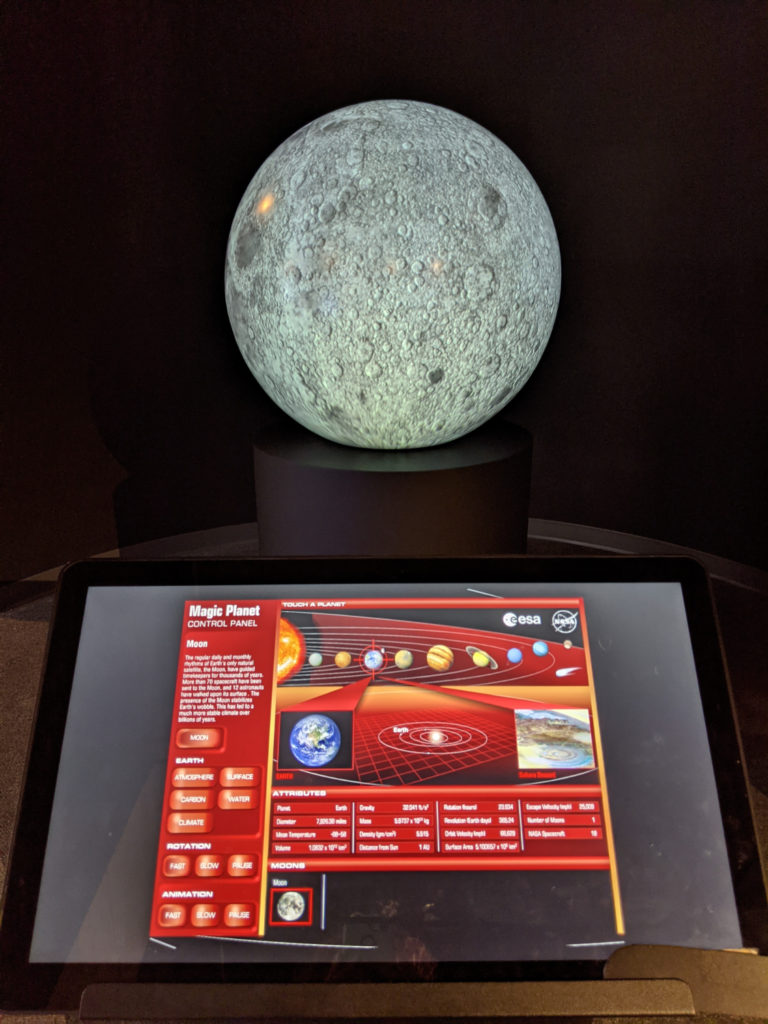
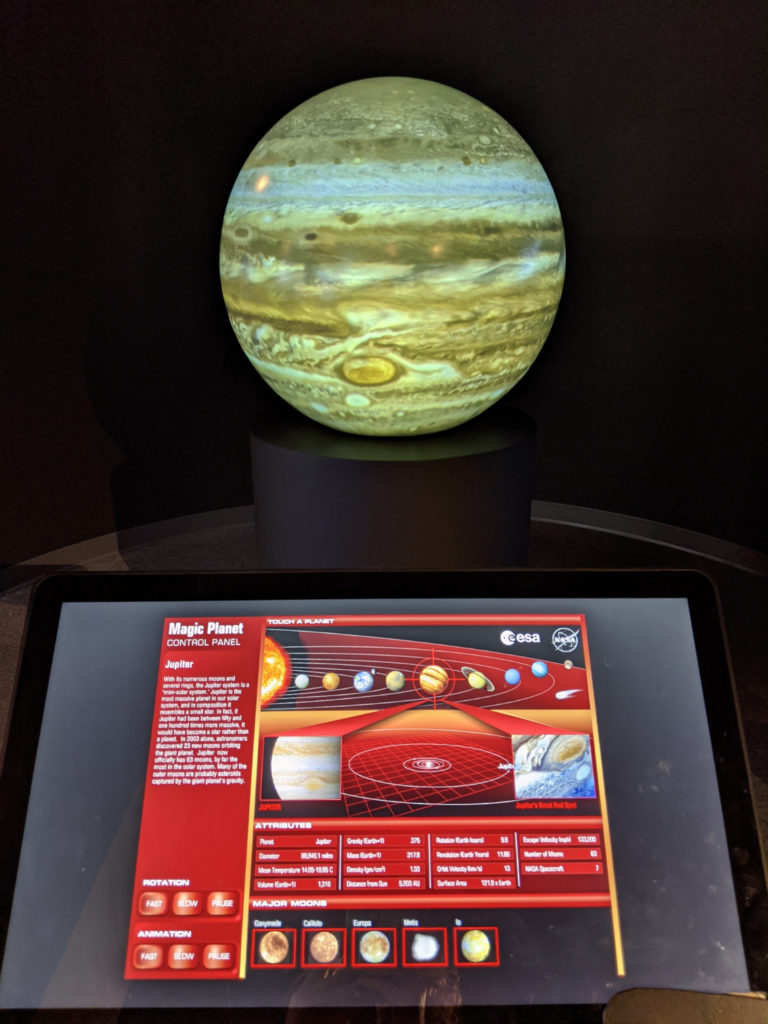
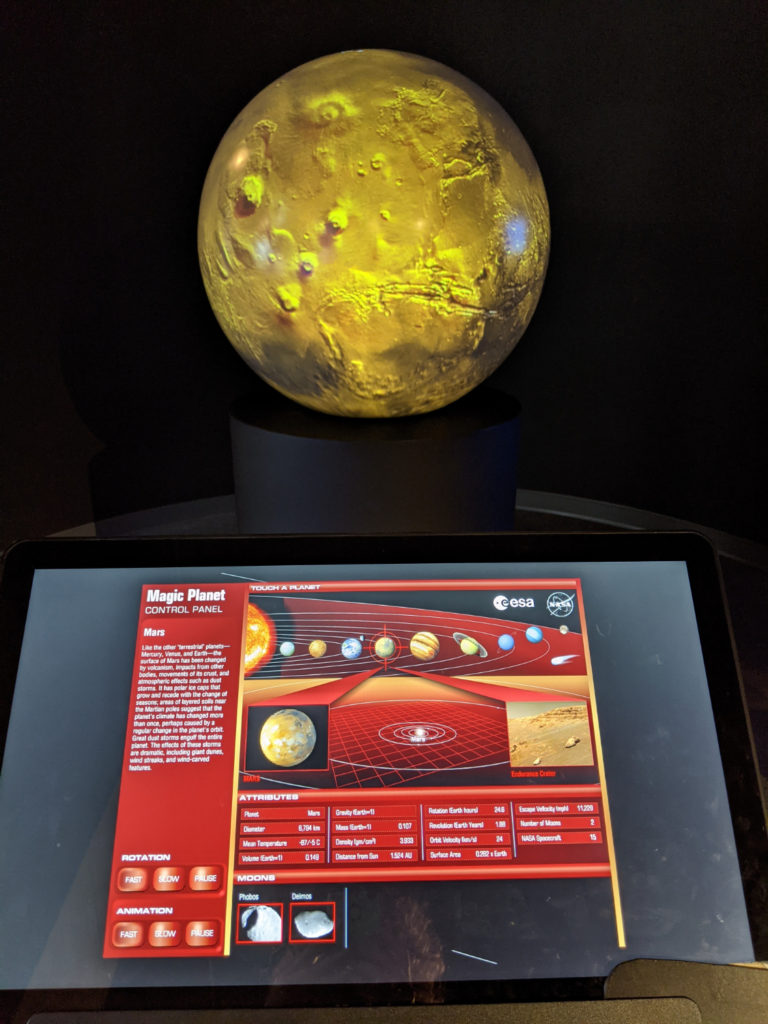
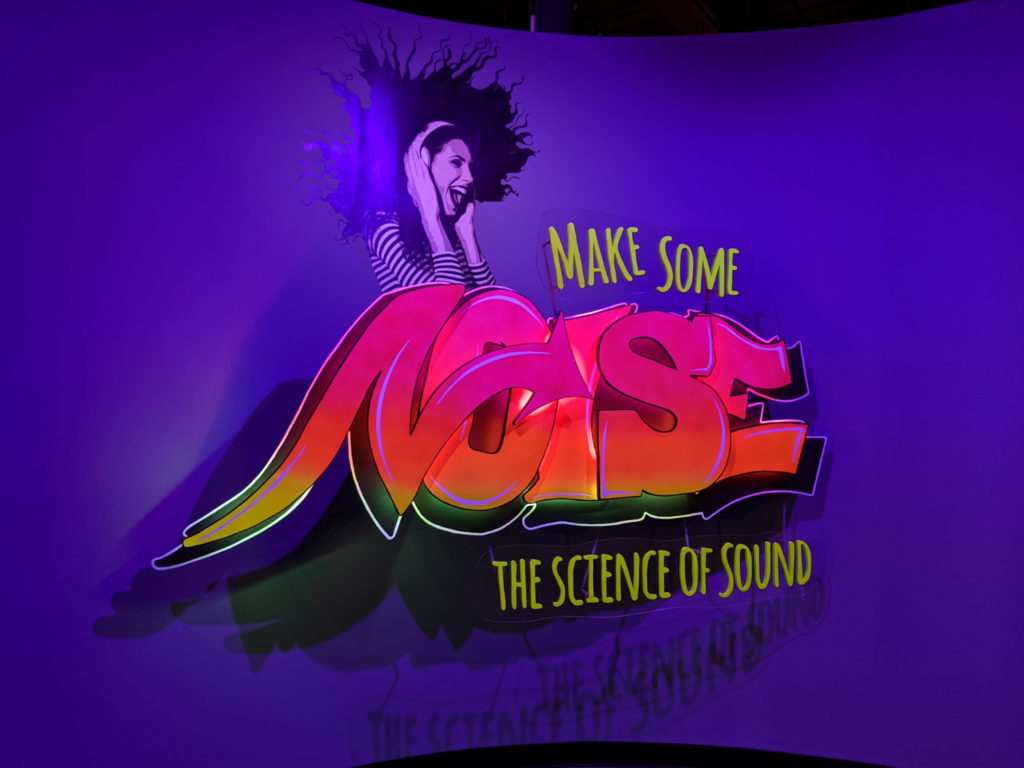
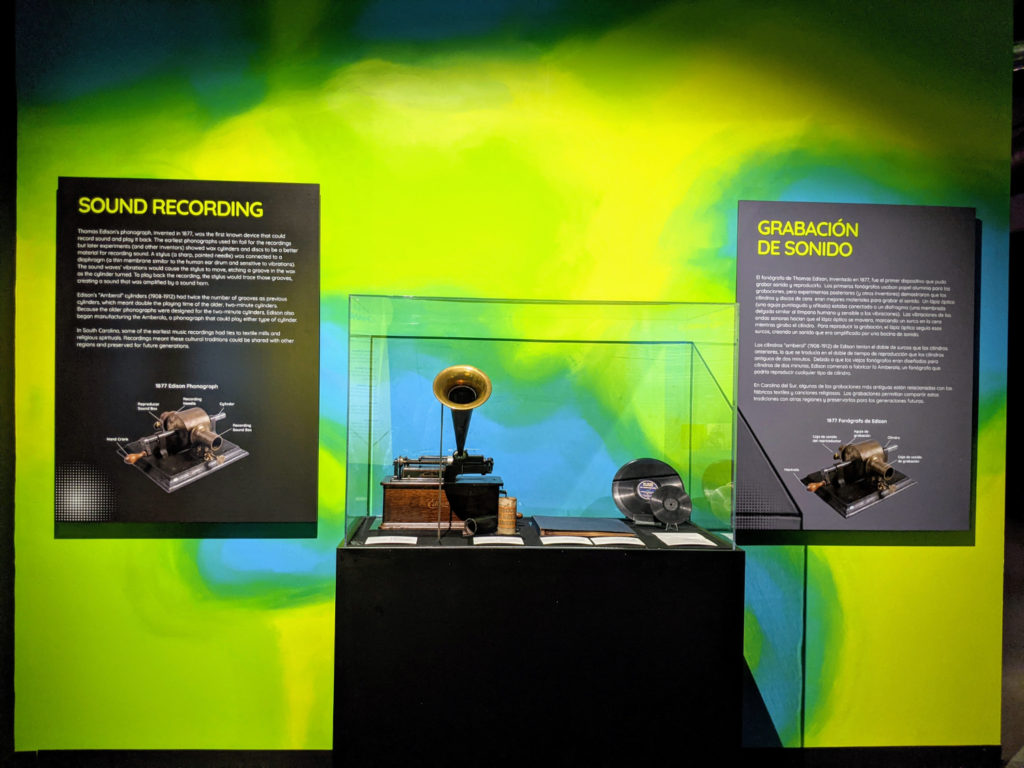
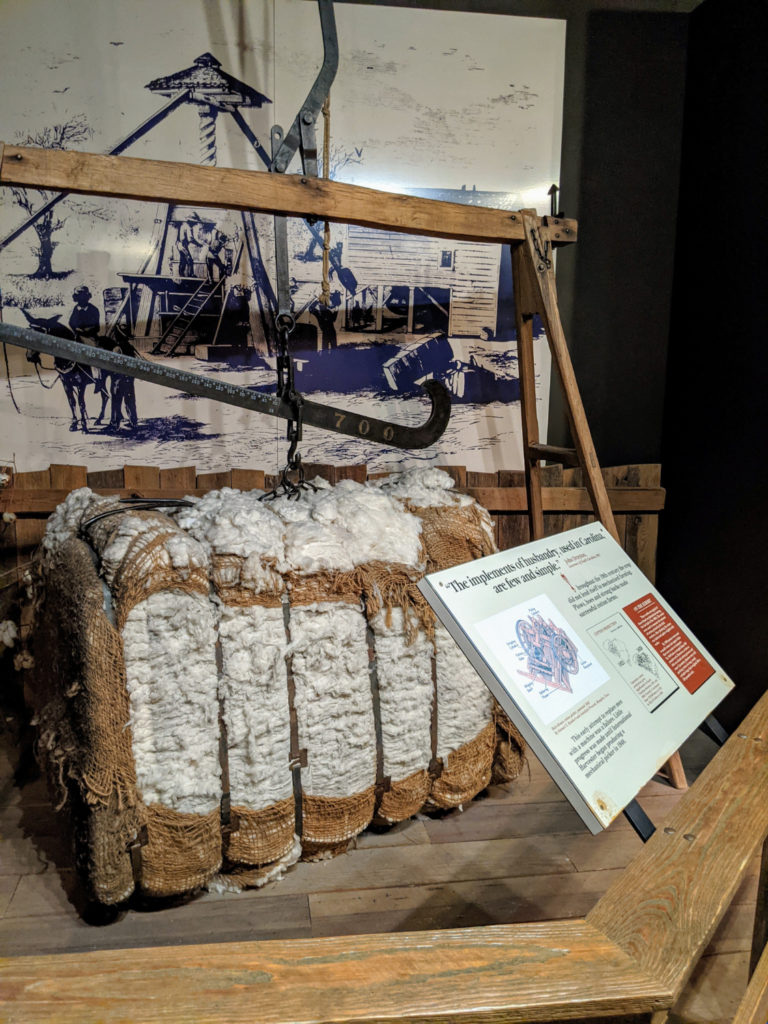
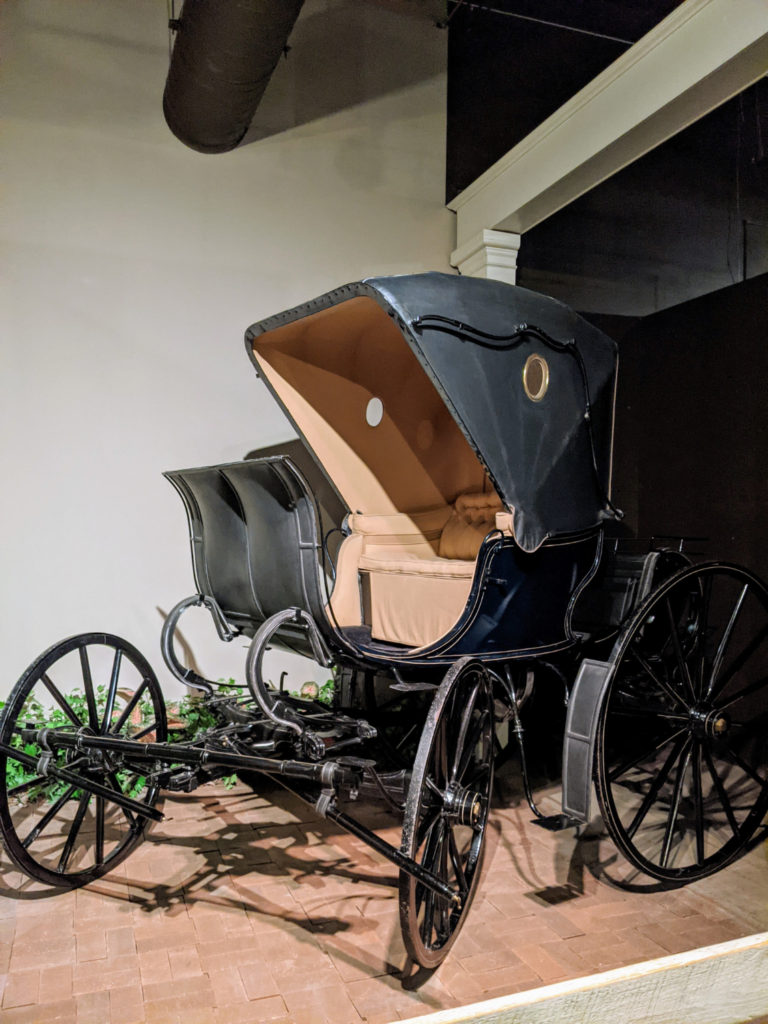
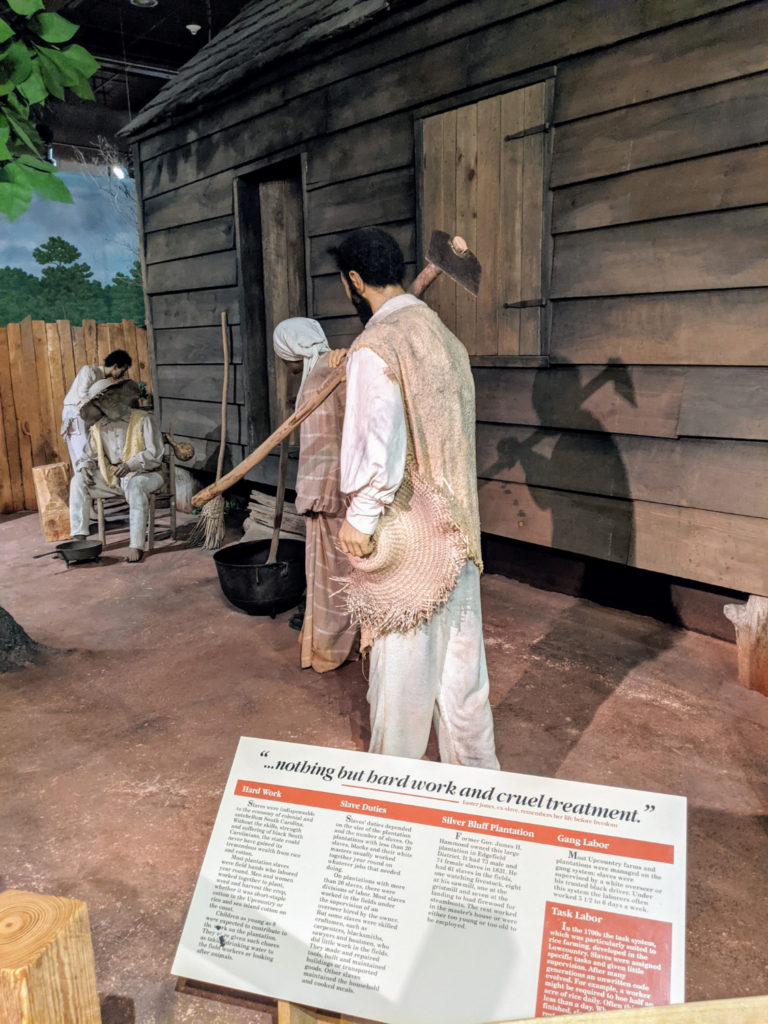
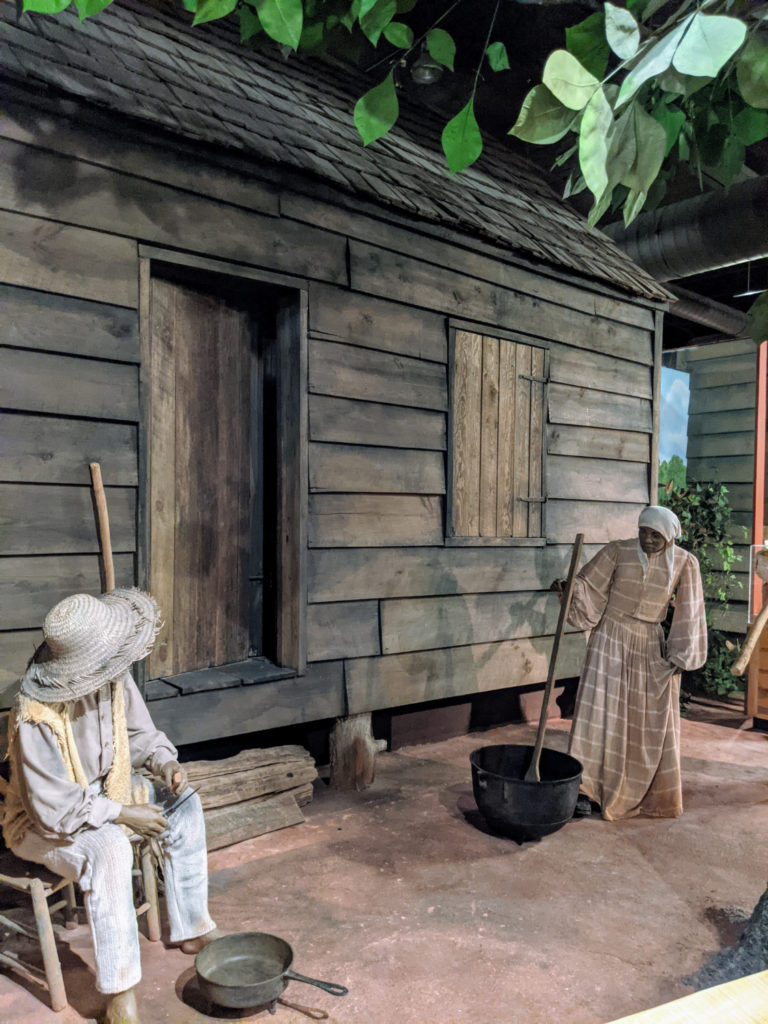
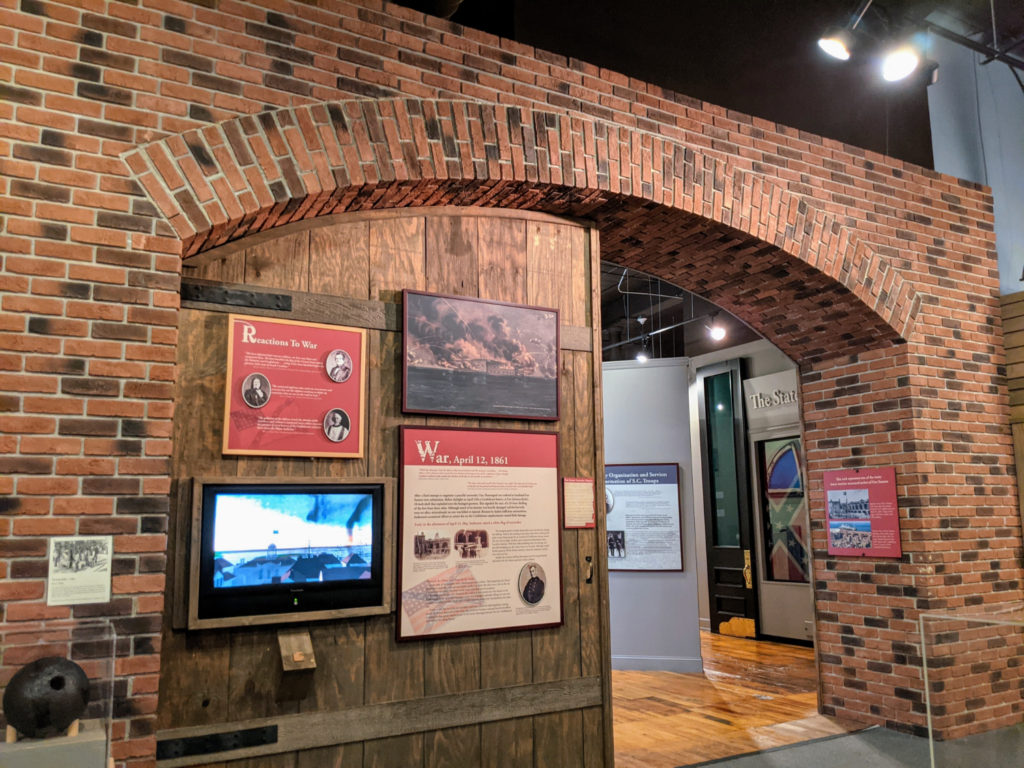
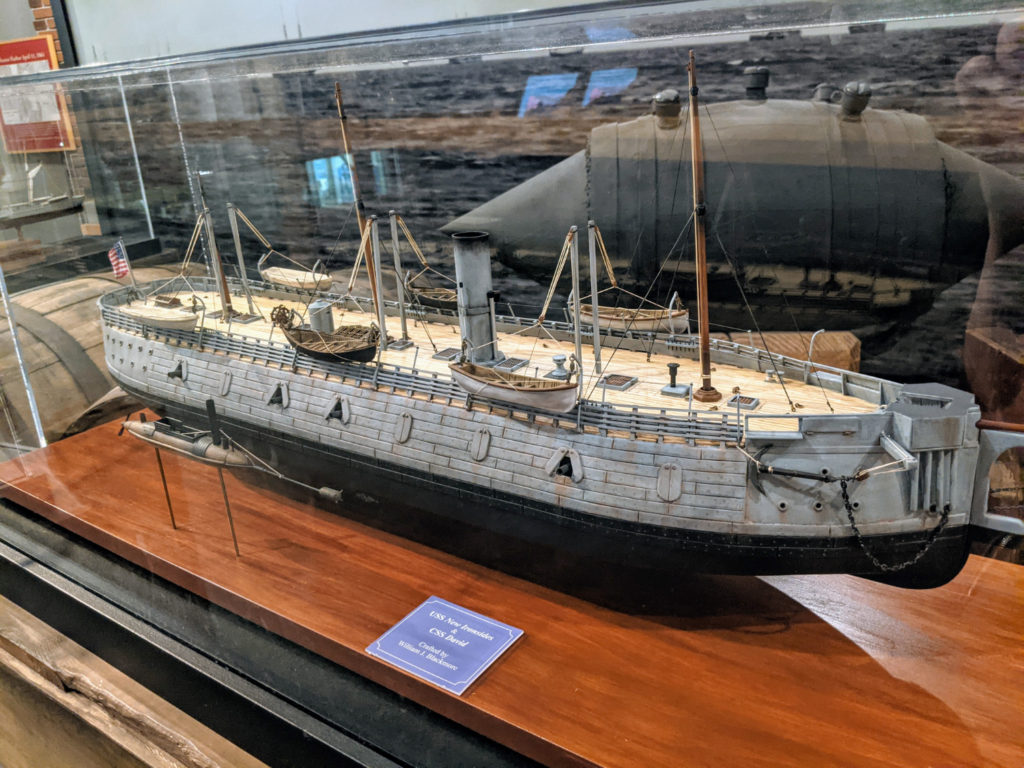
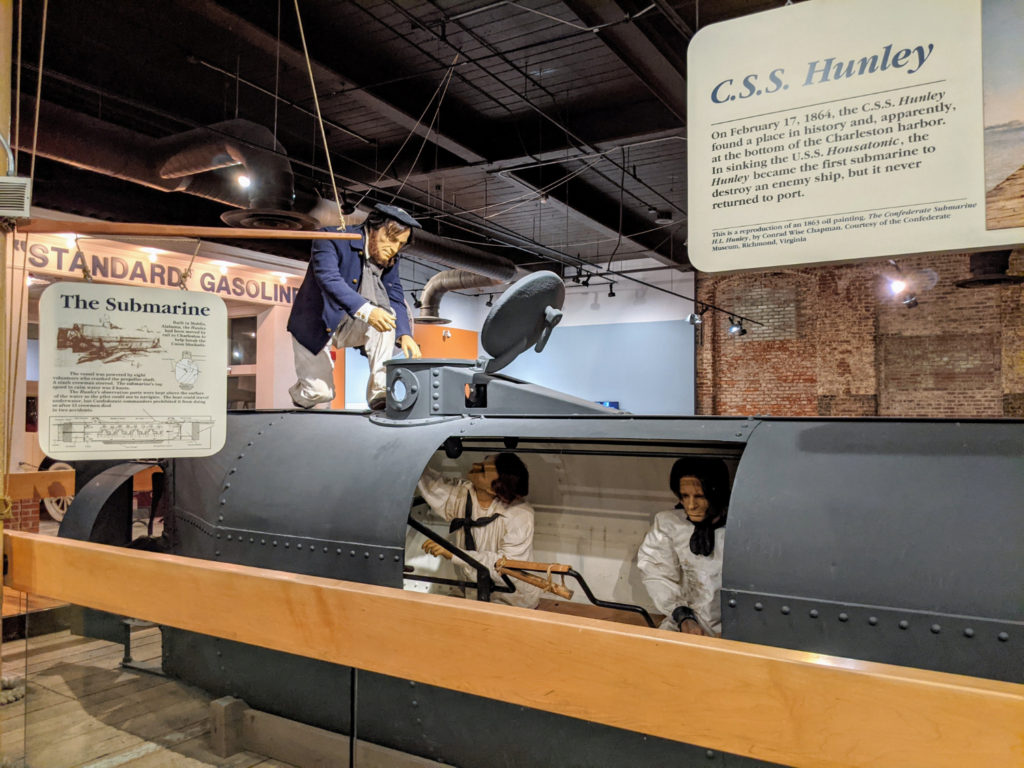
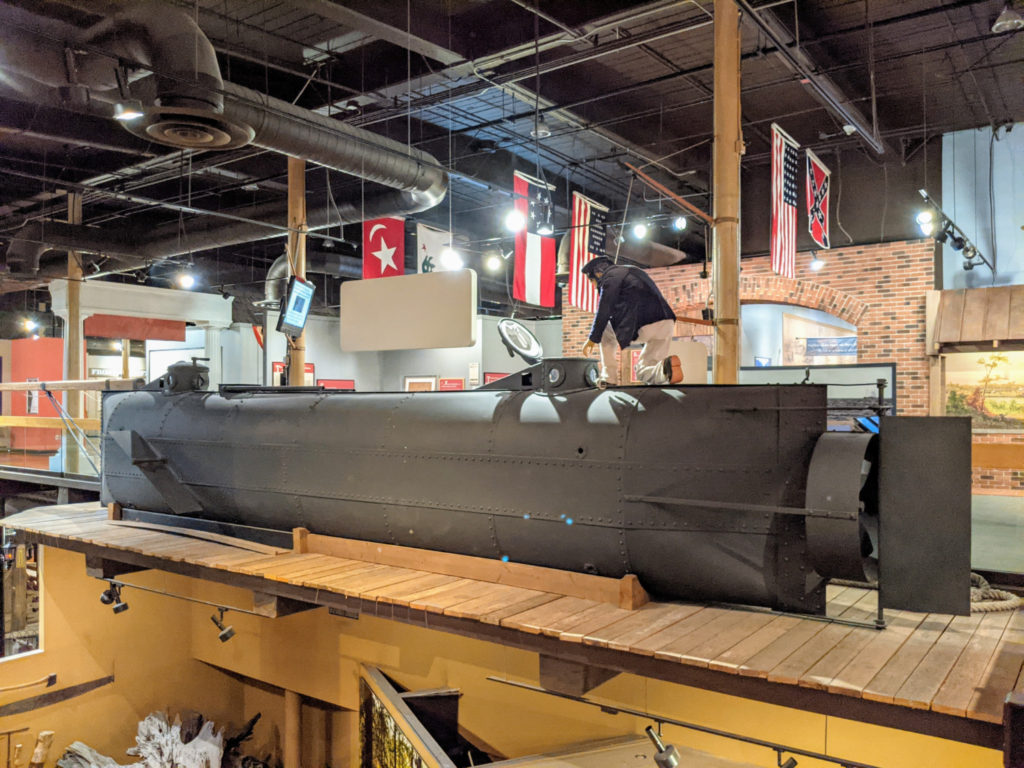
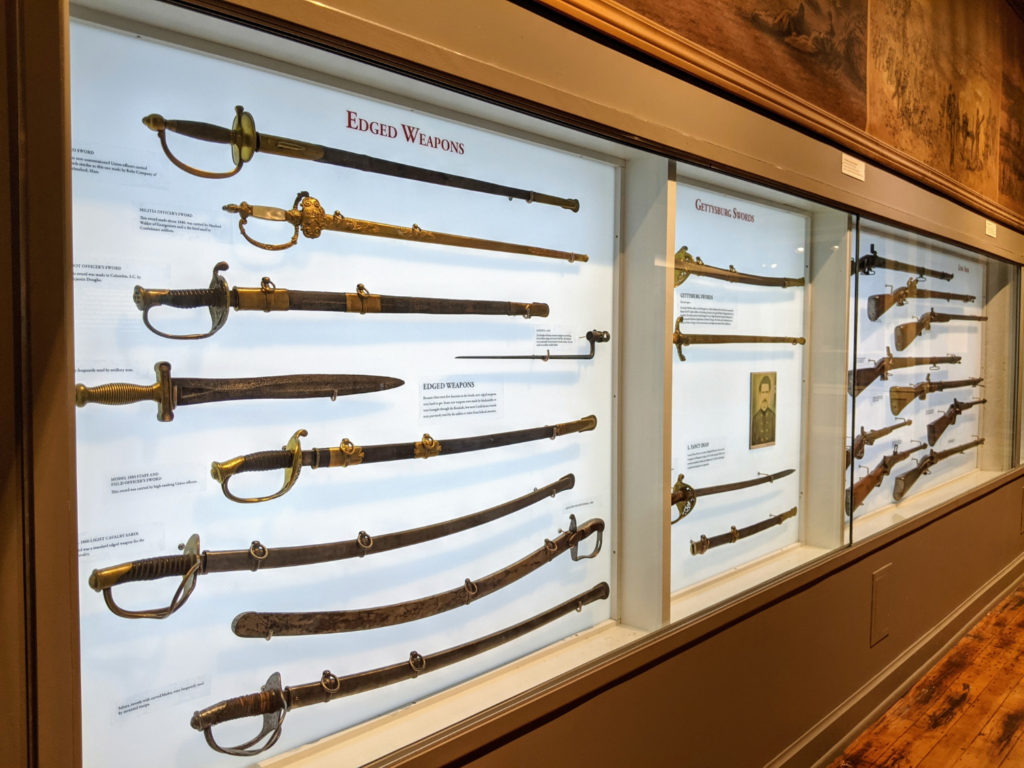
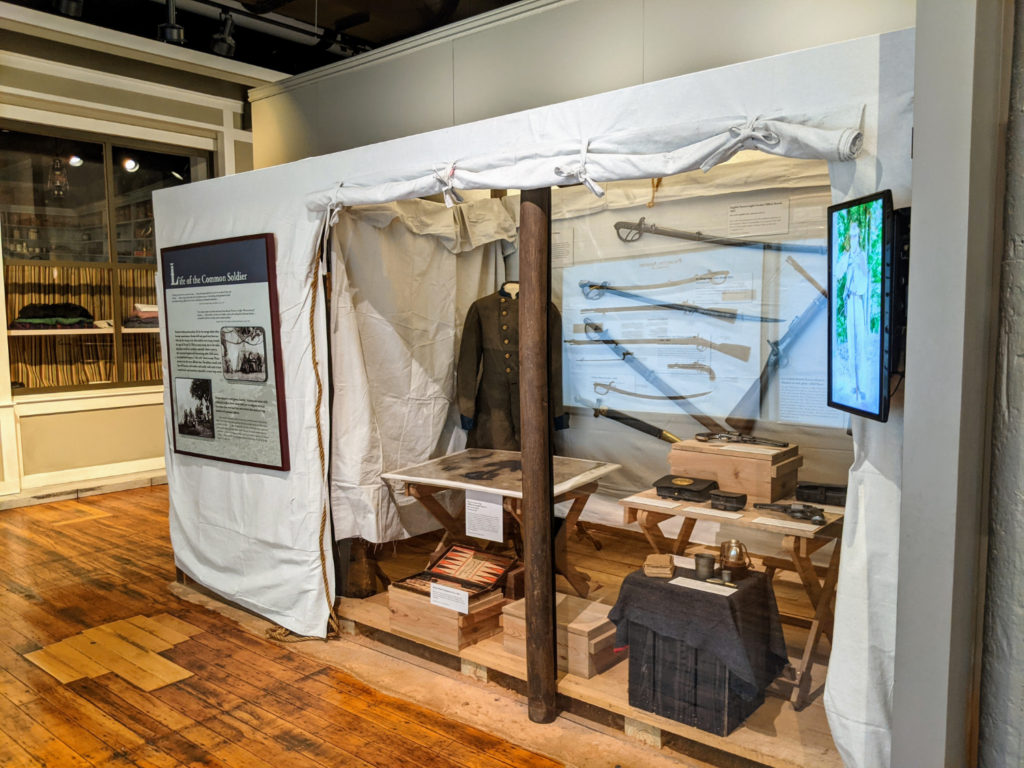
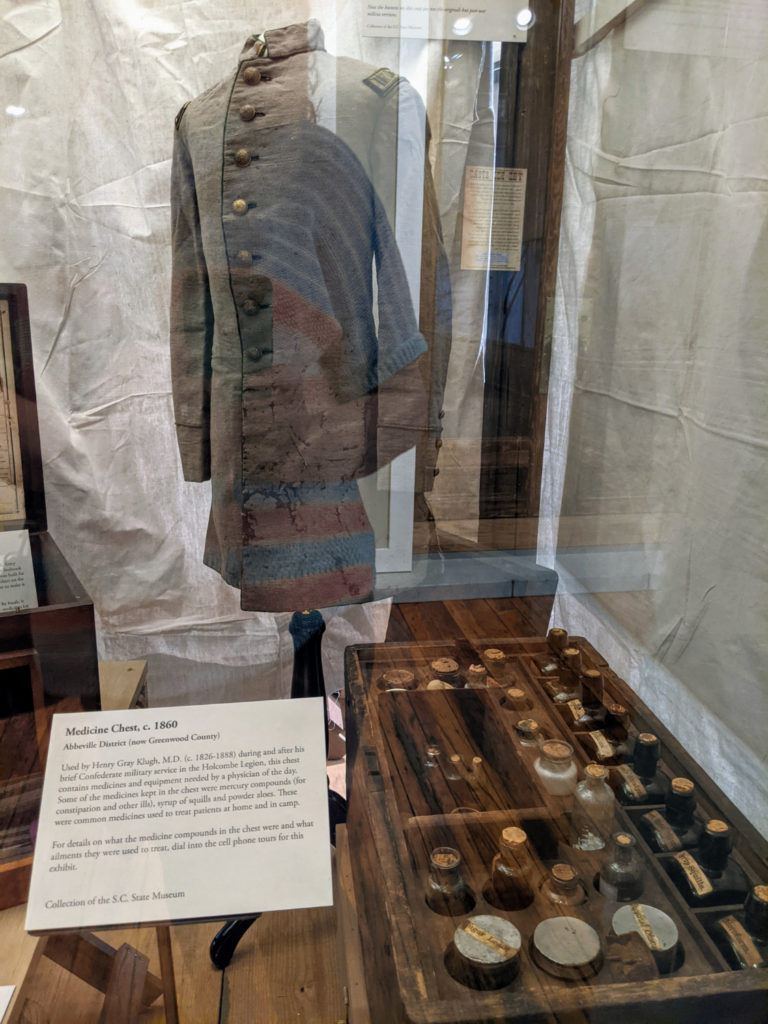
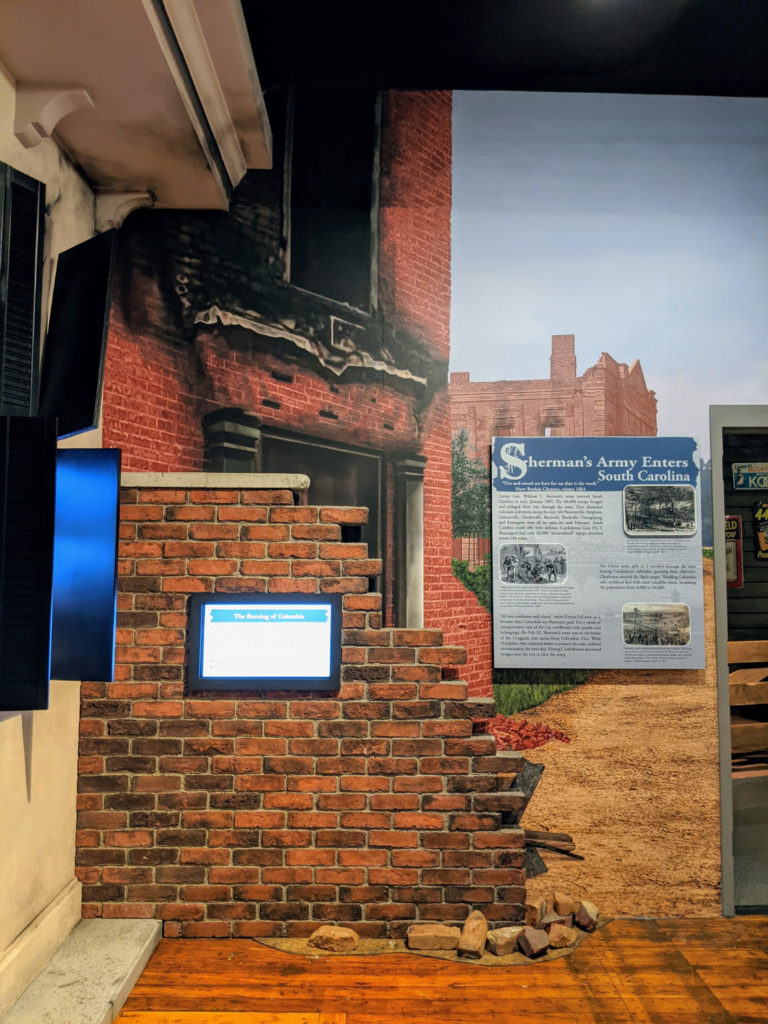
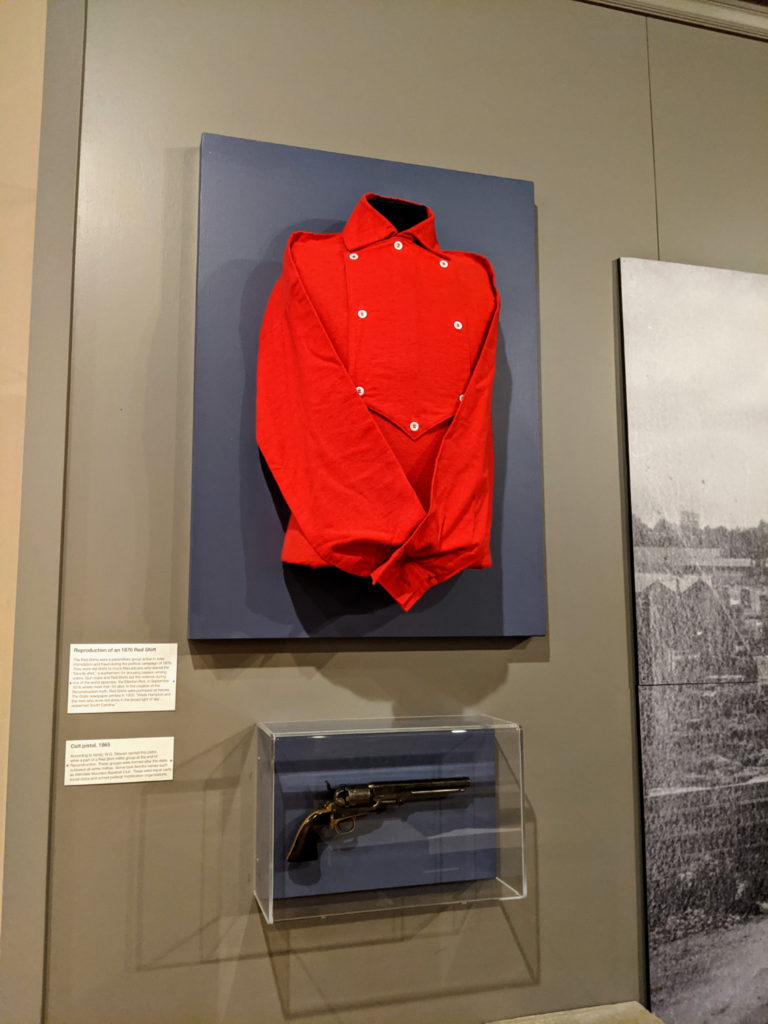
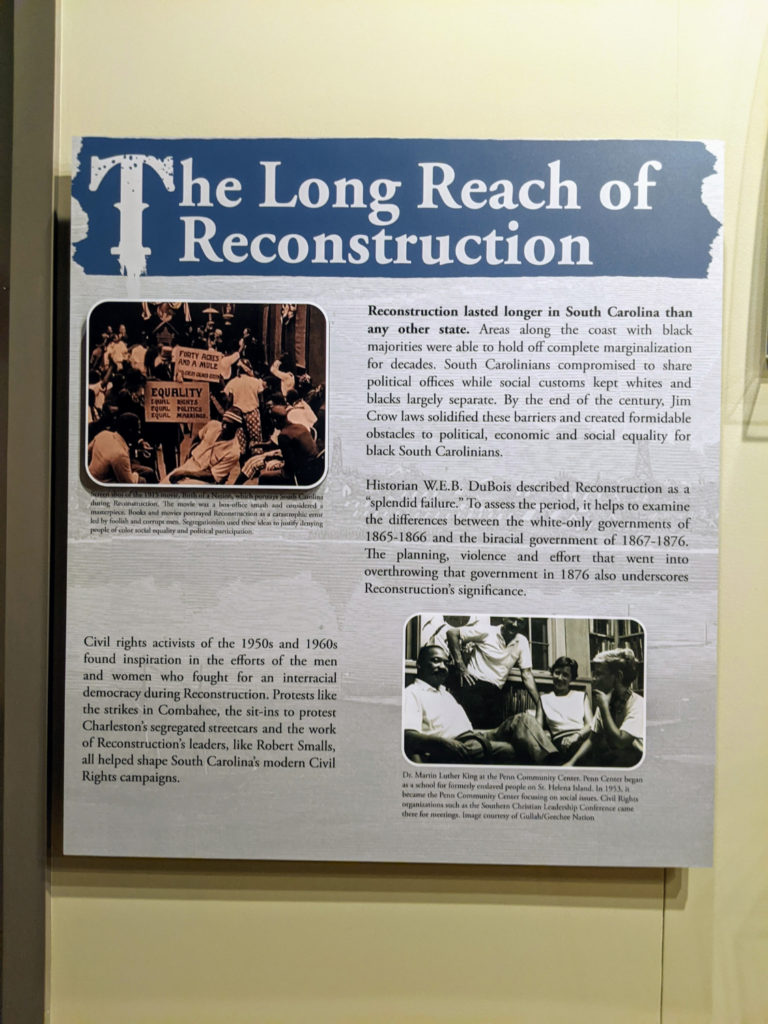
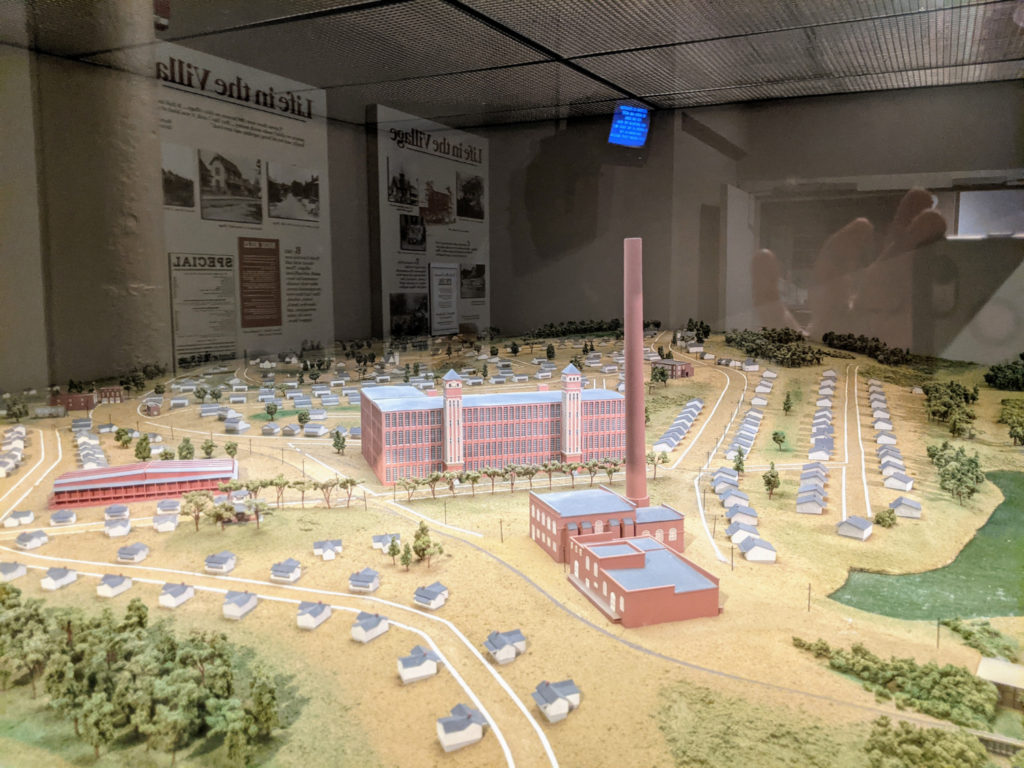
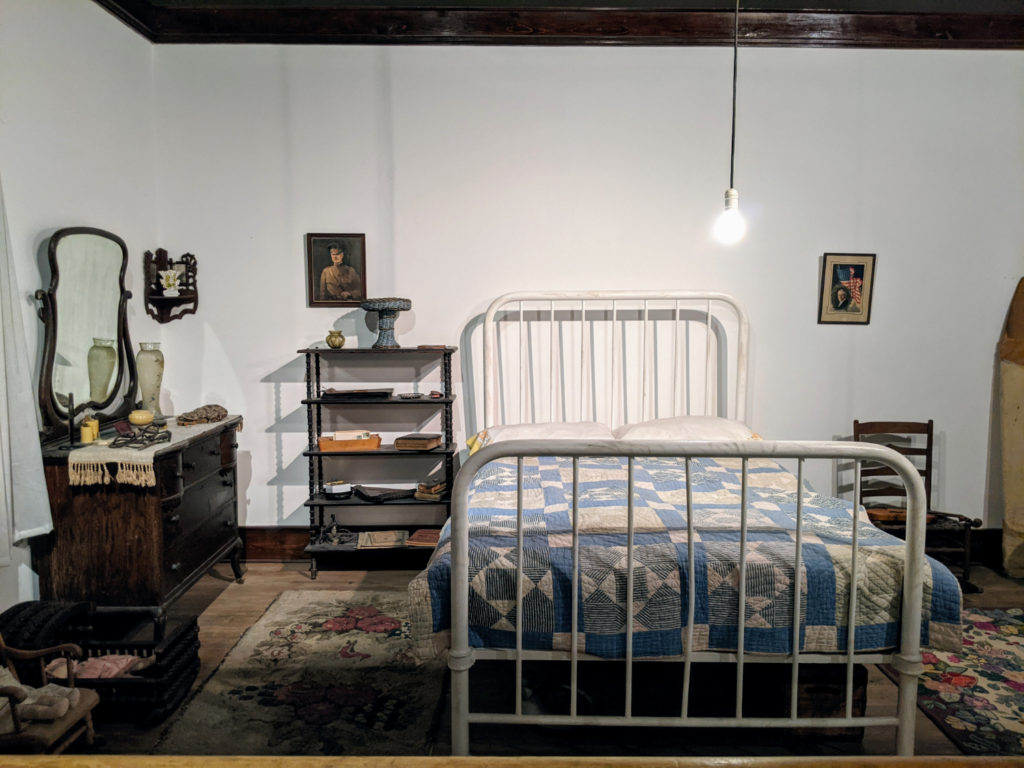
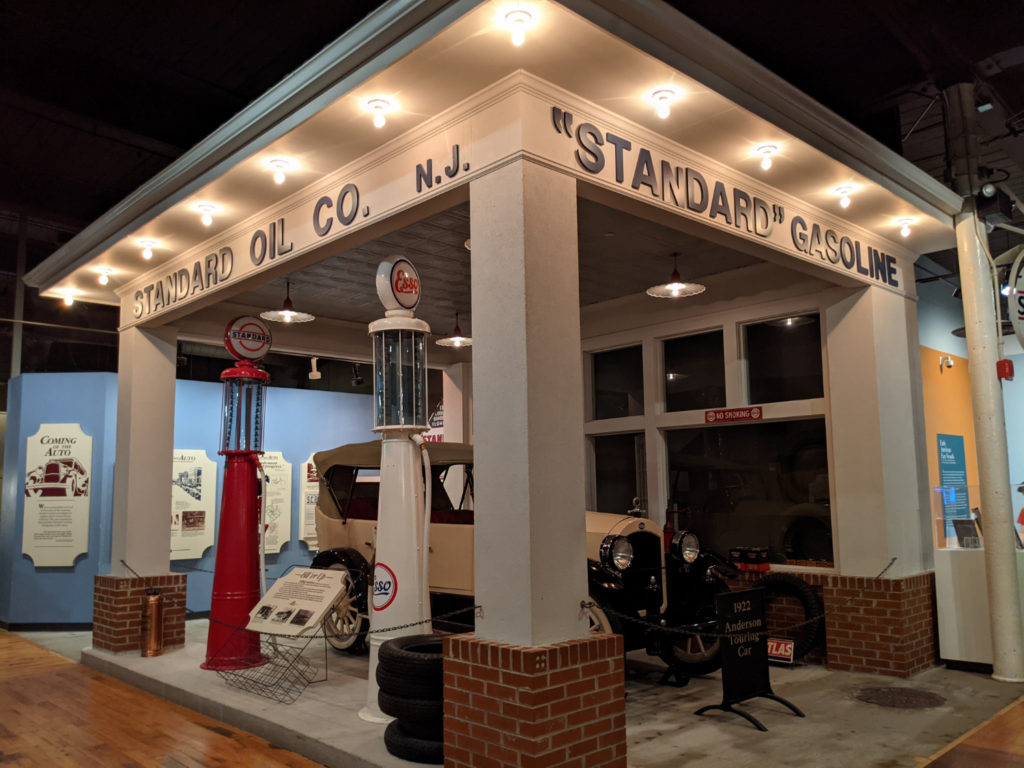
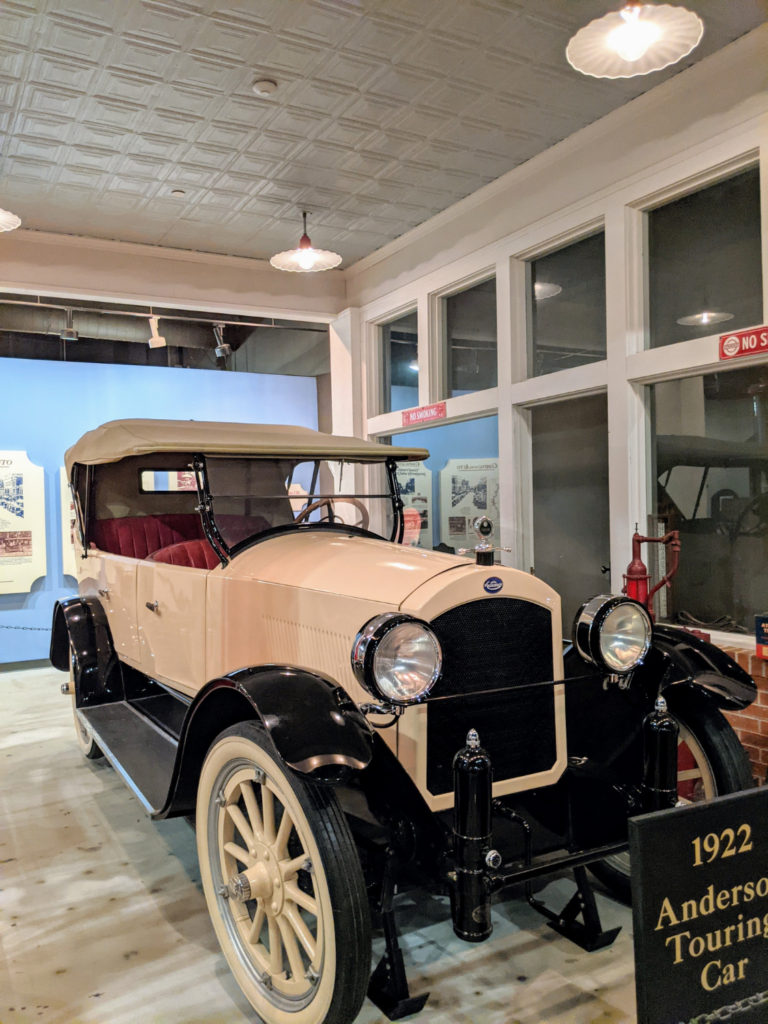
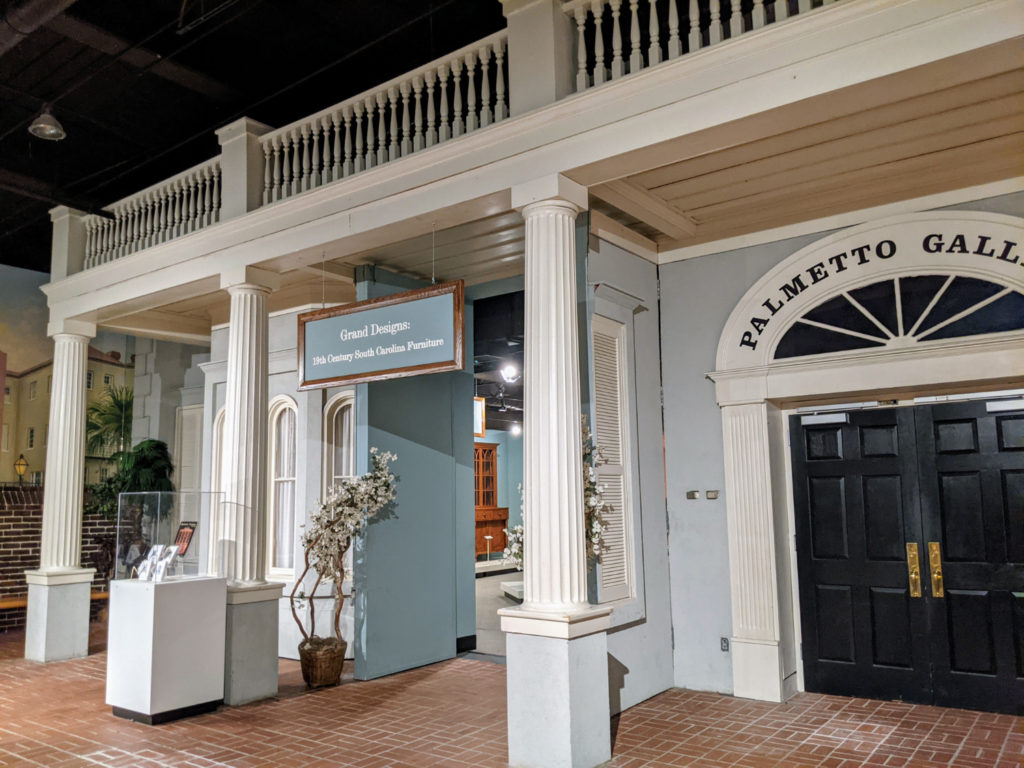
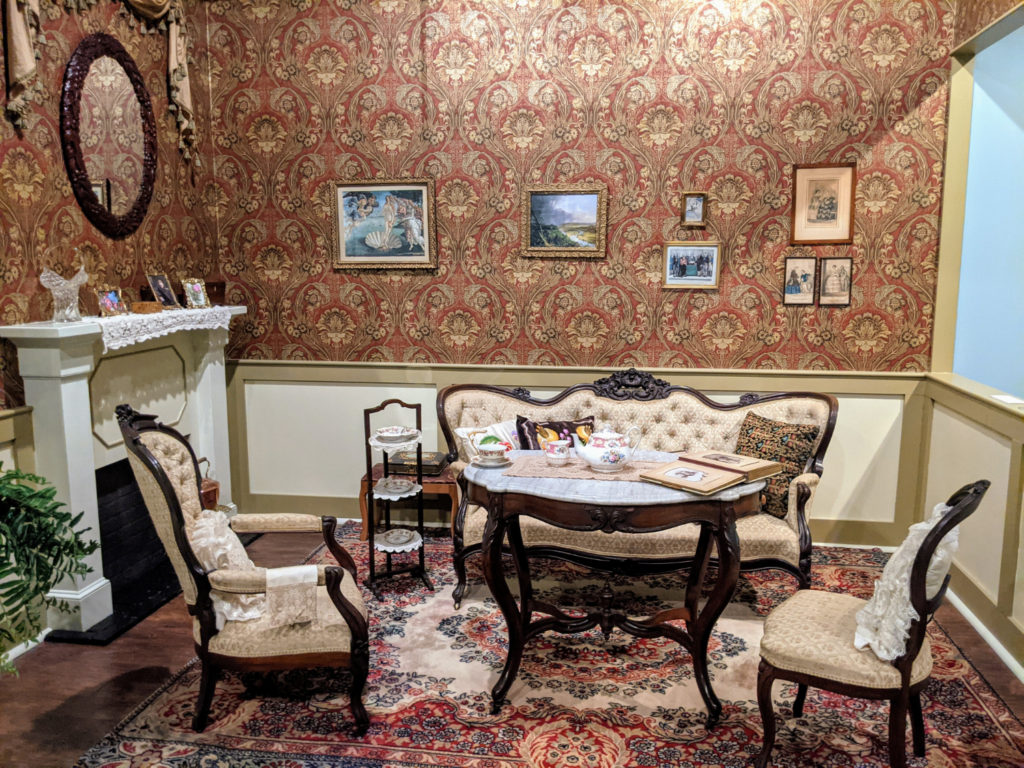
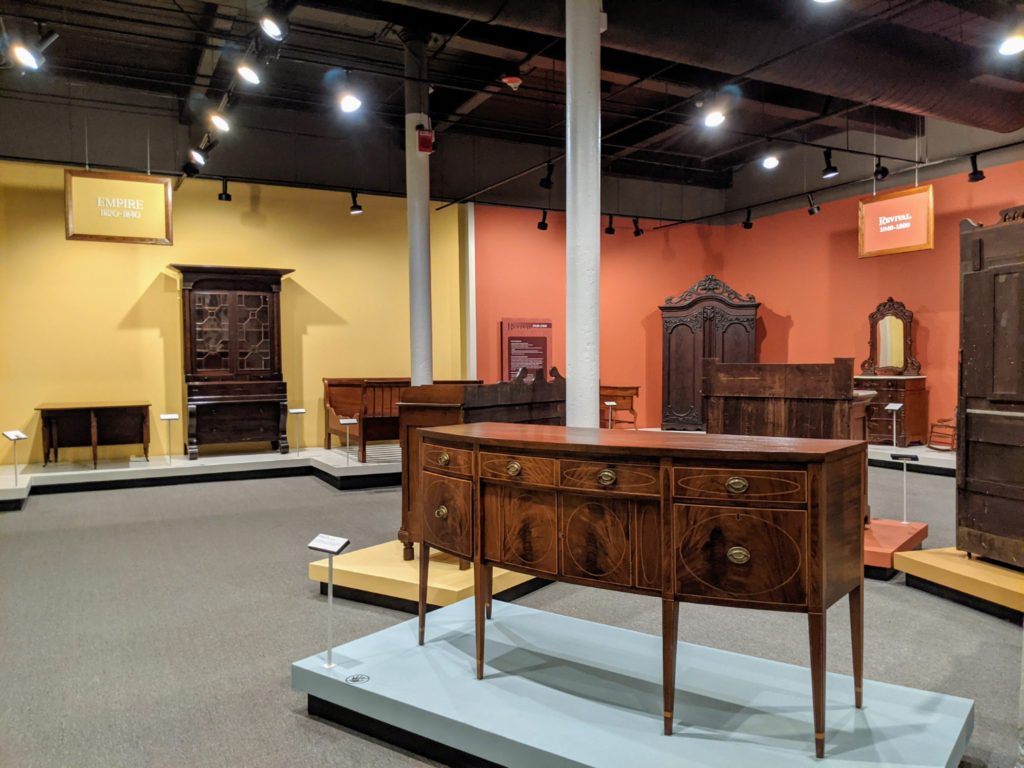
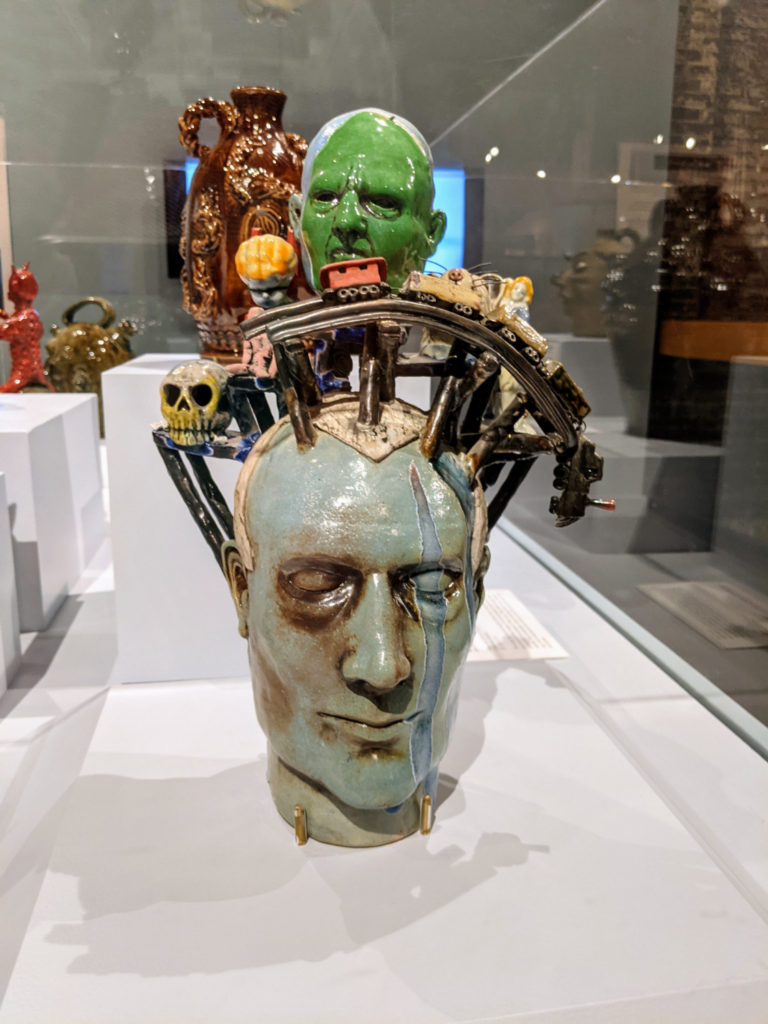
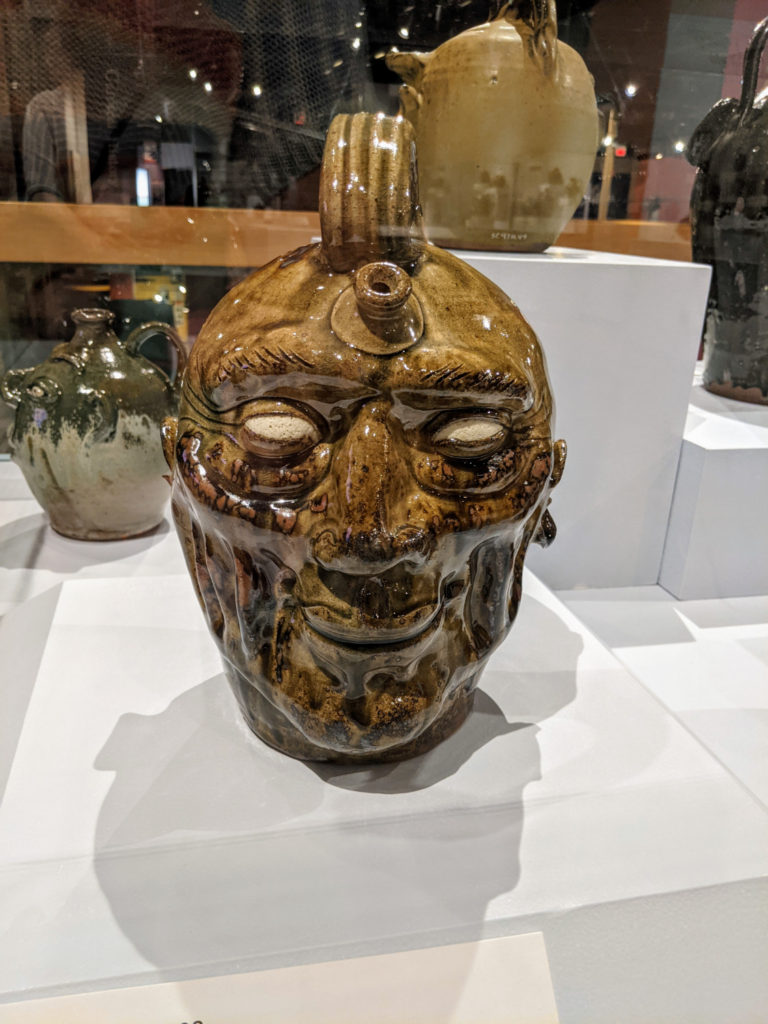
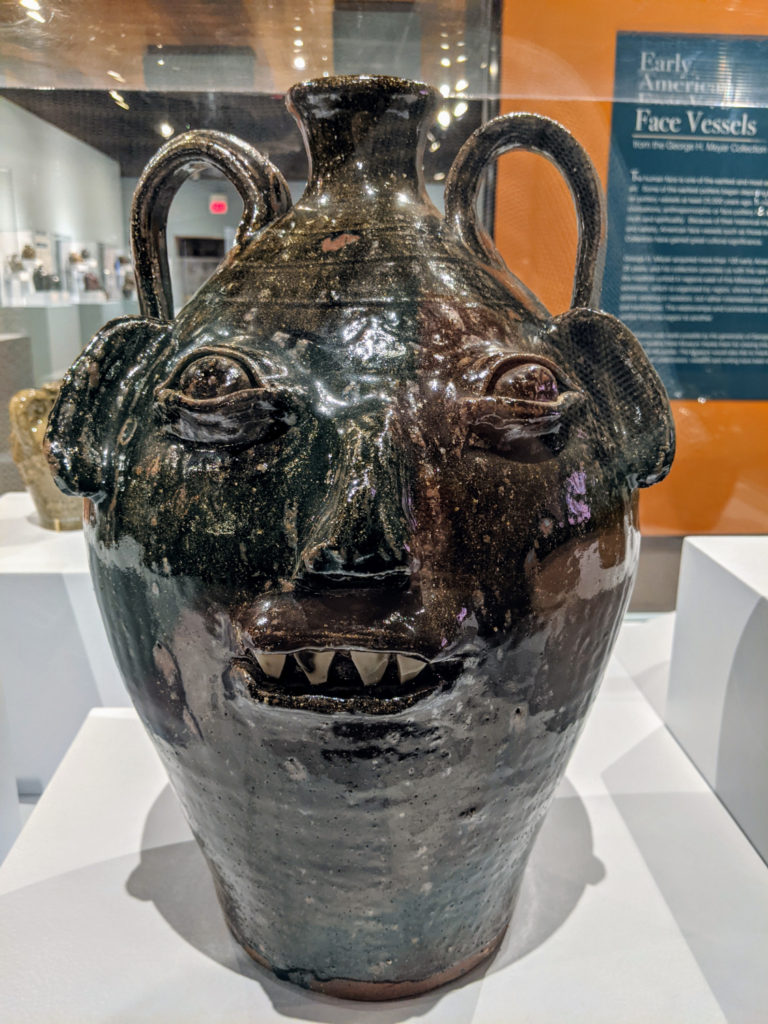
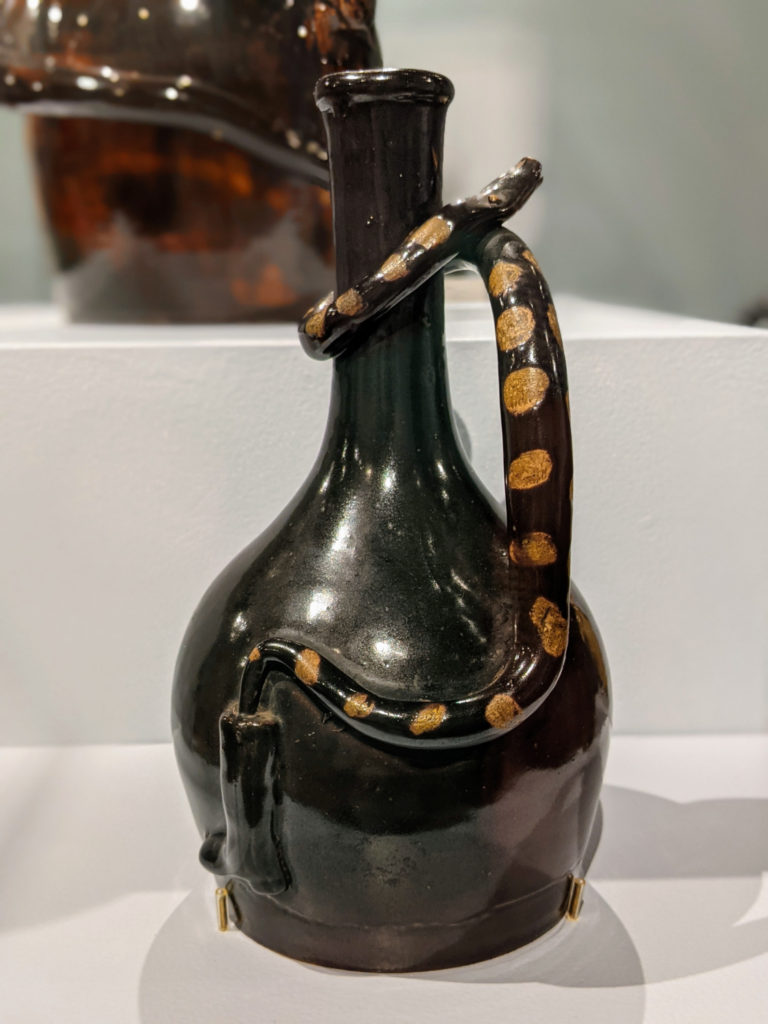
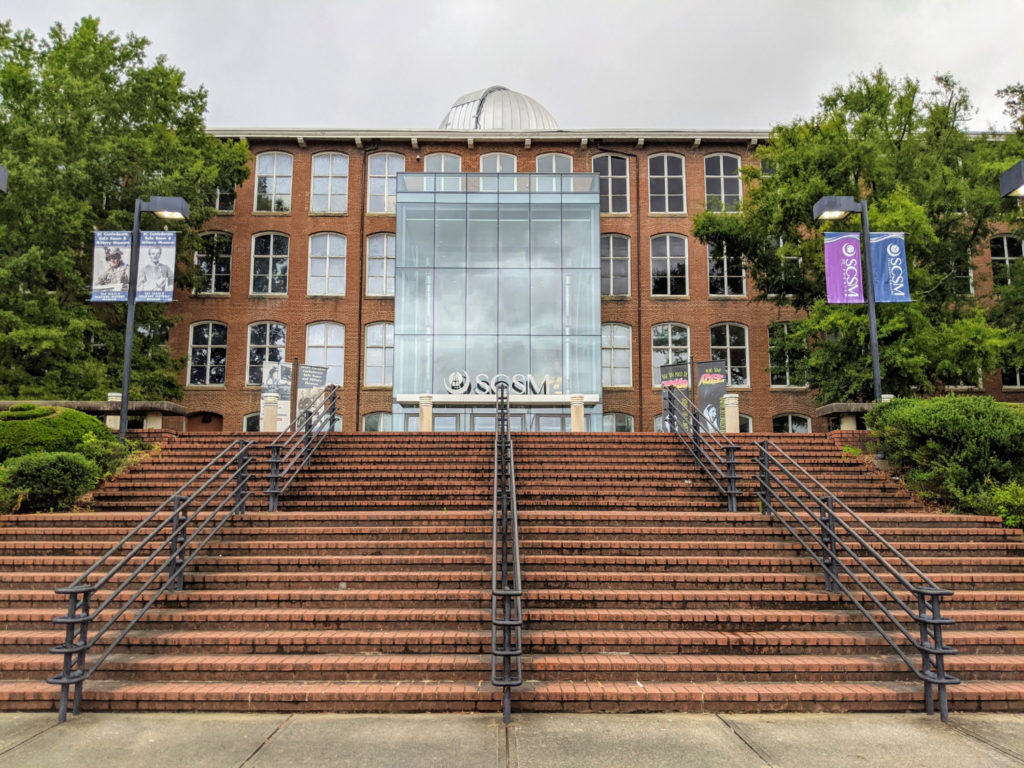
Be First to Comment